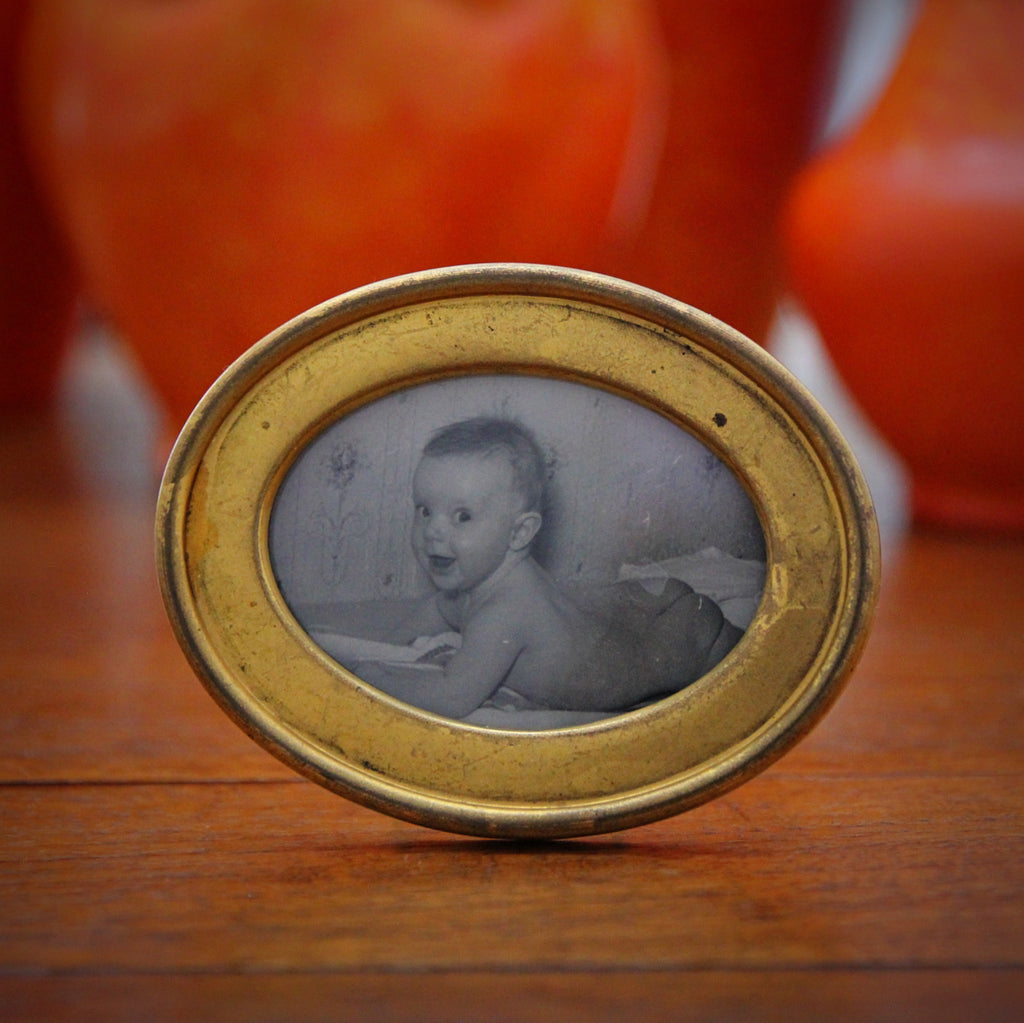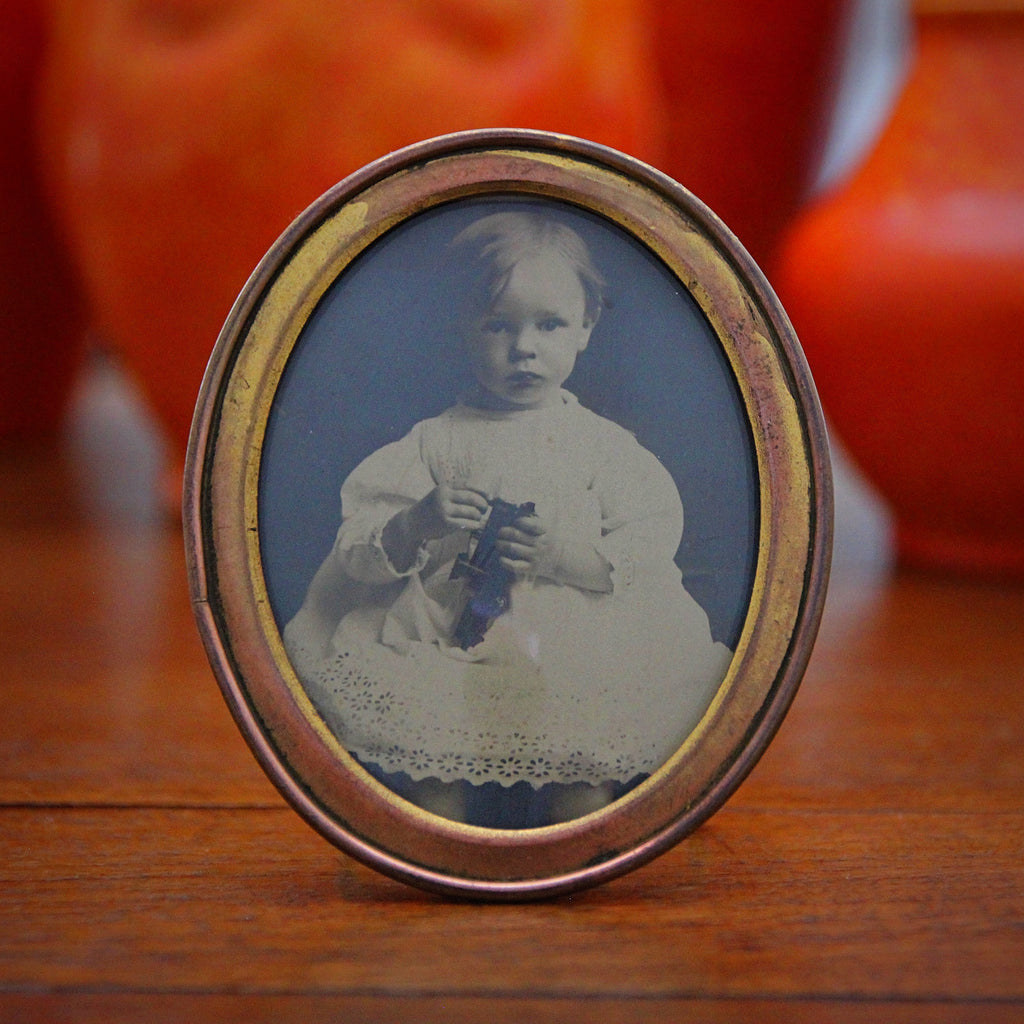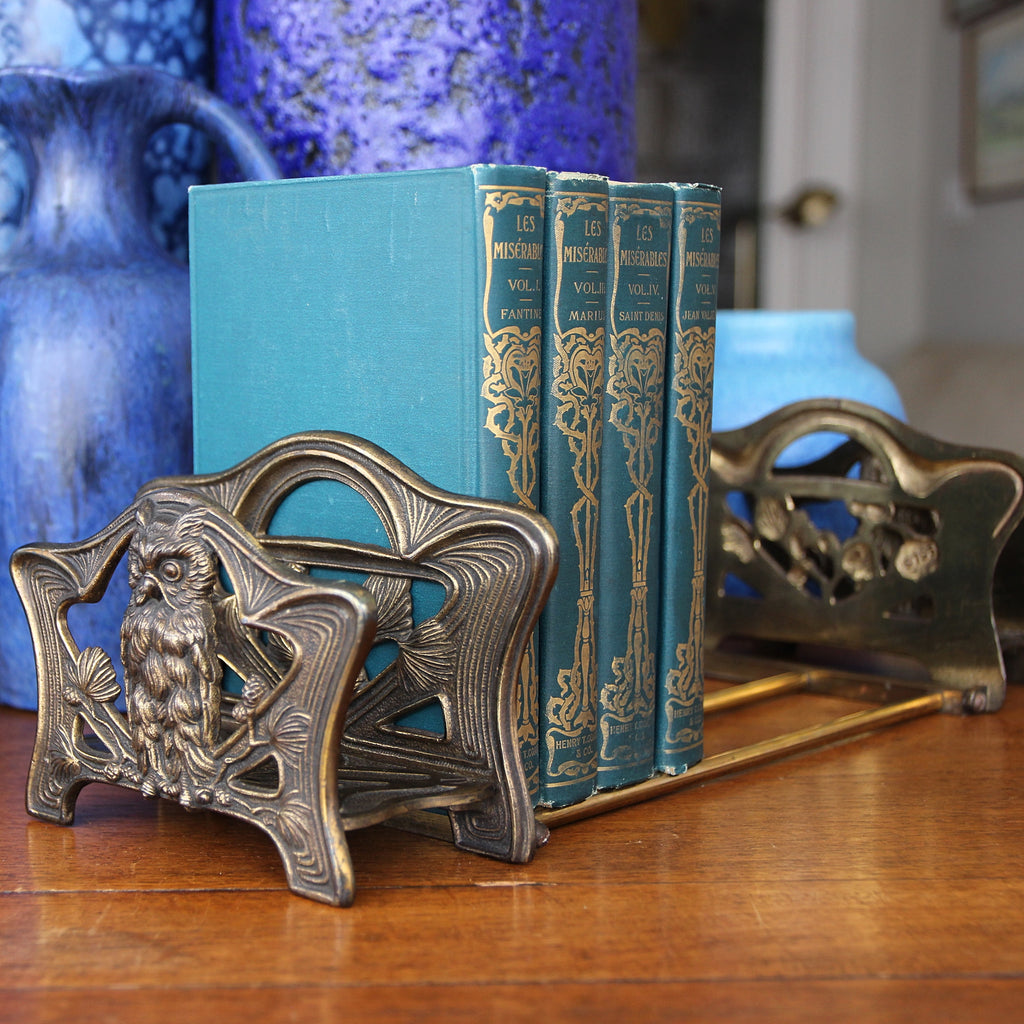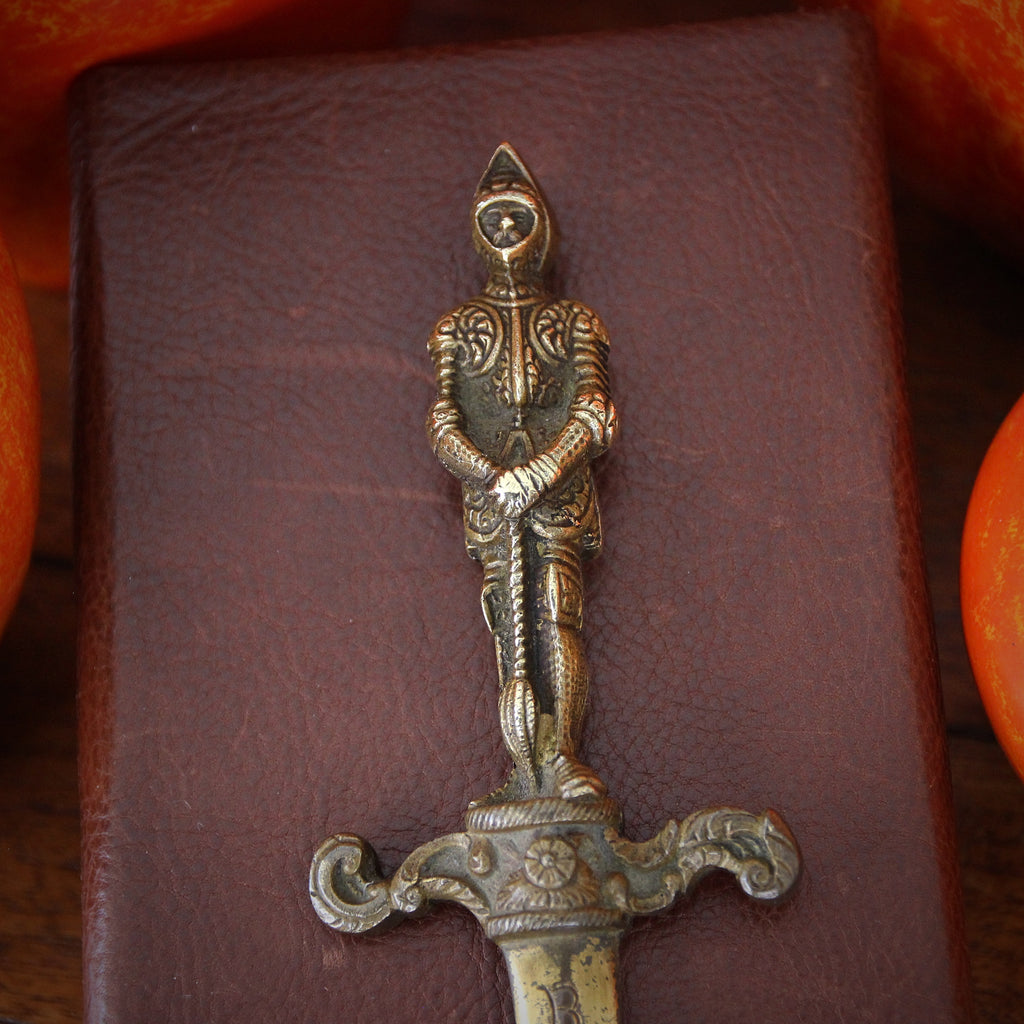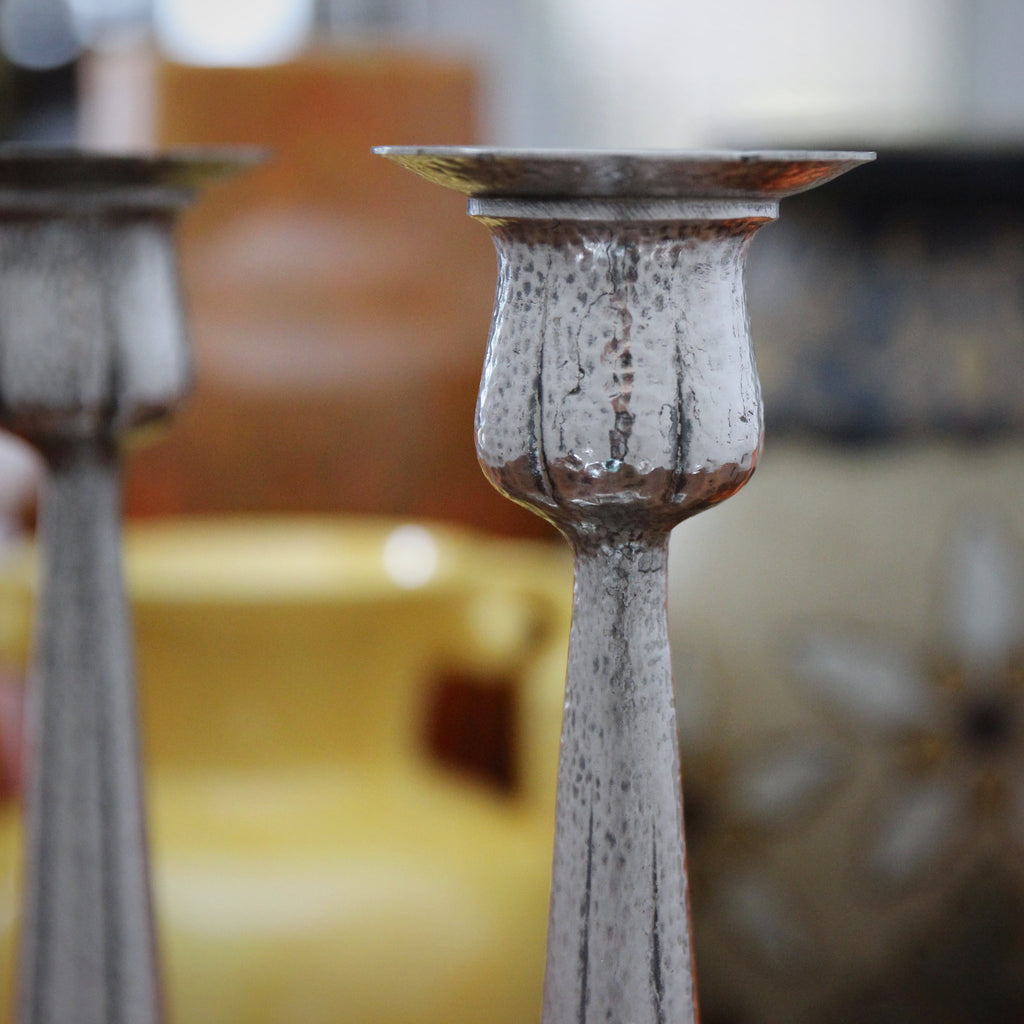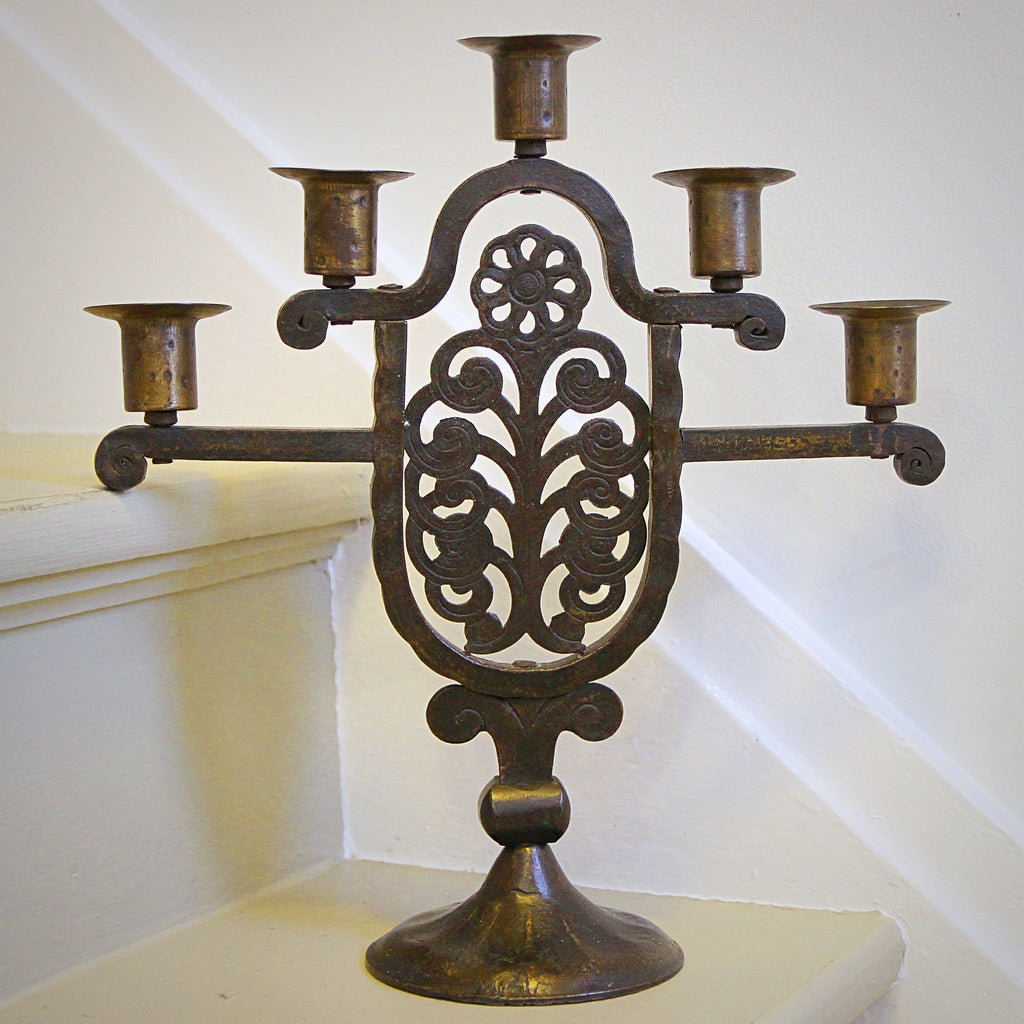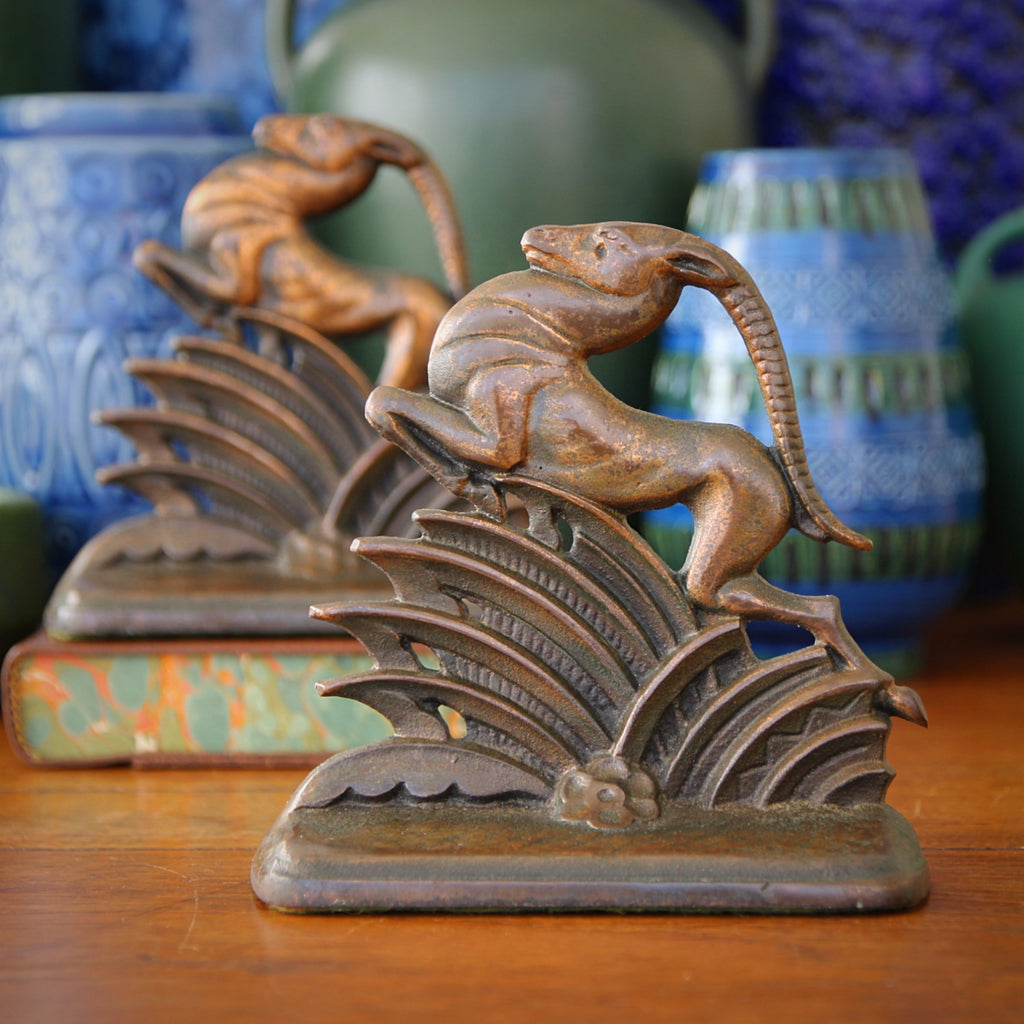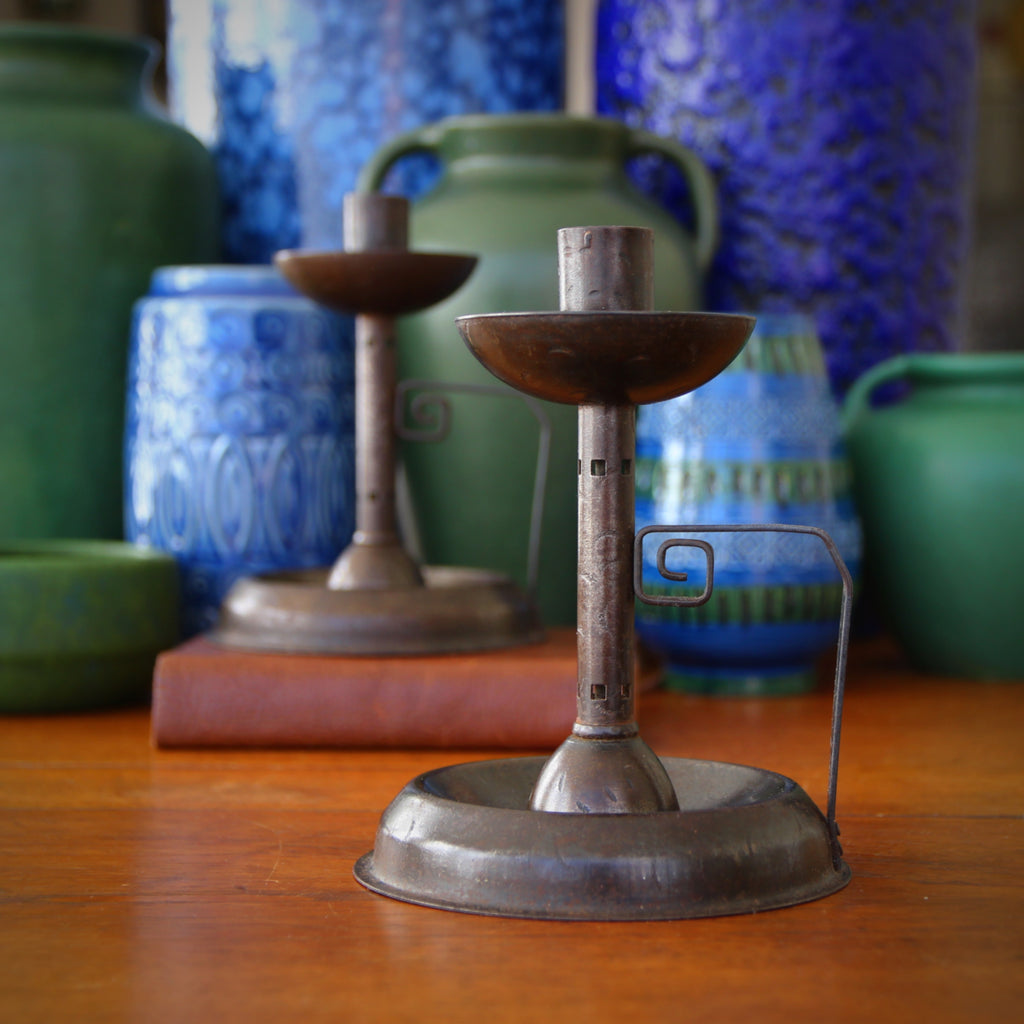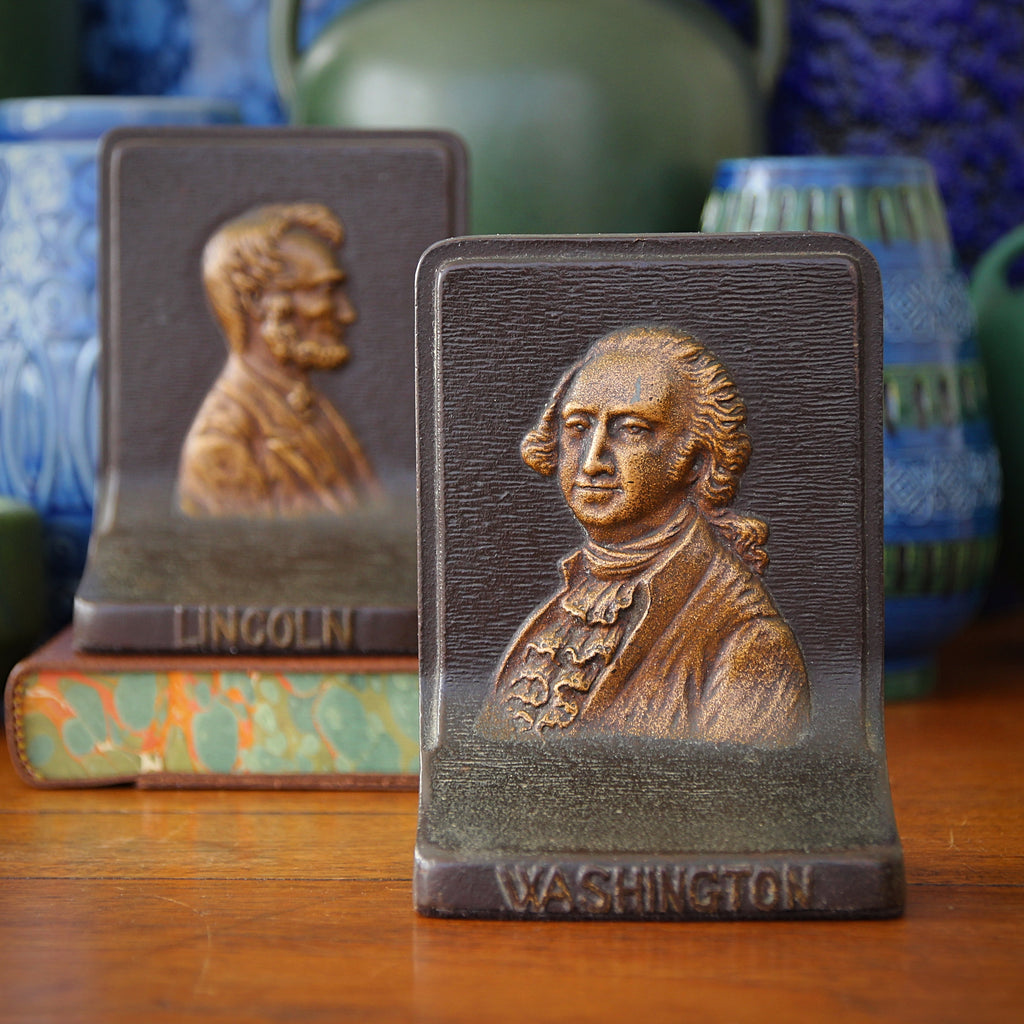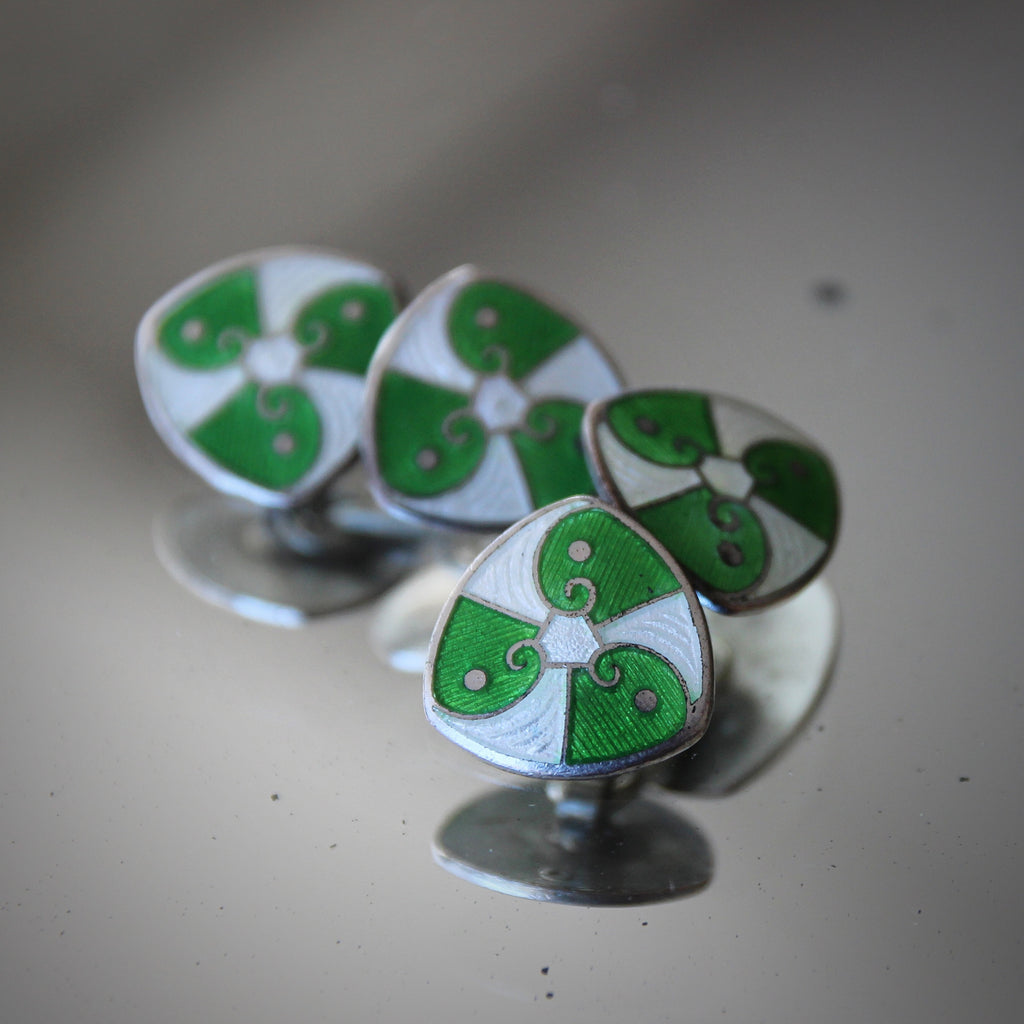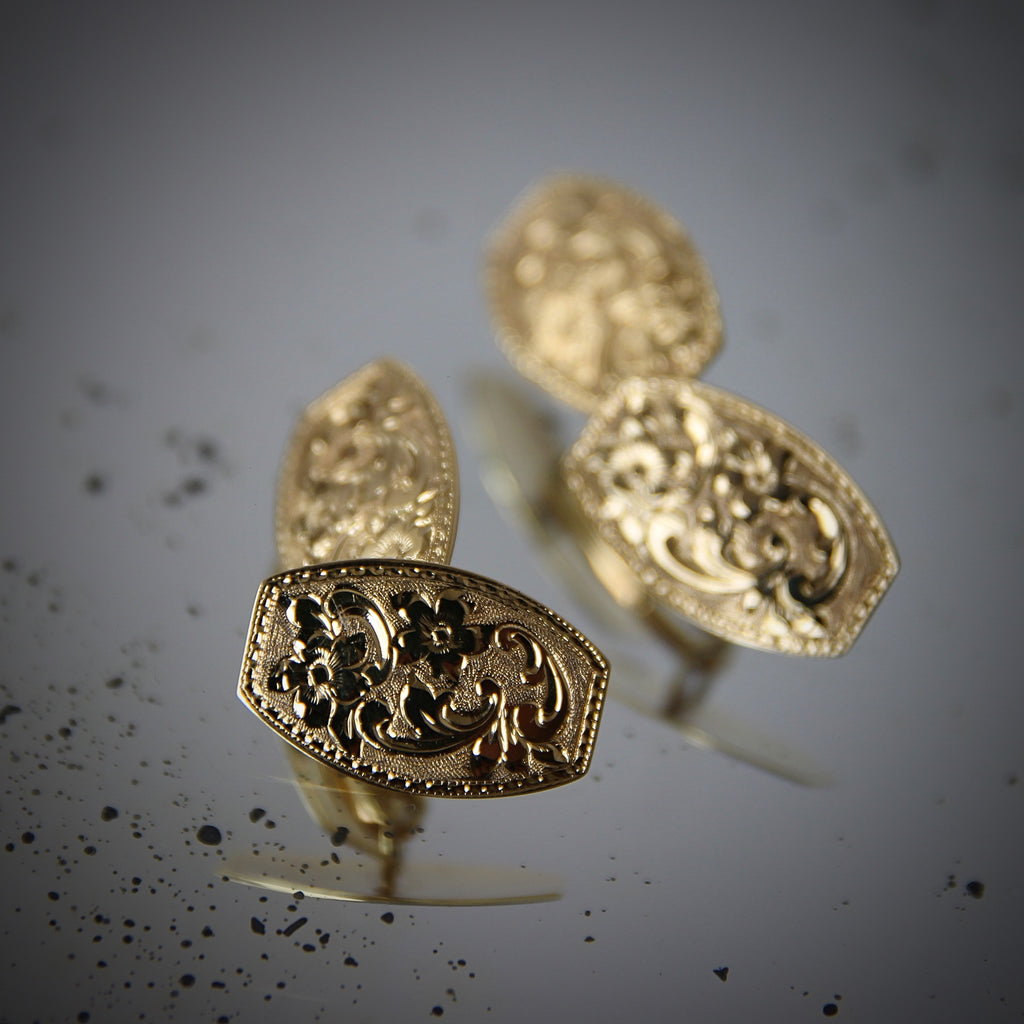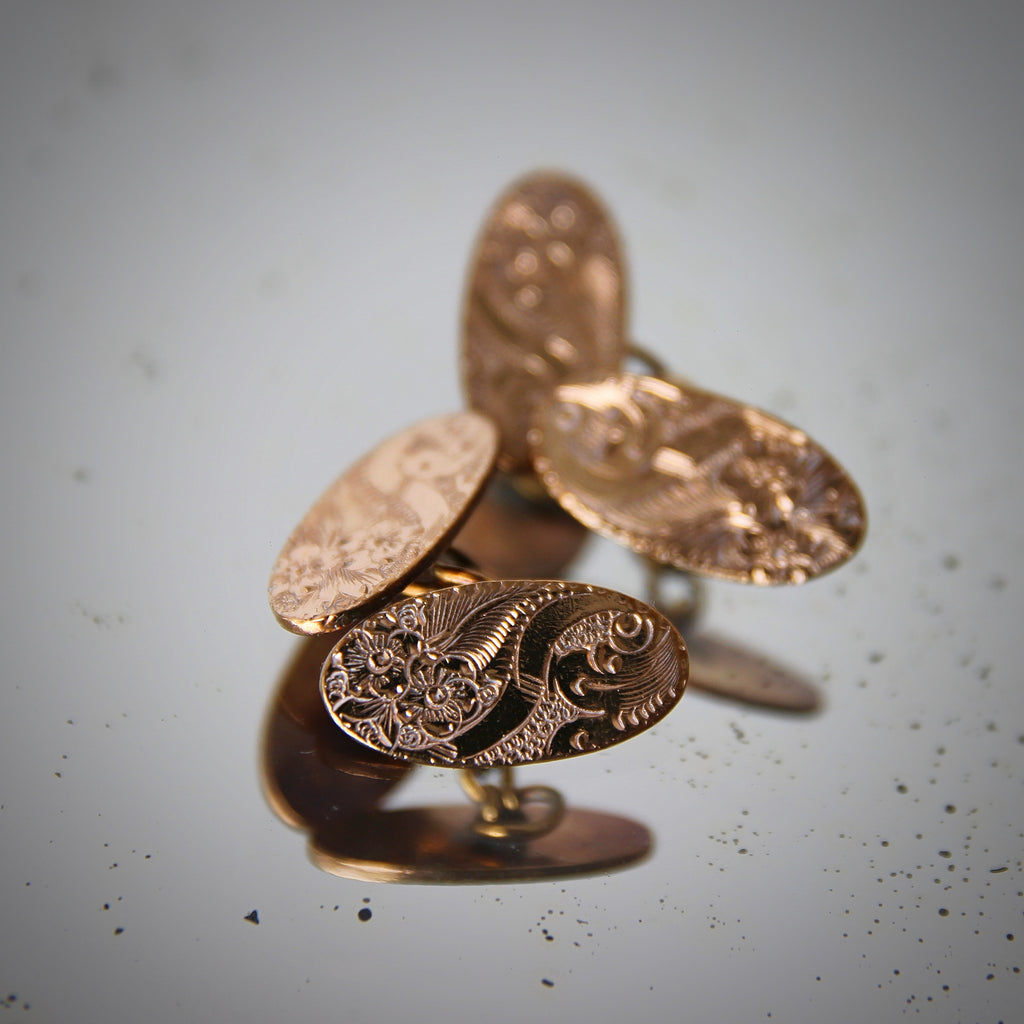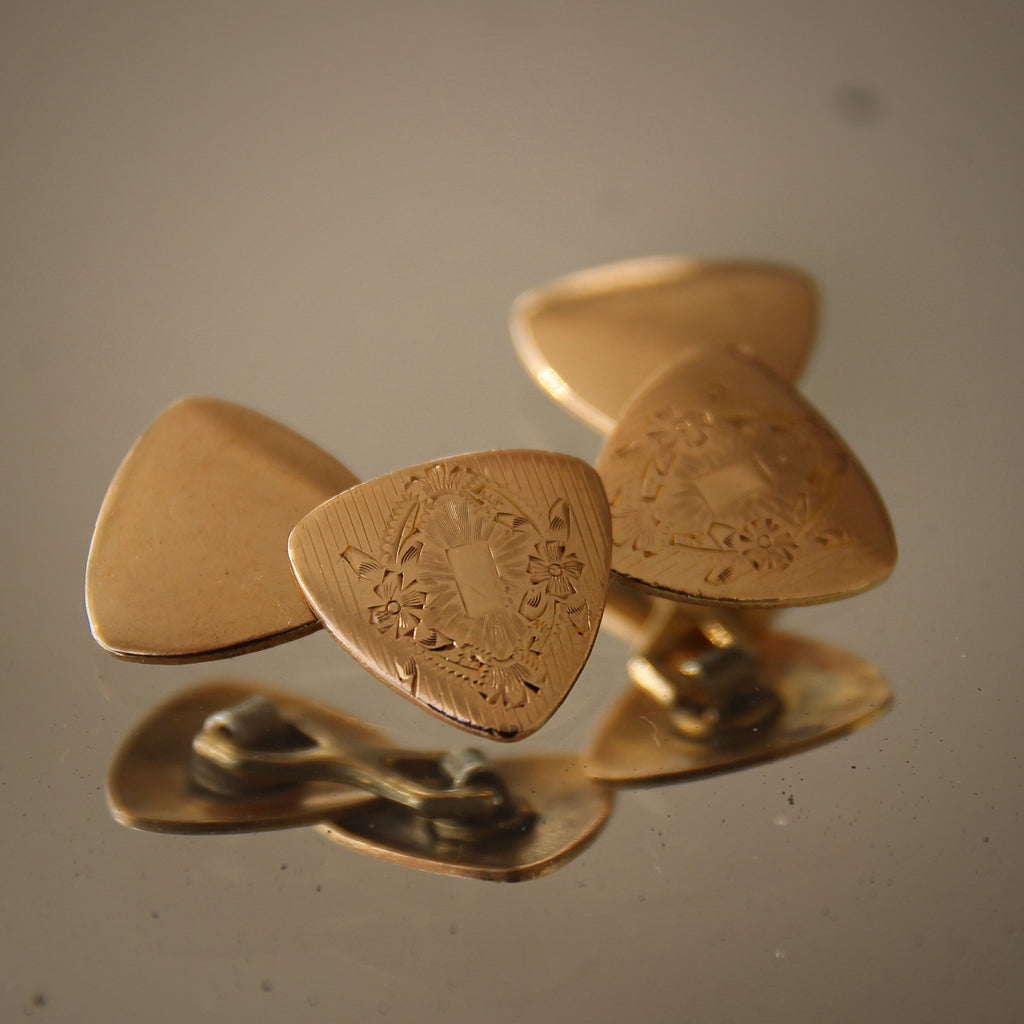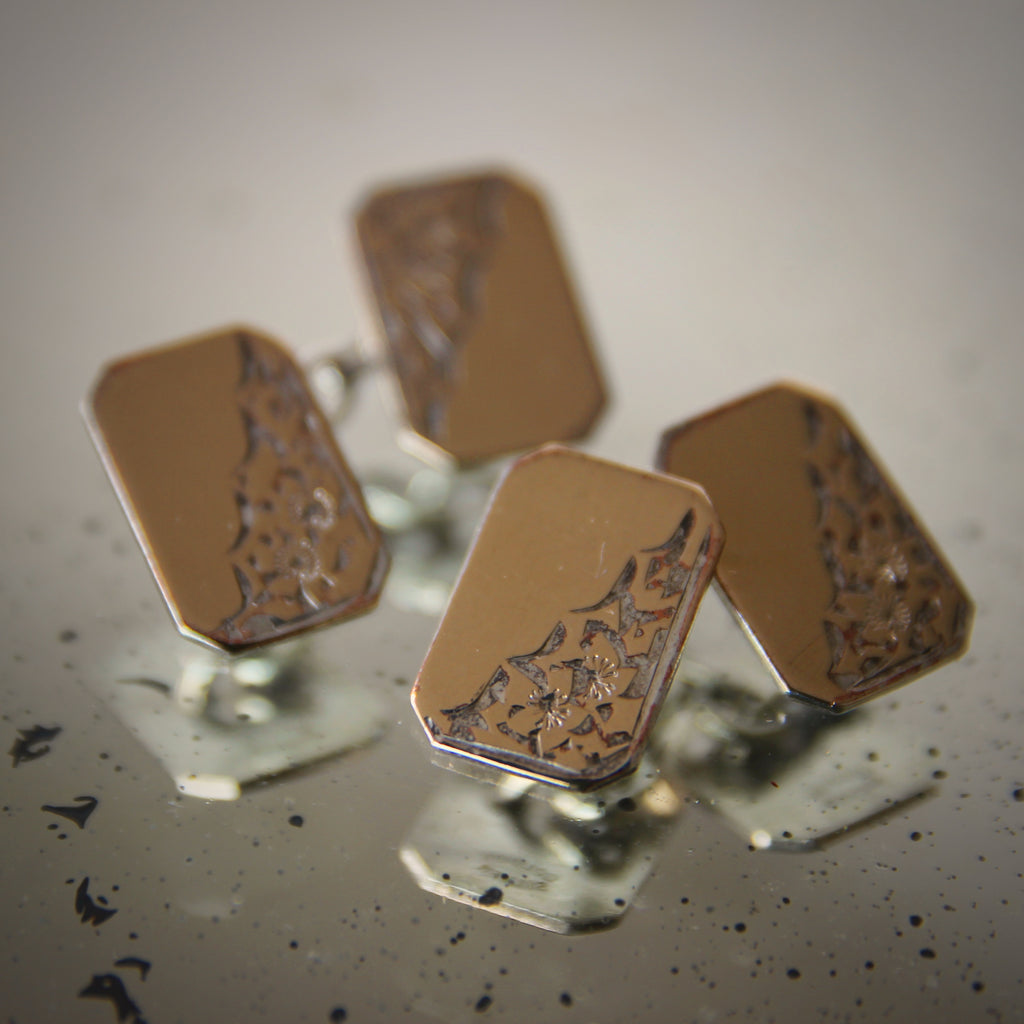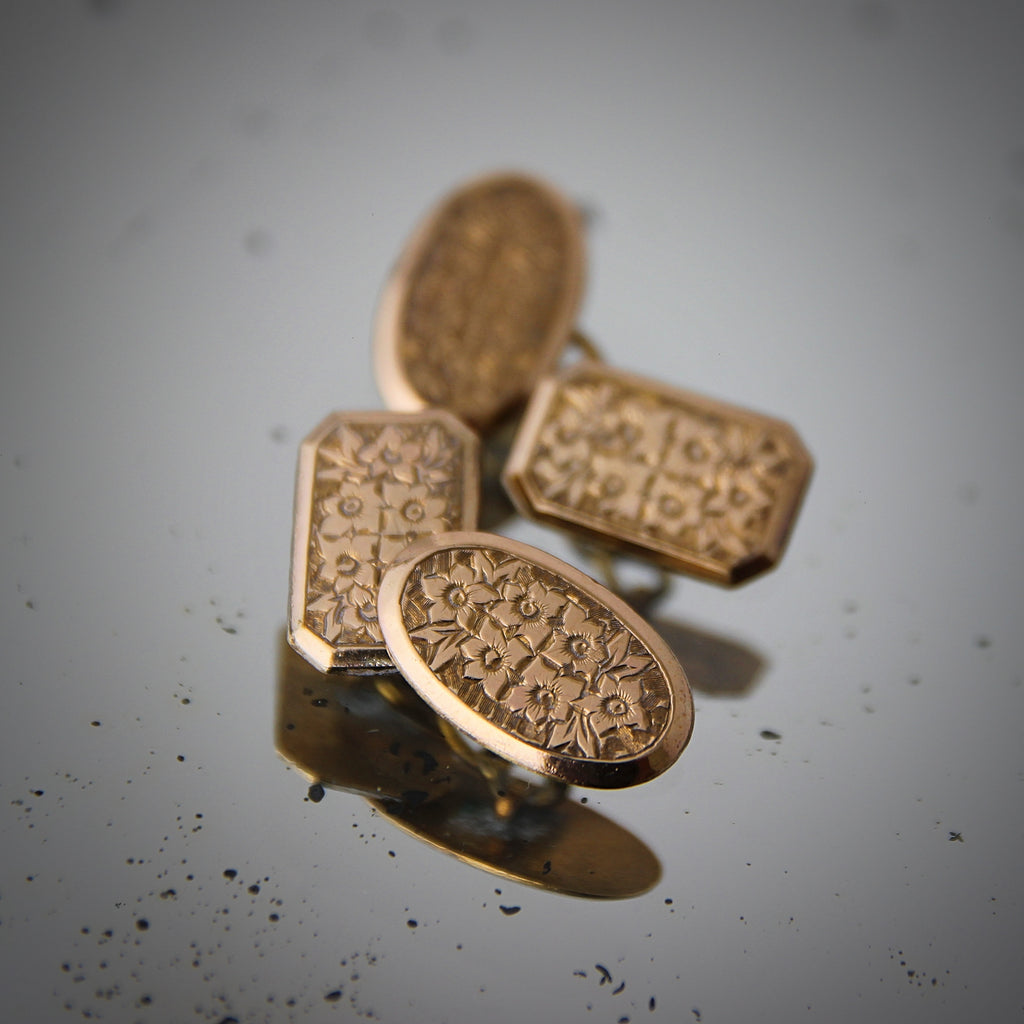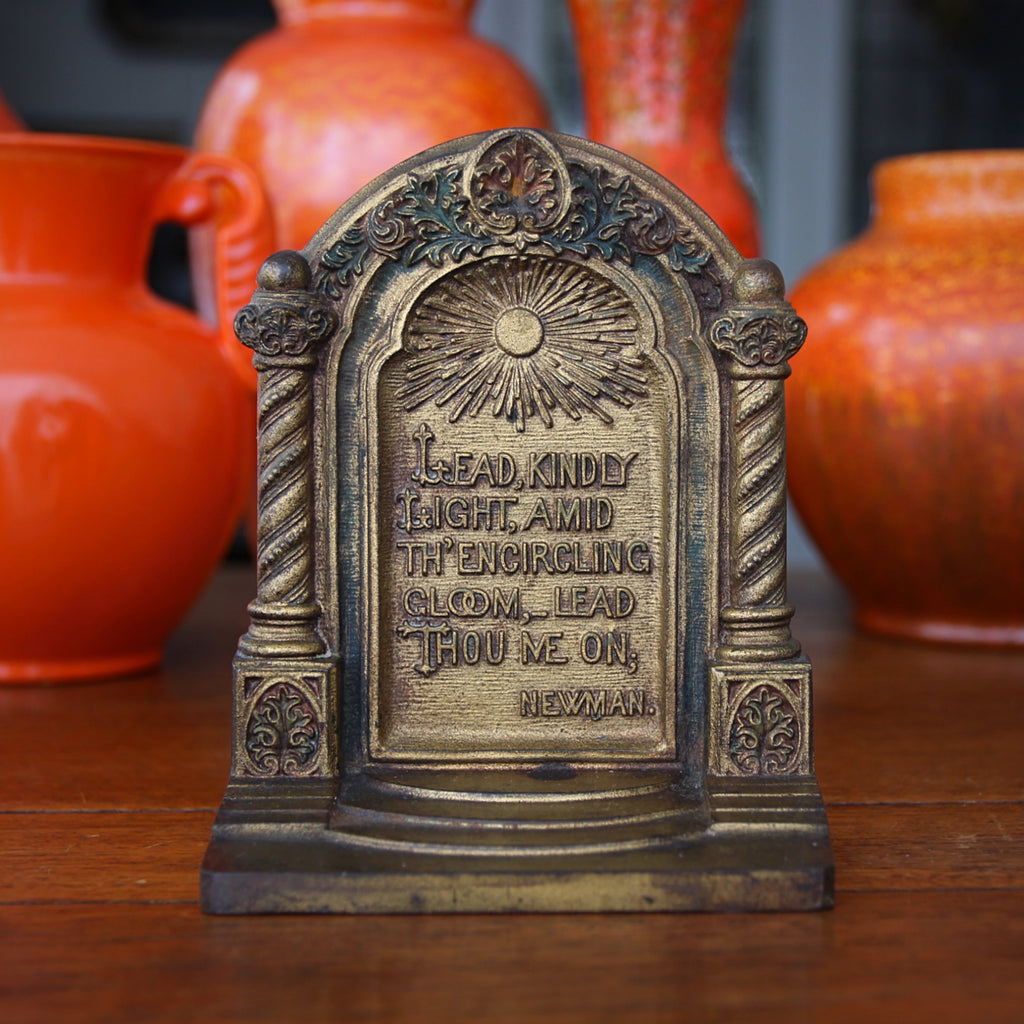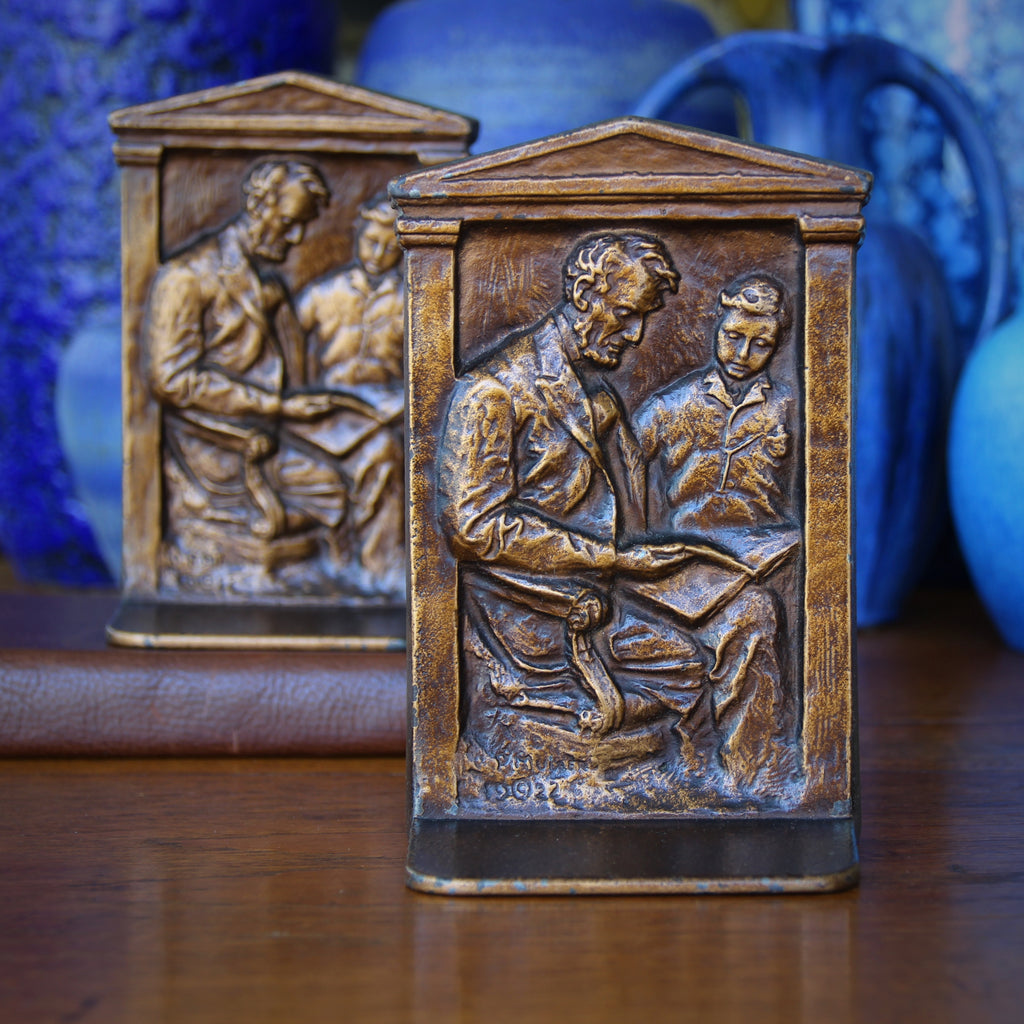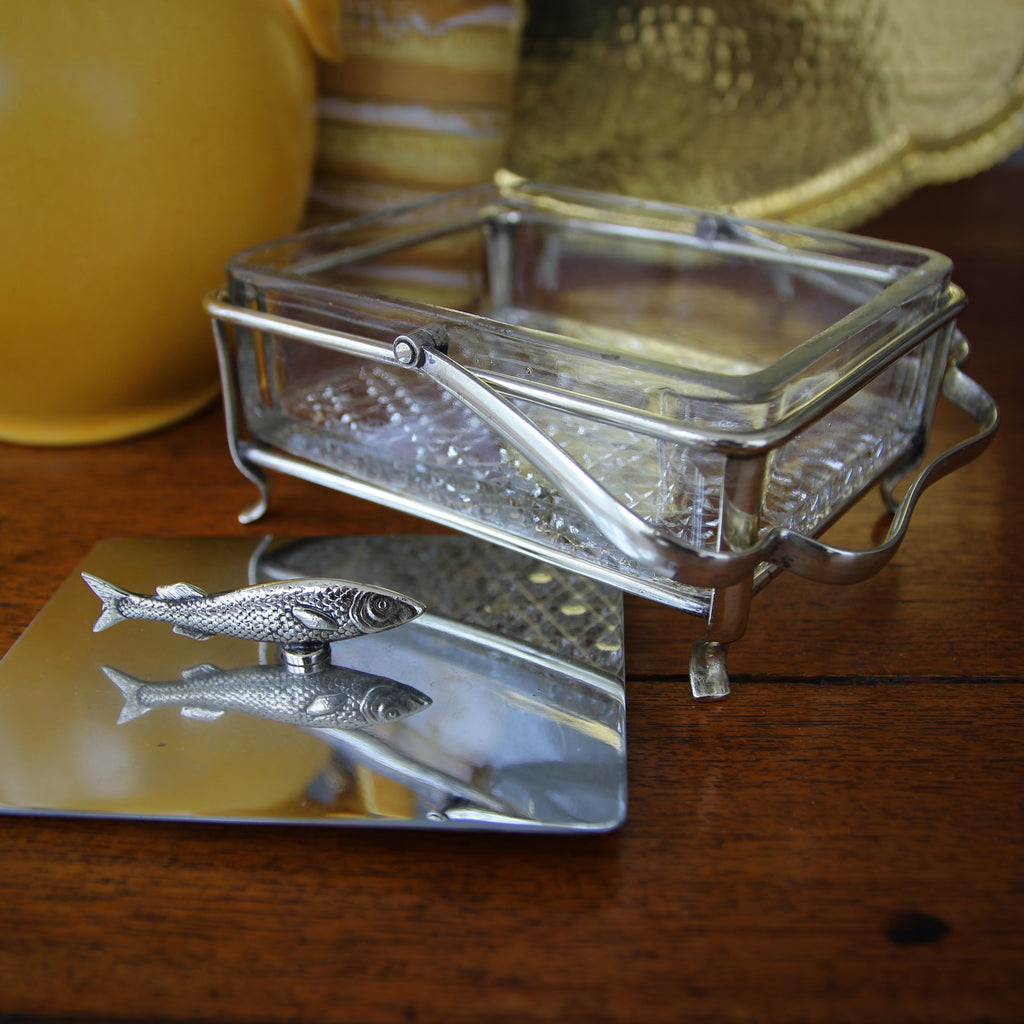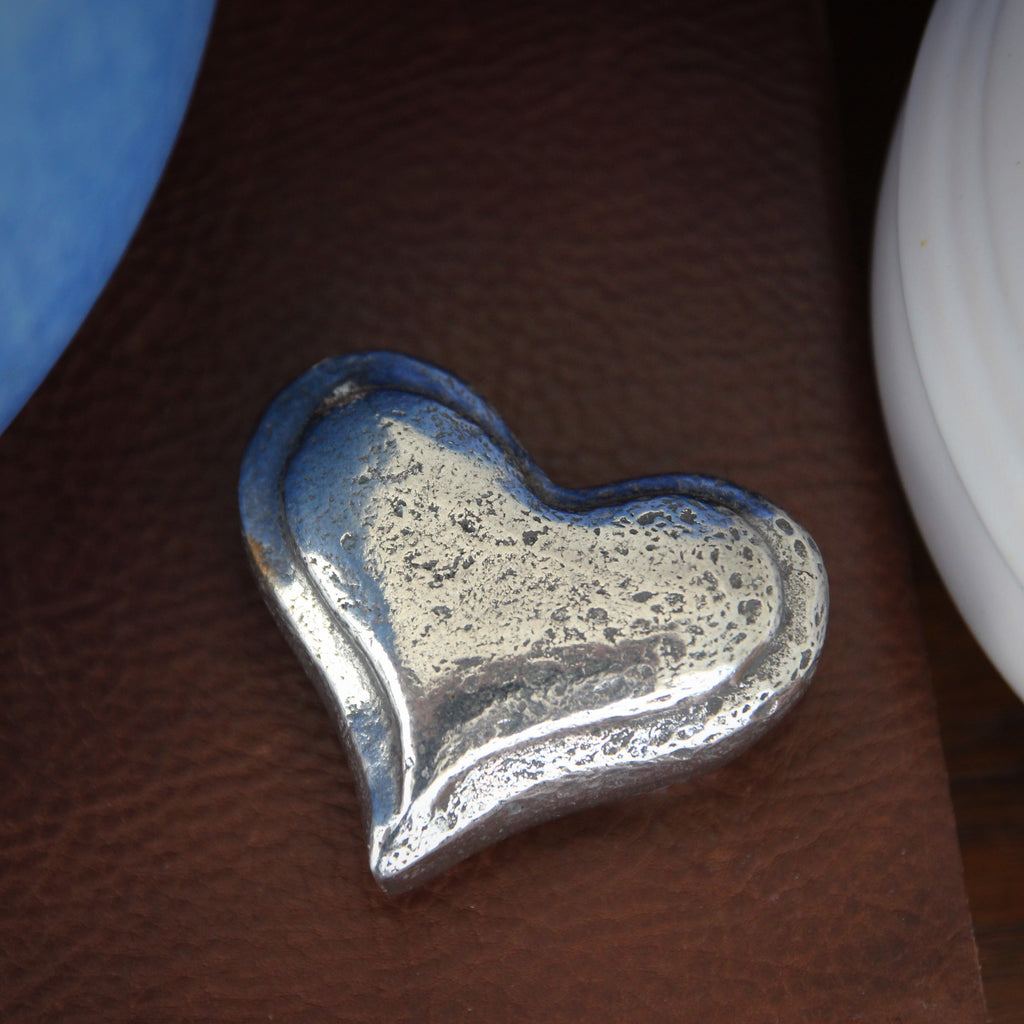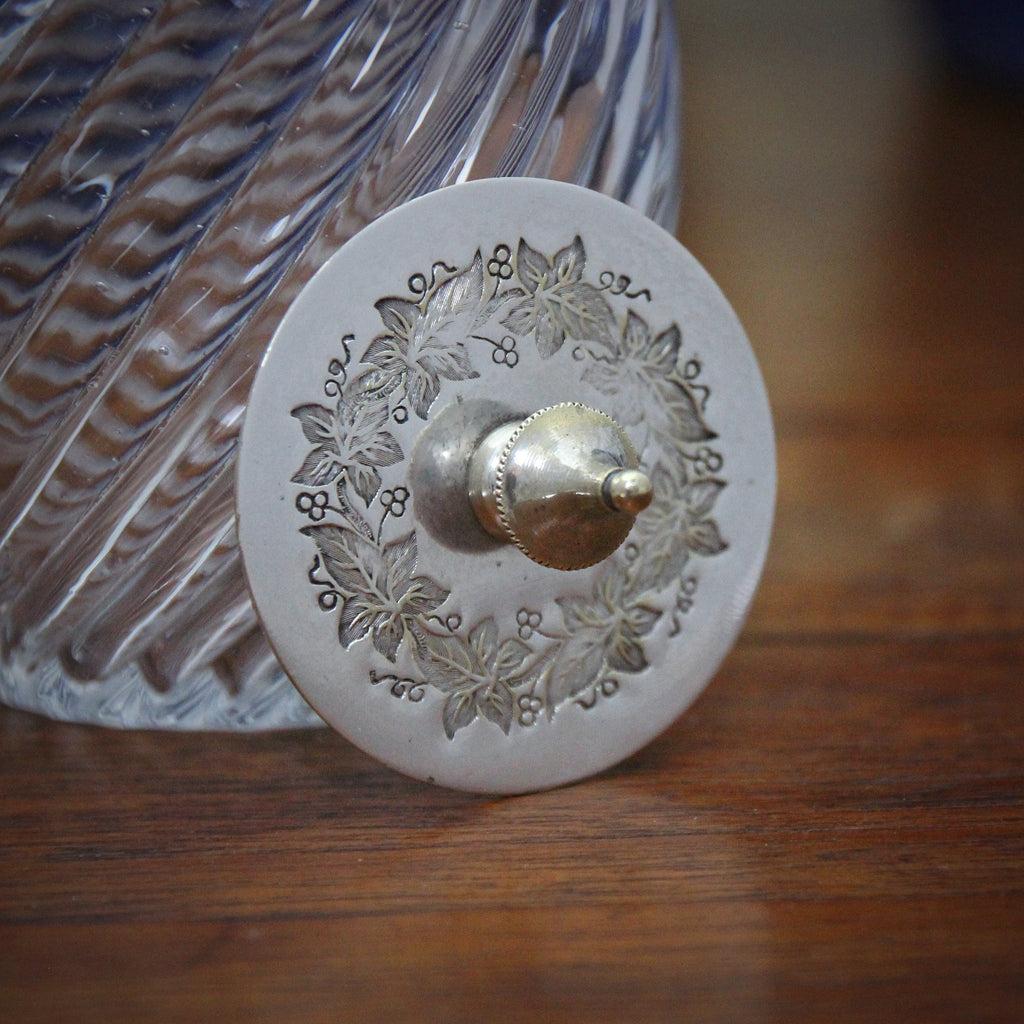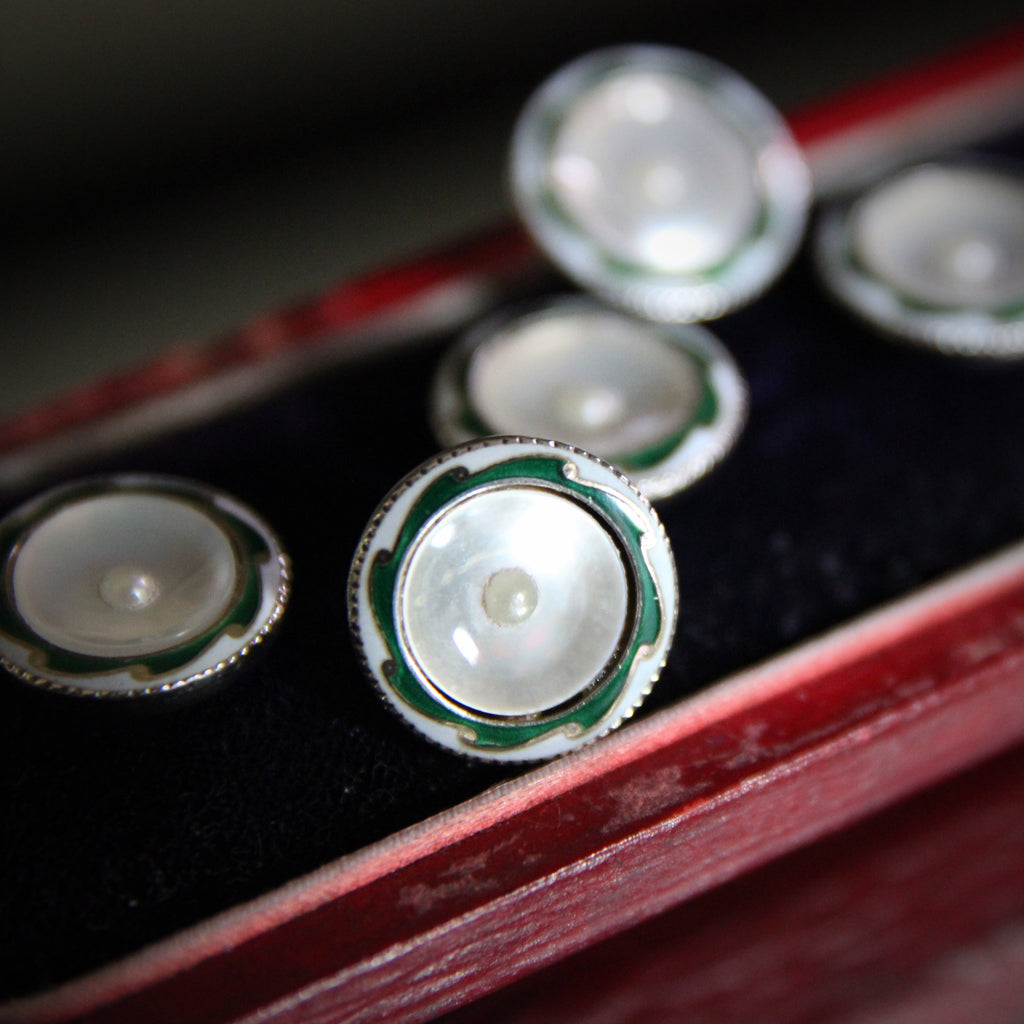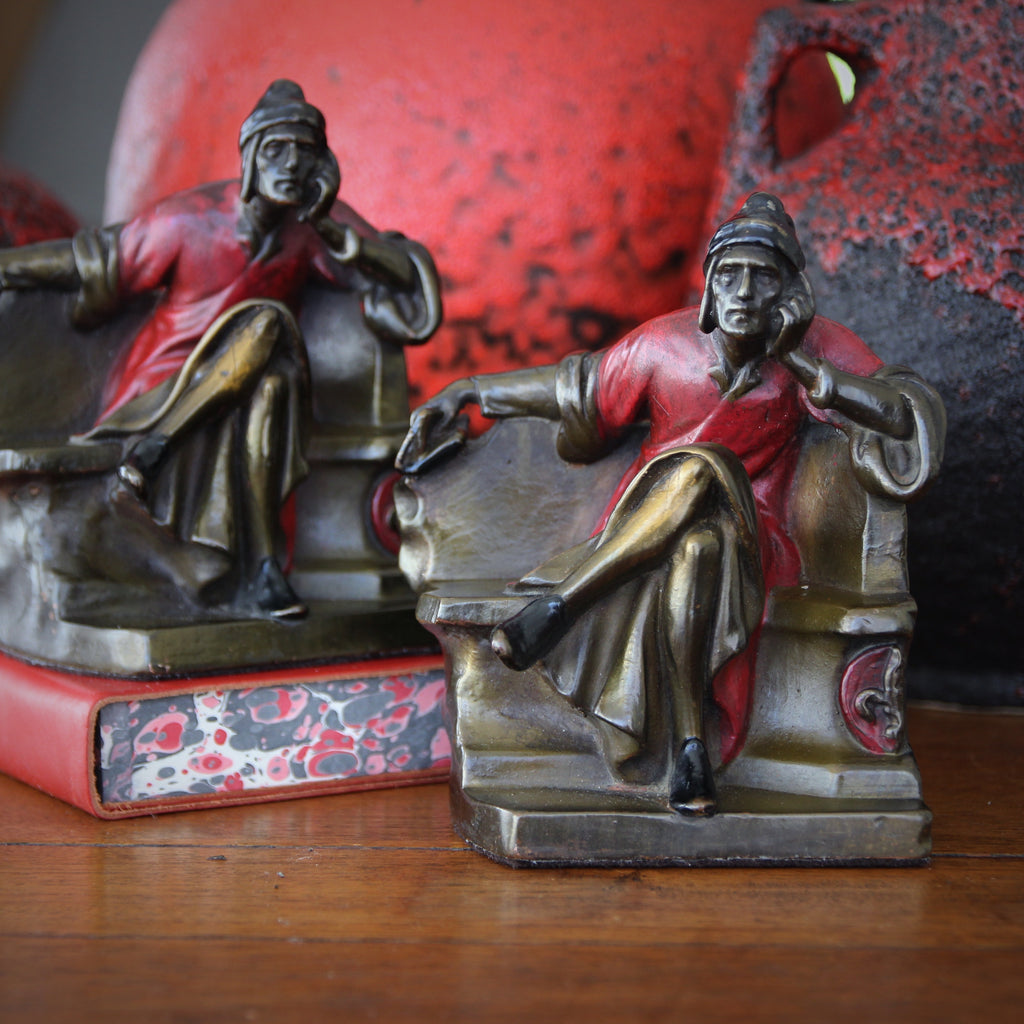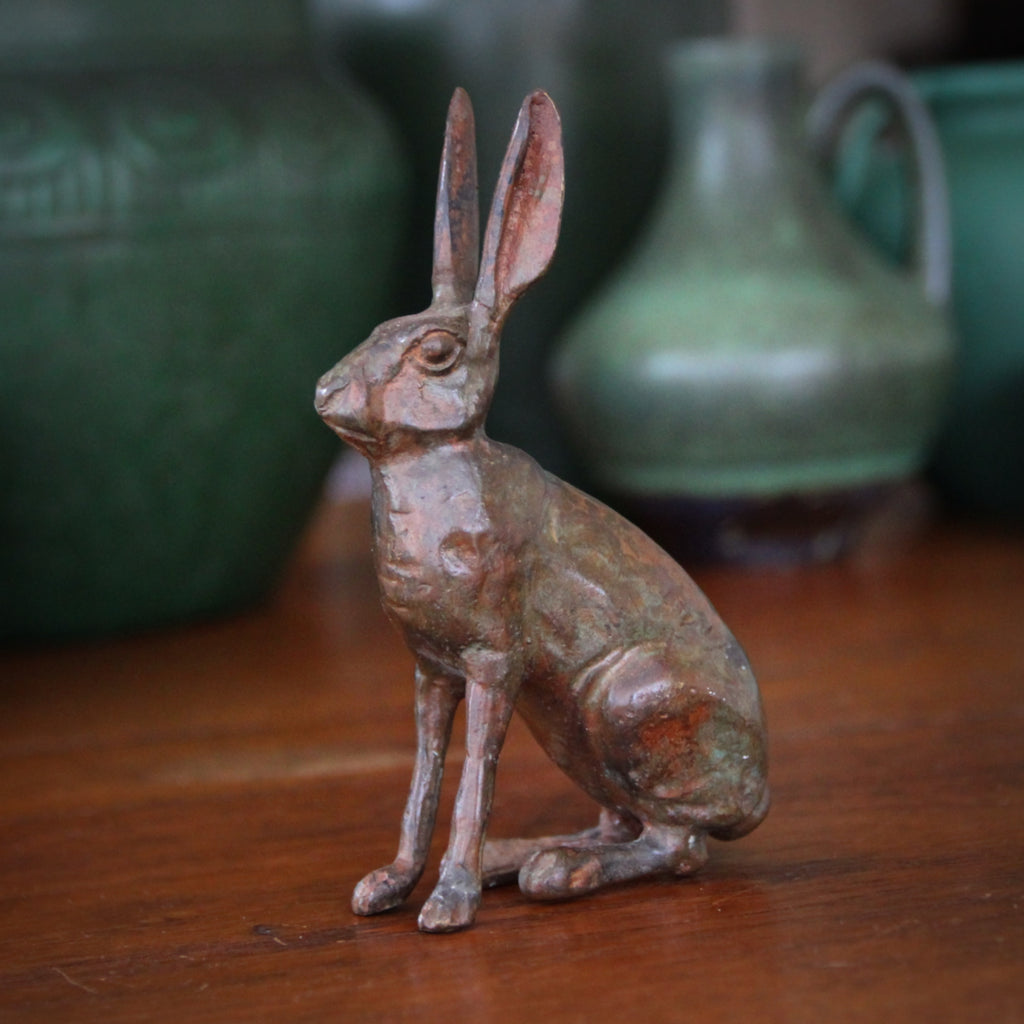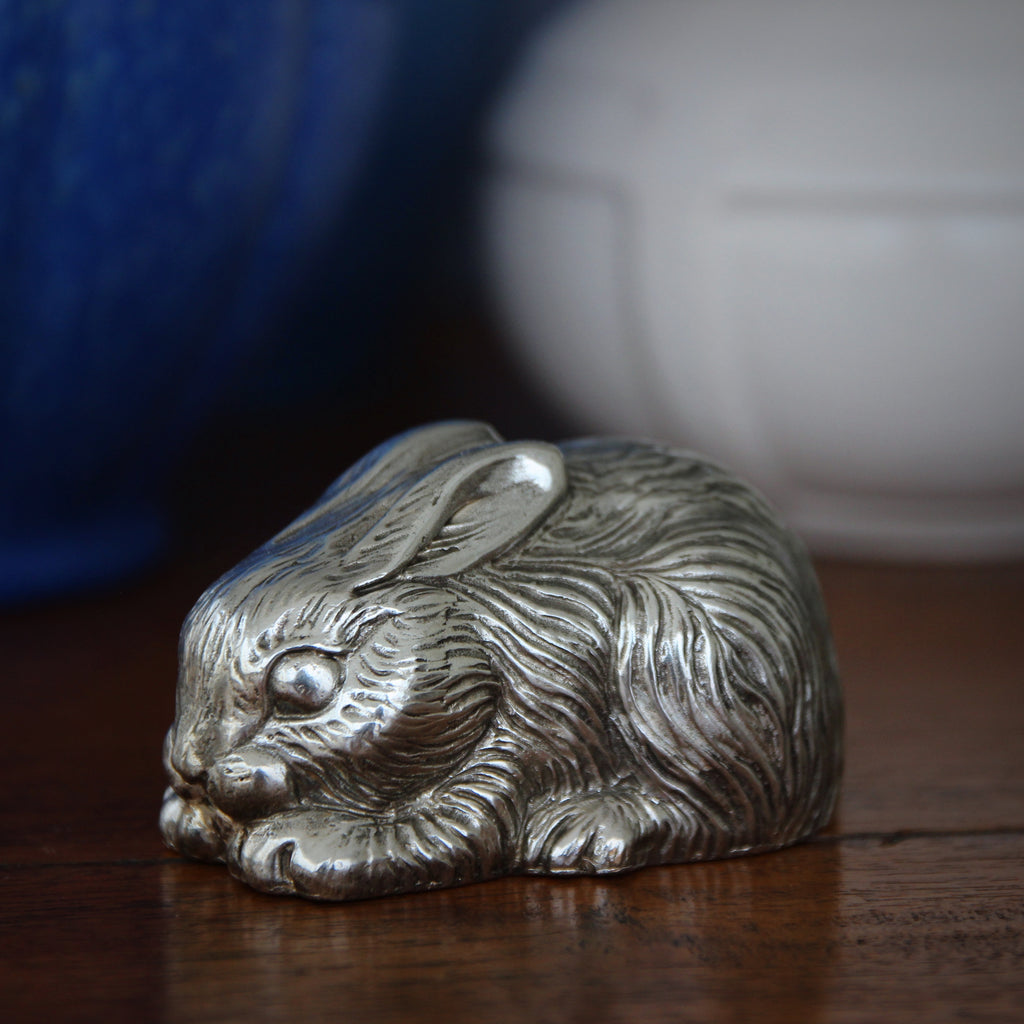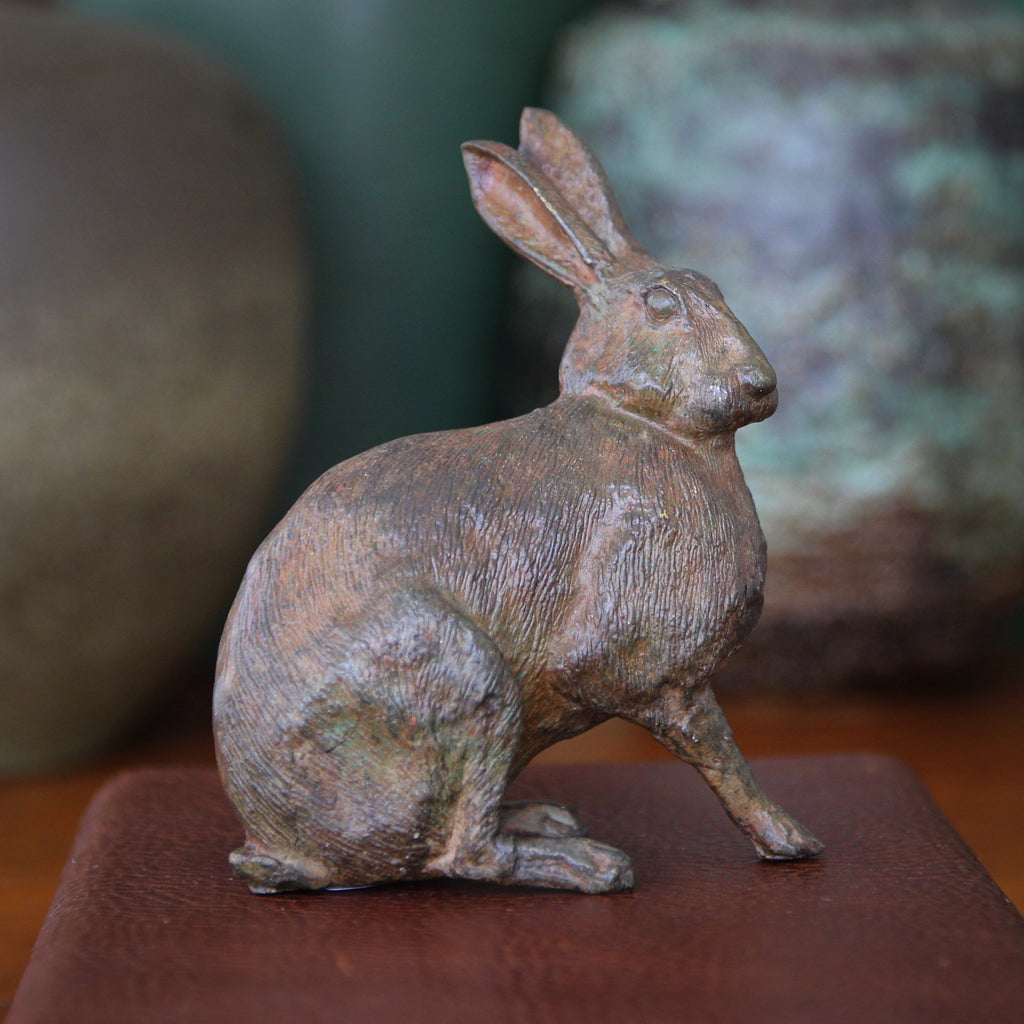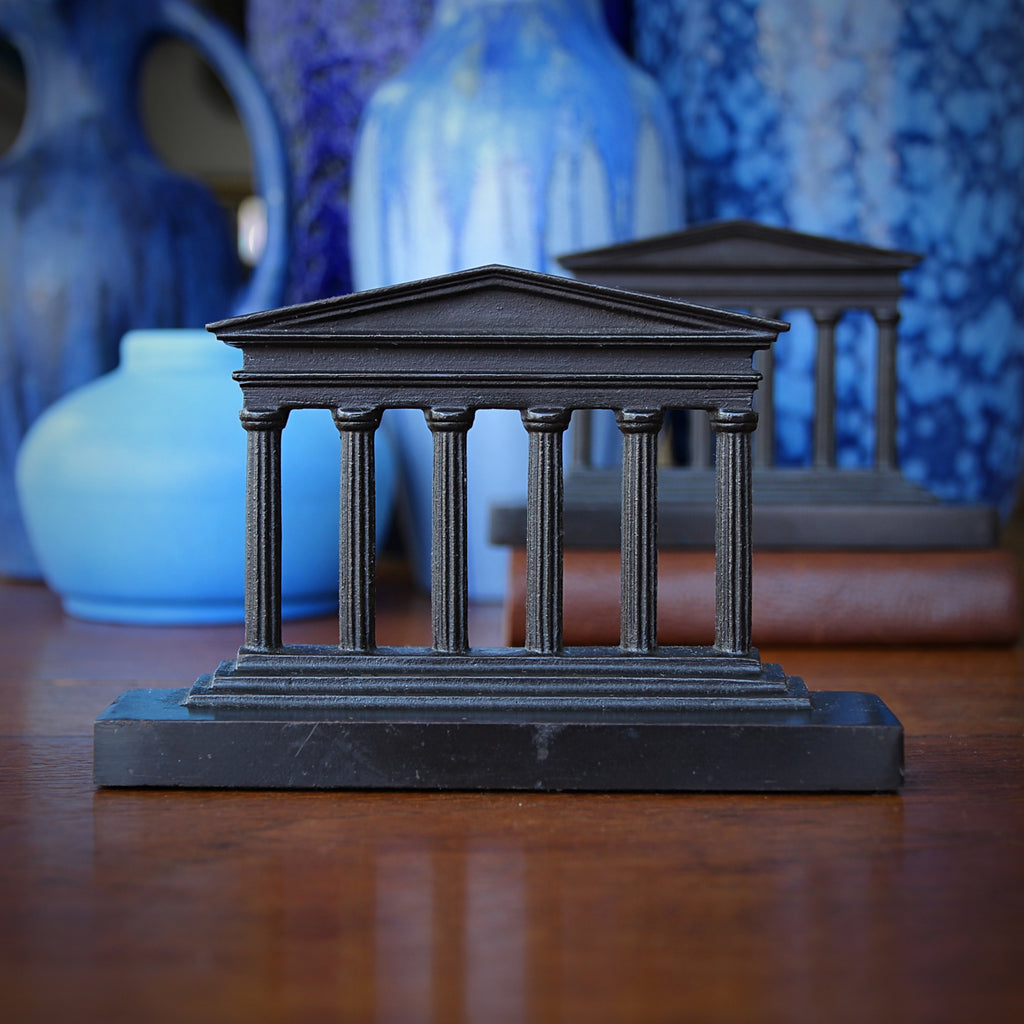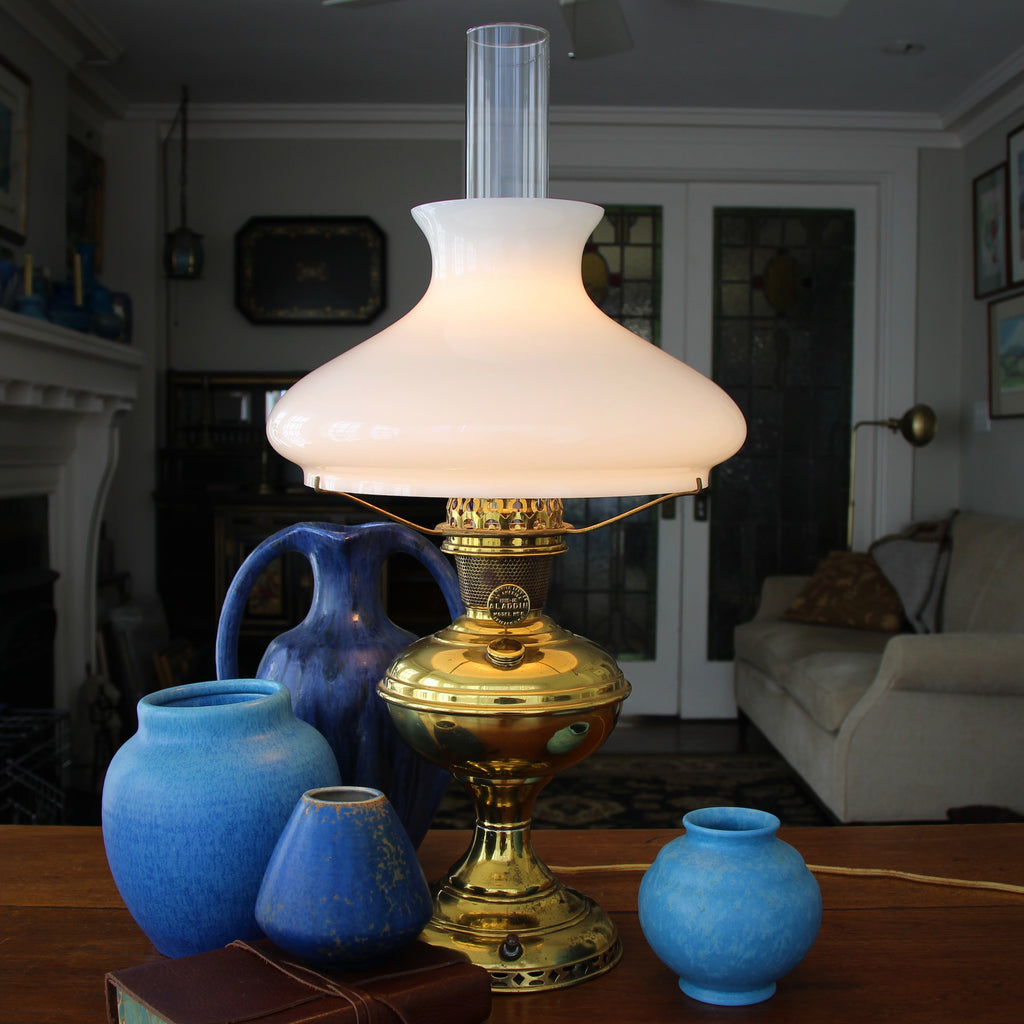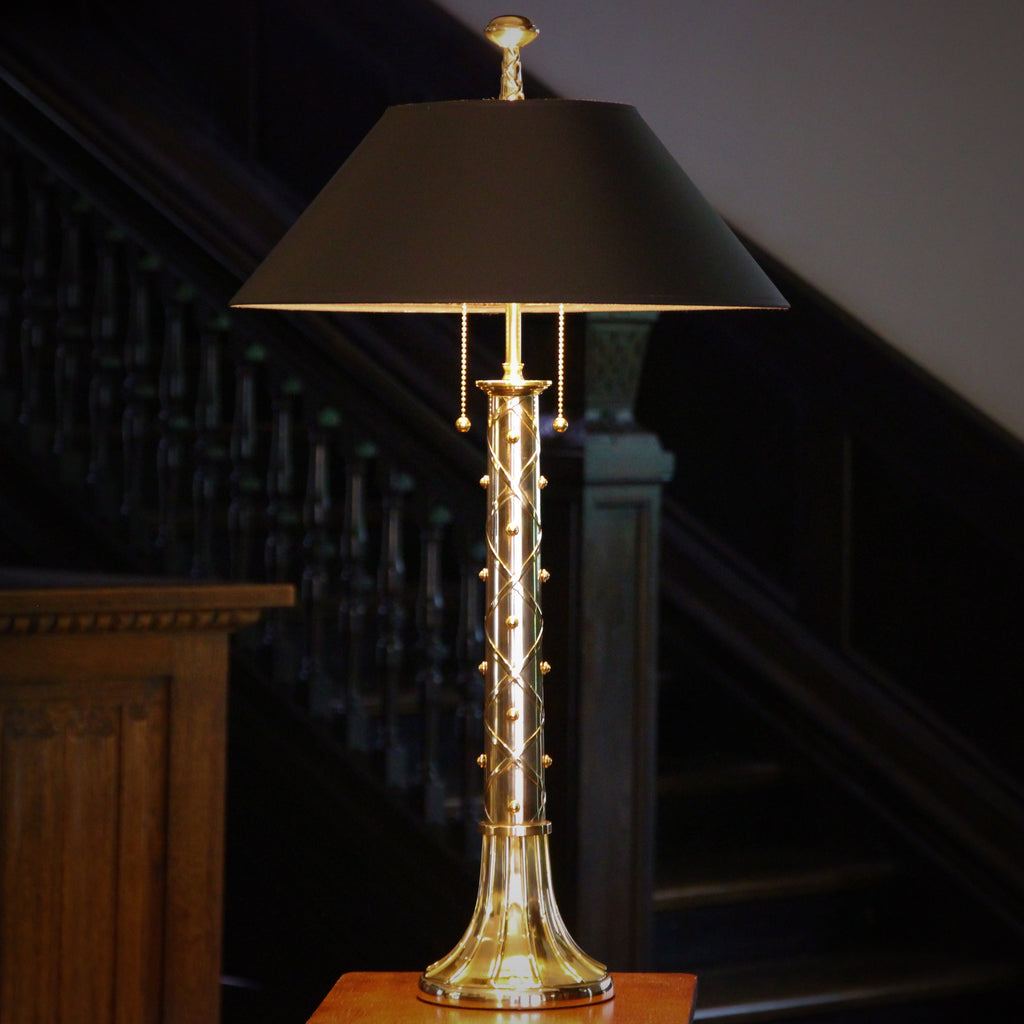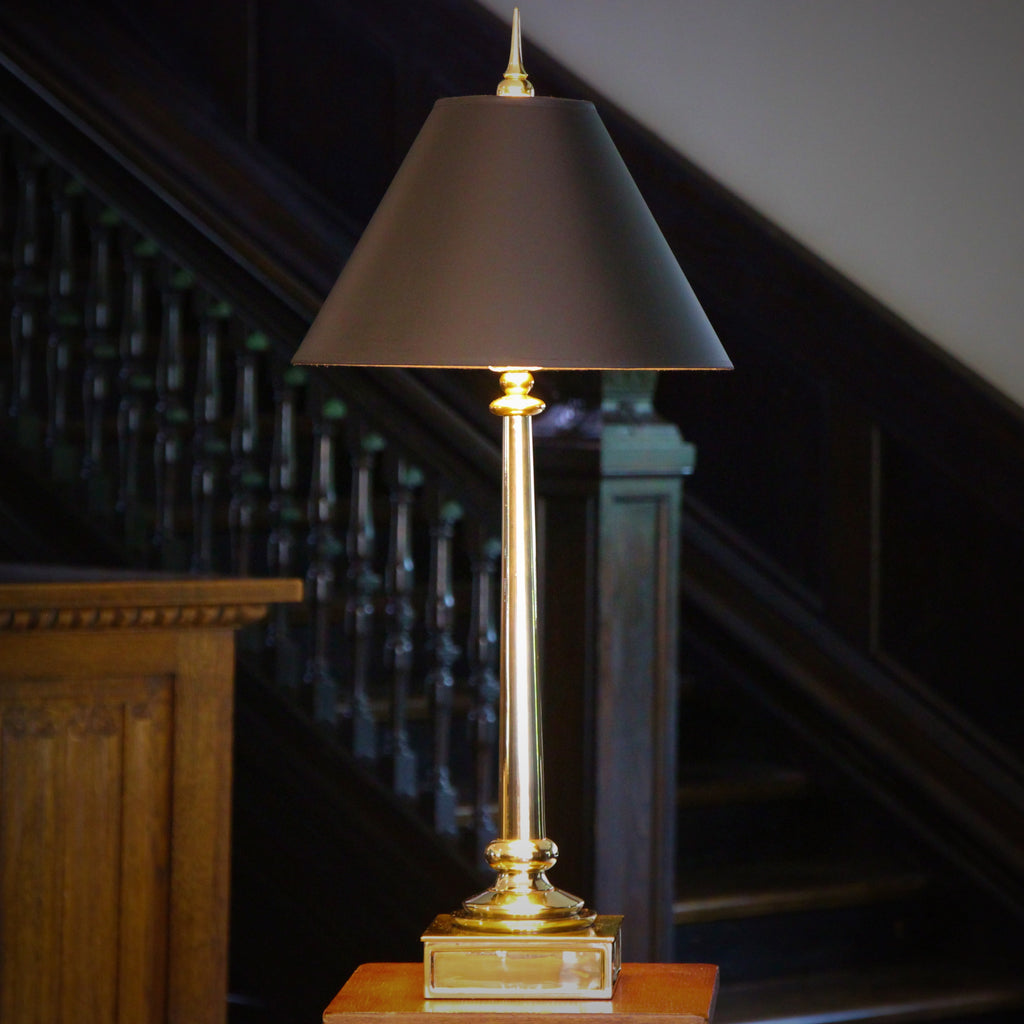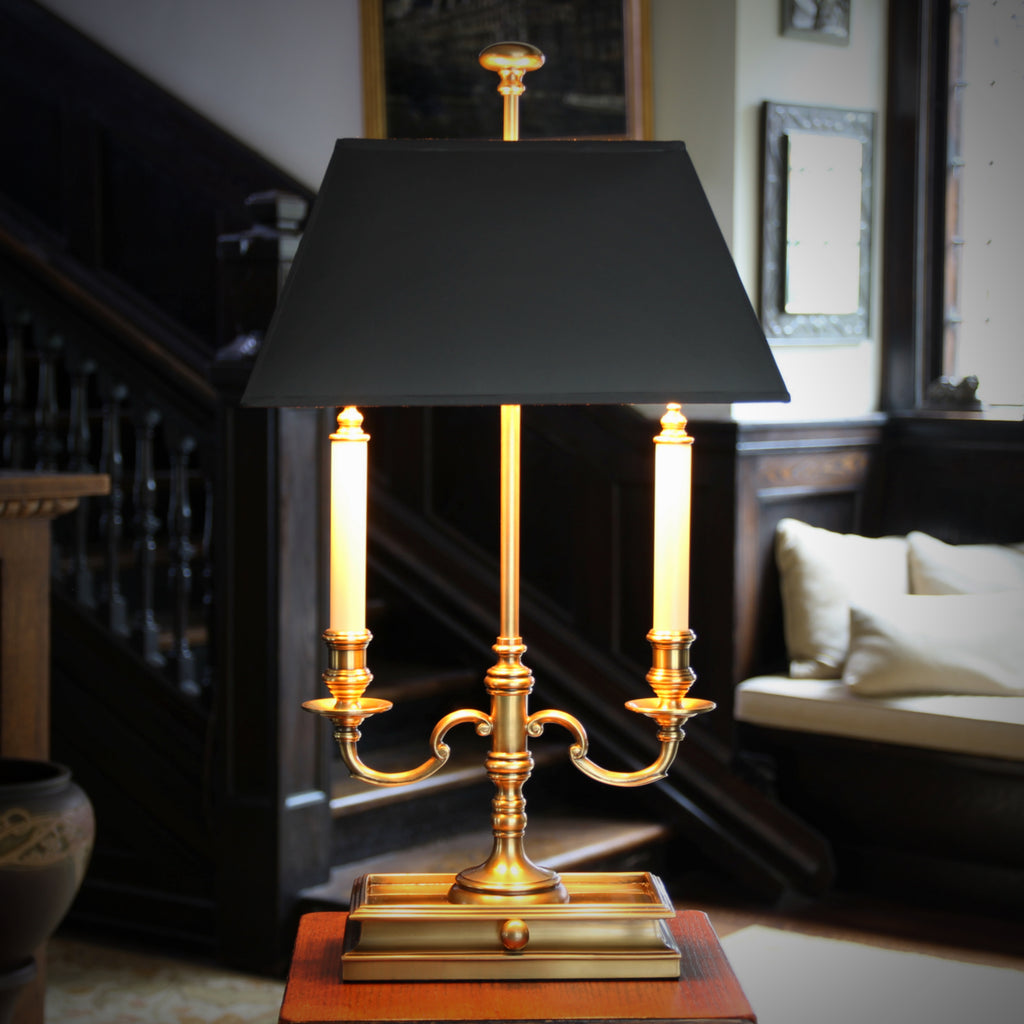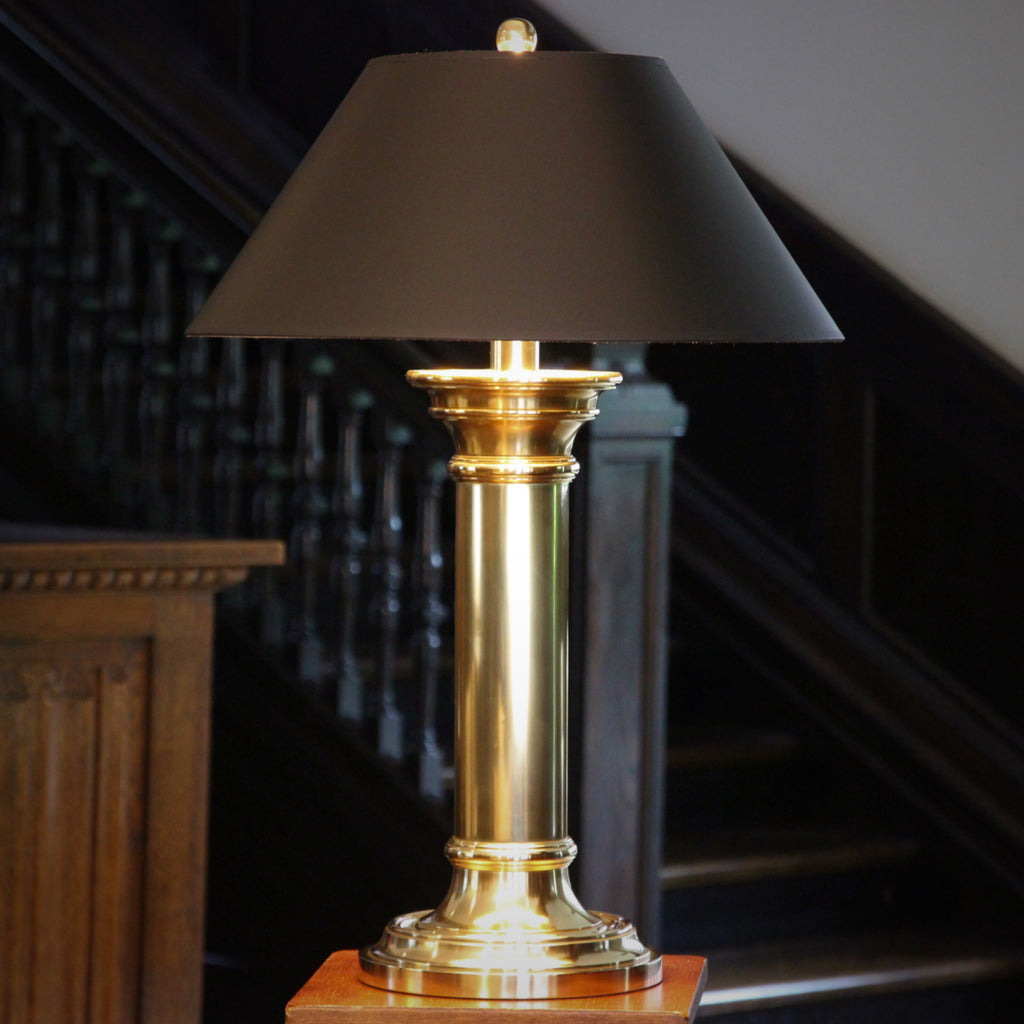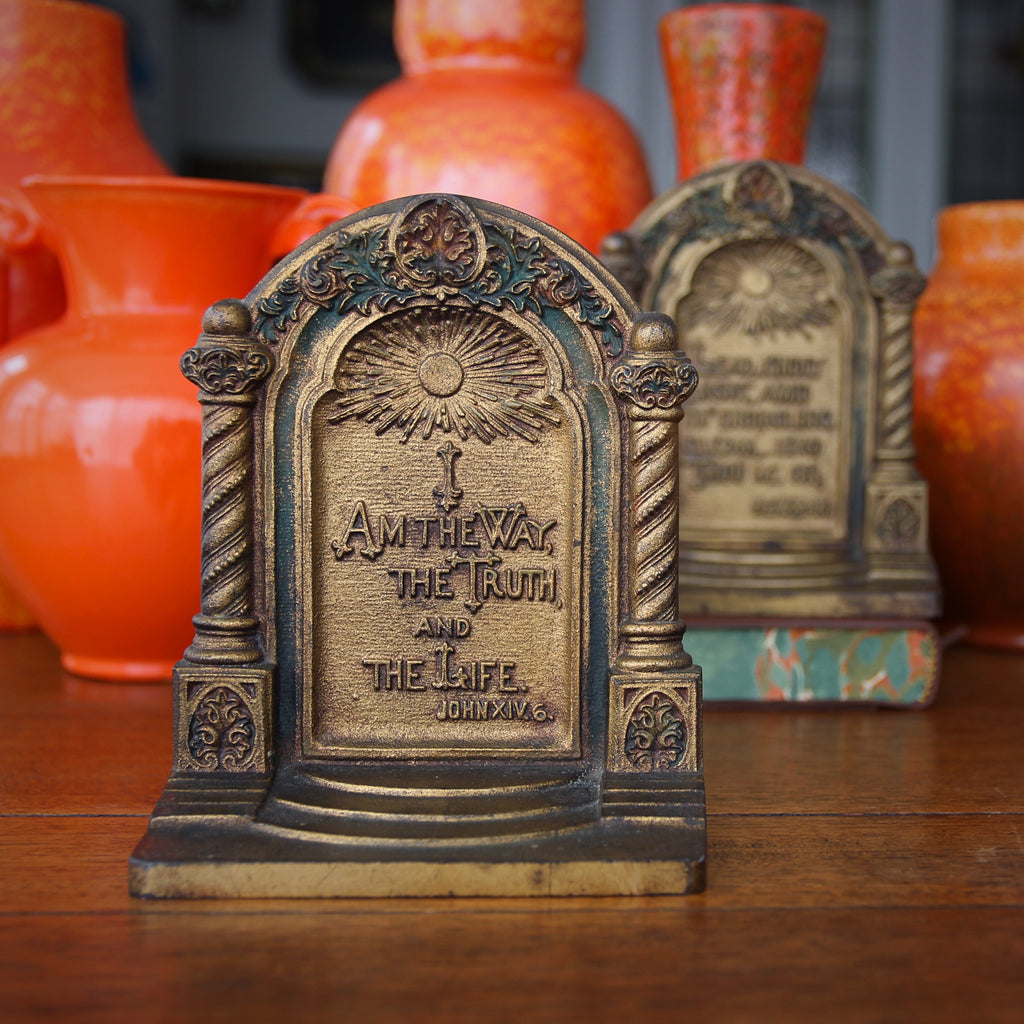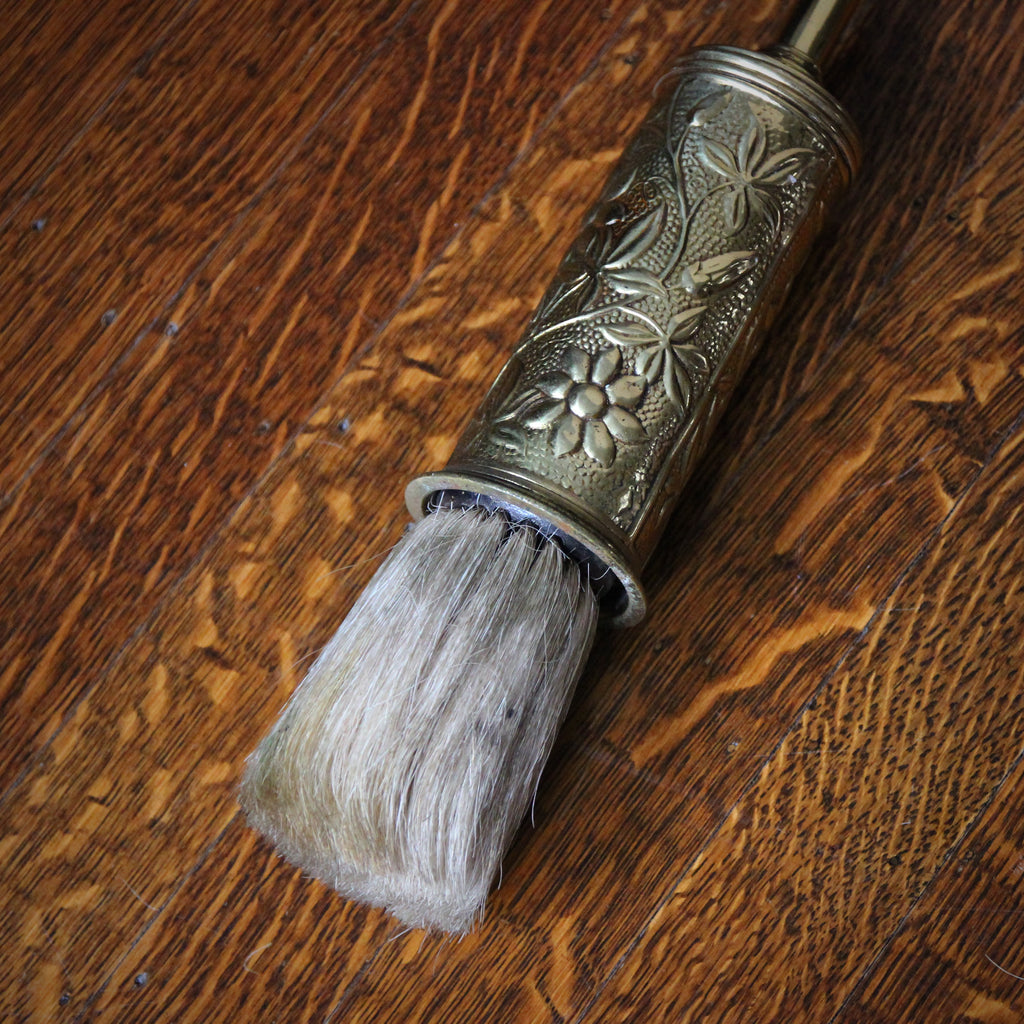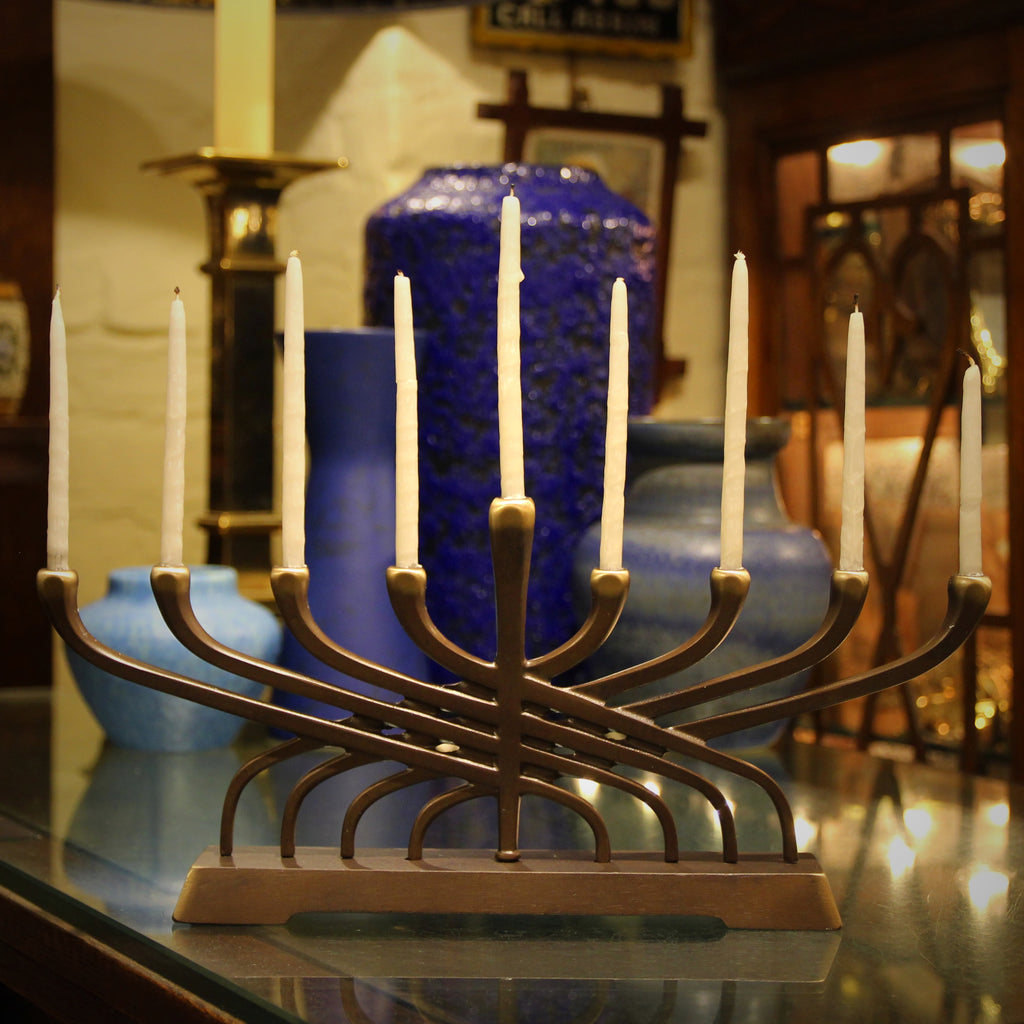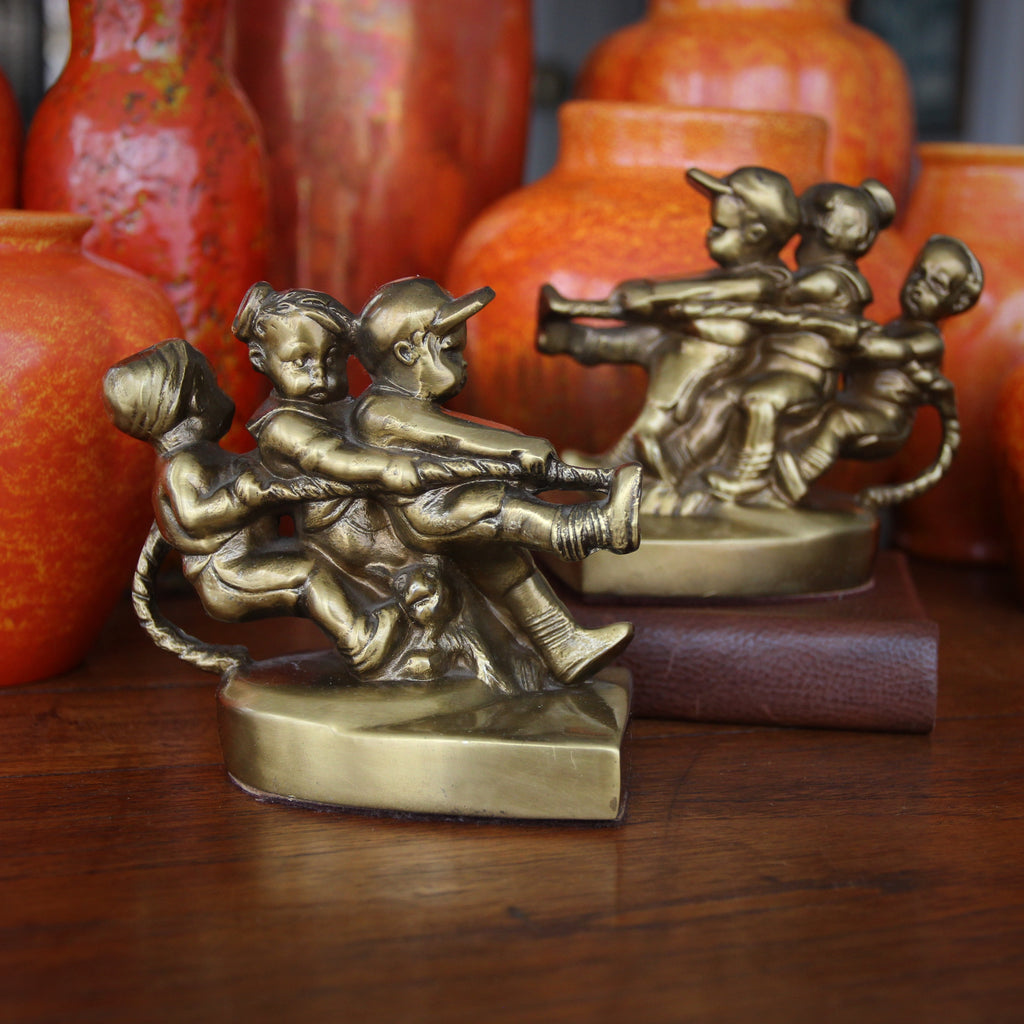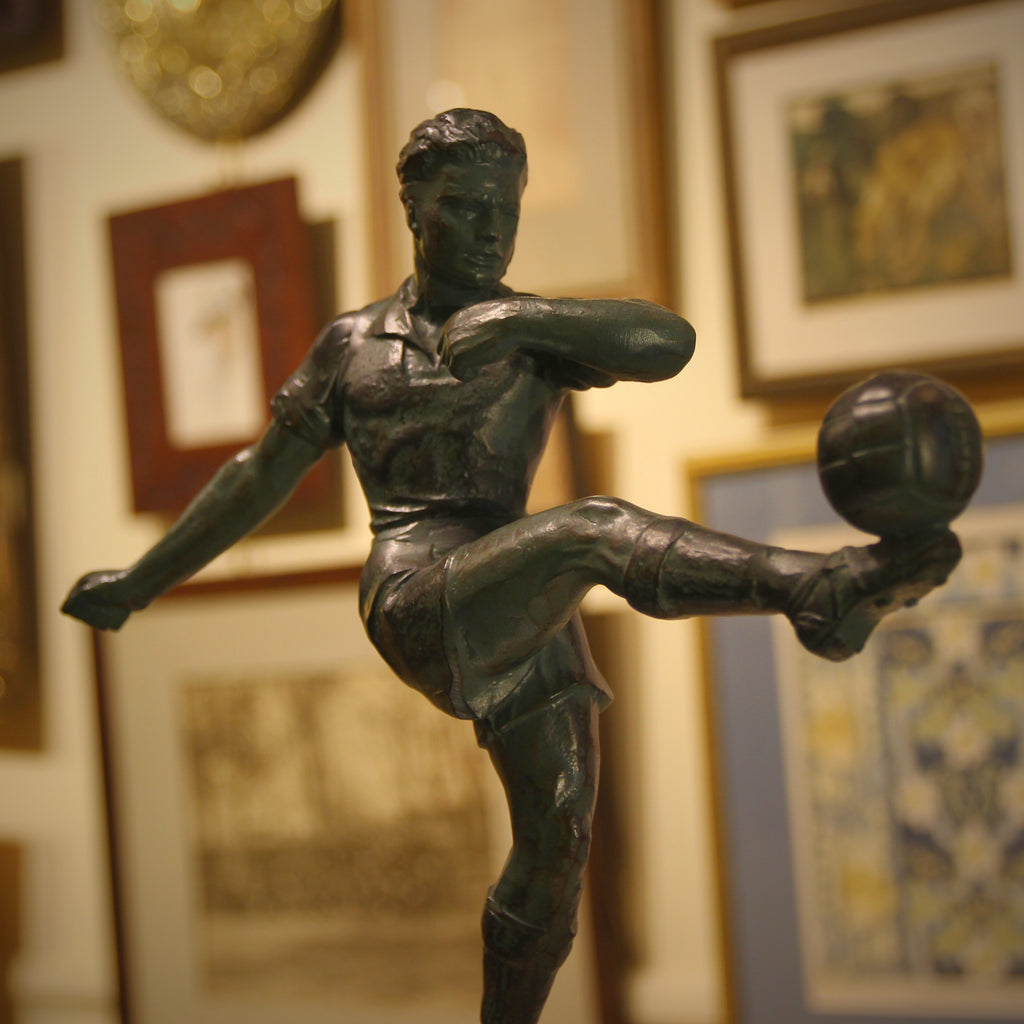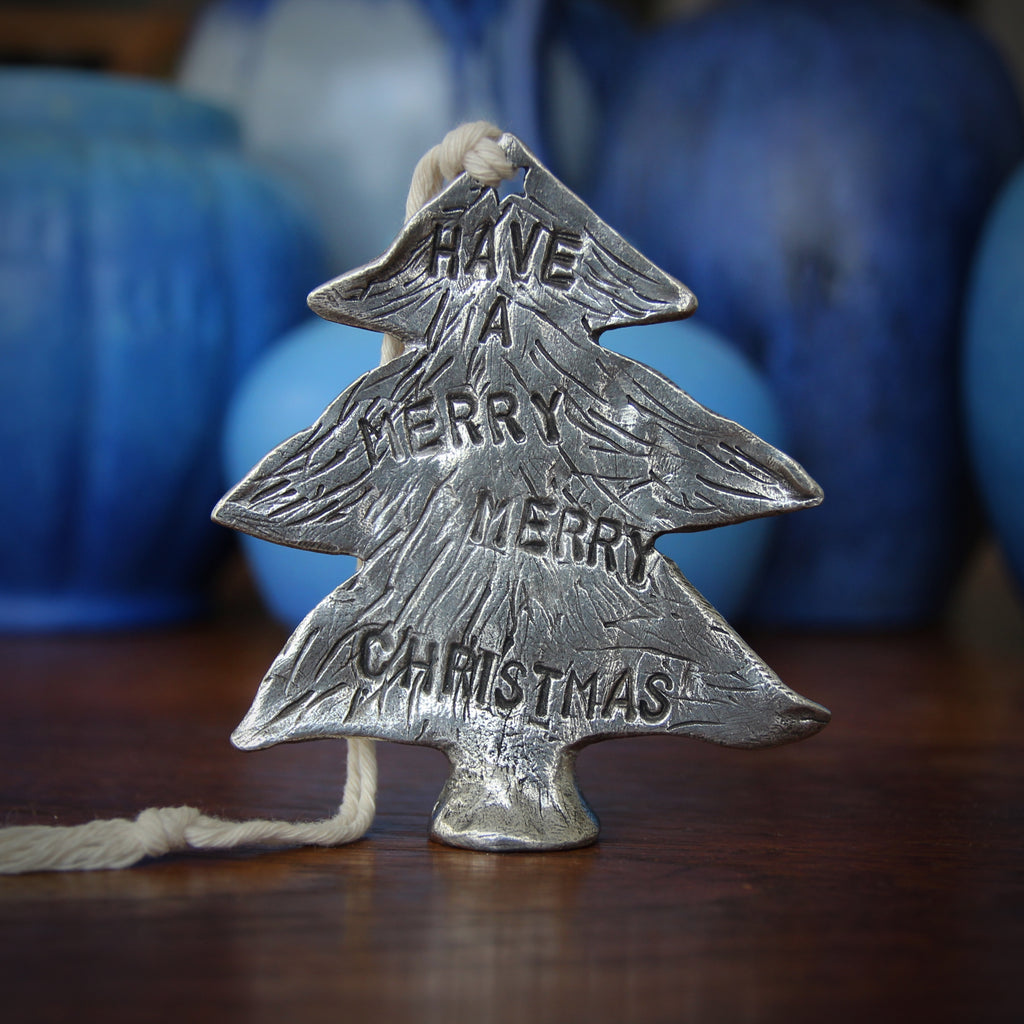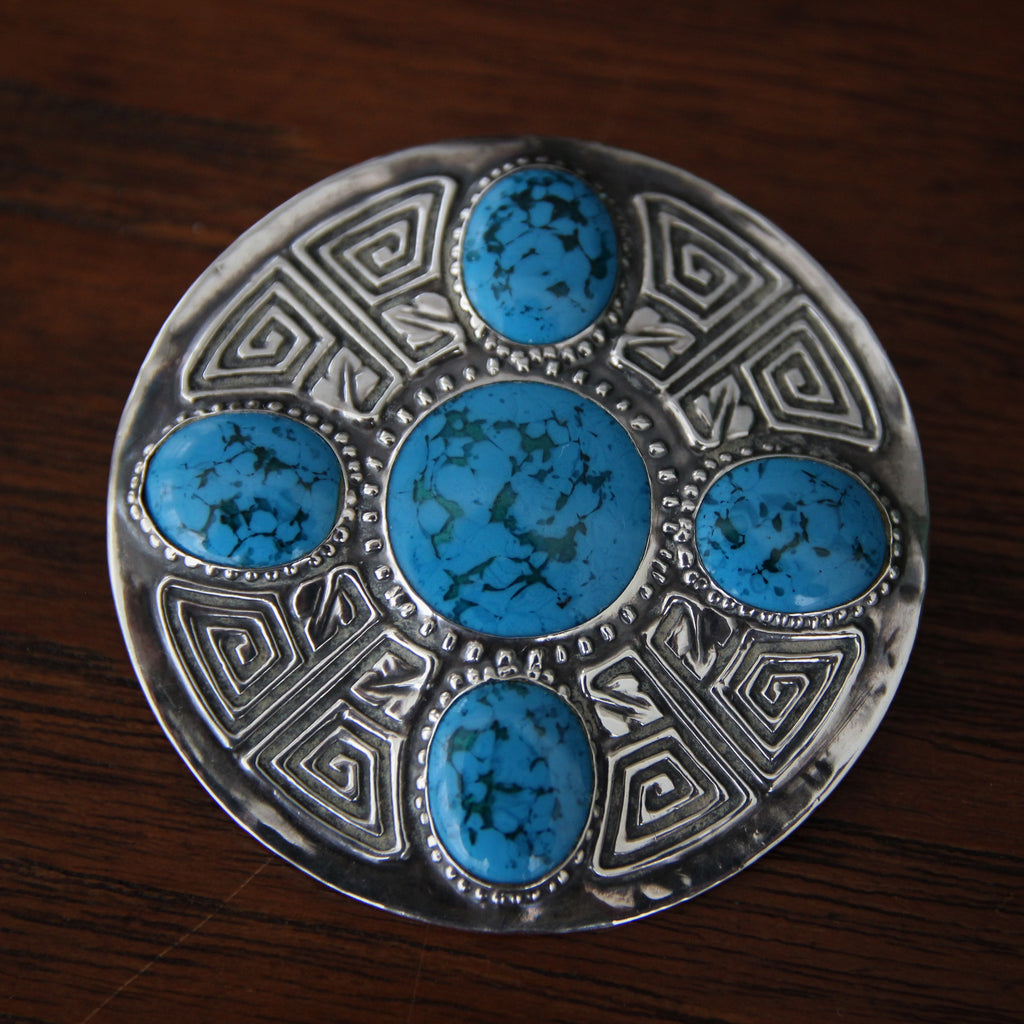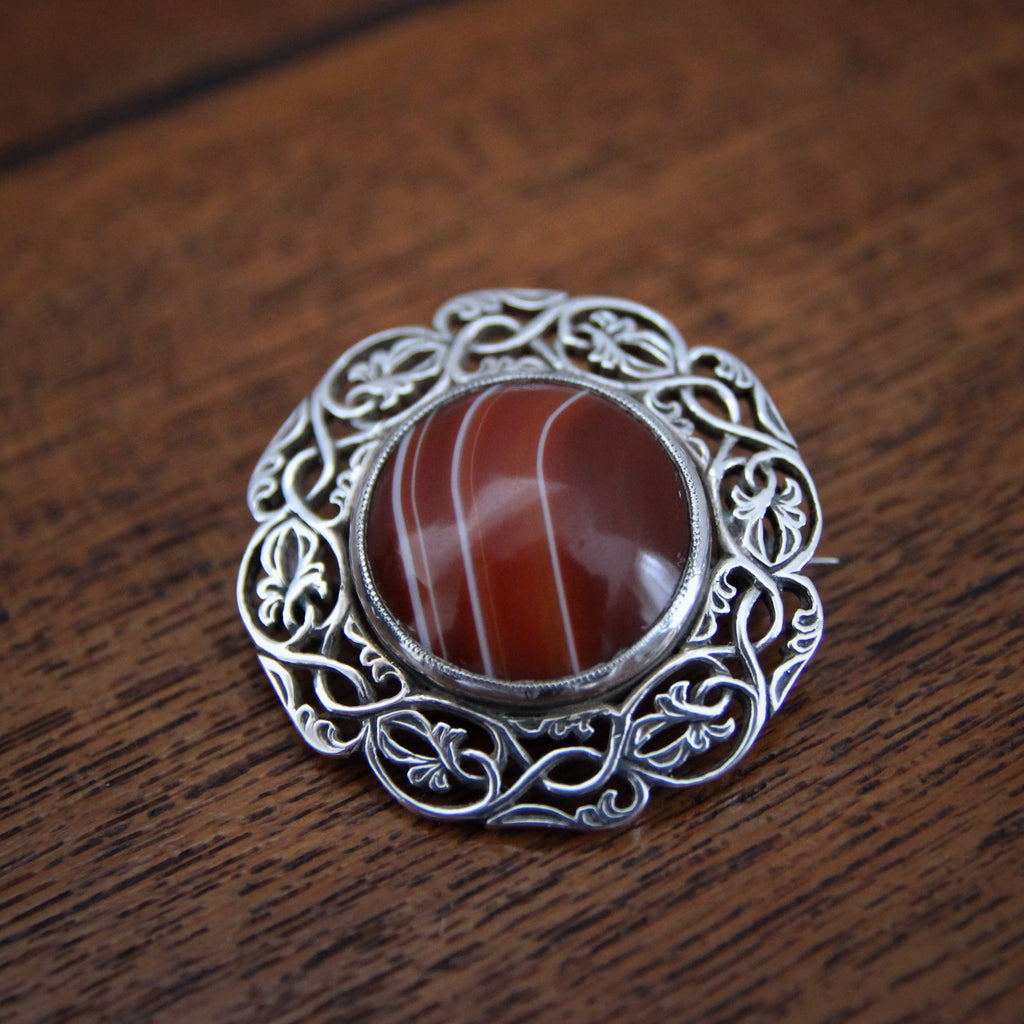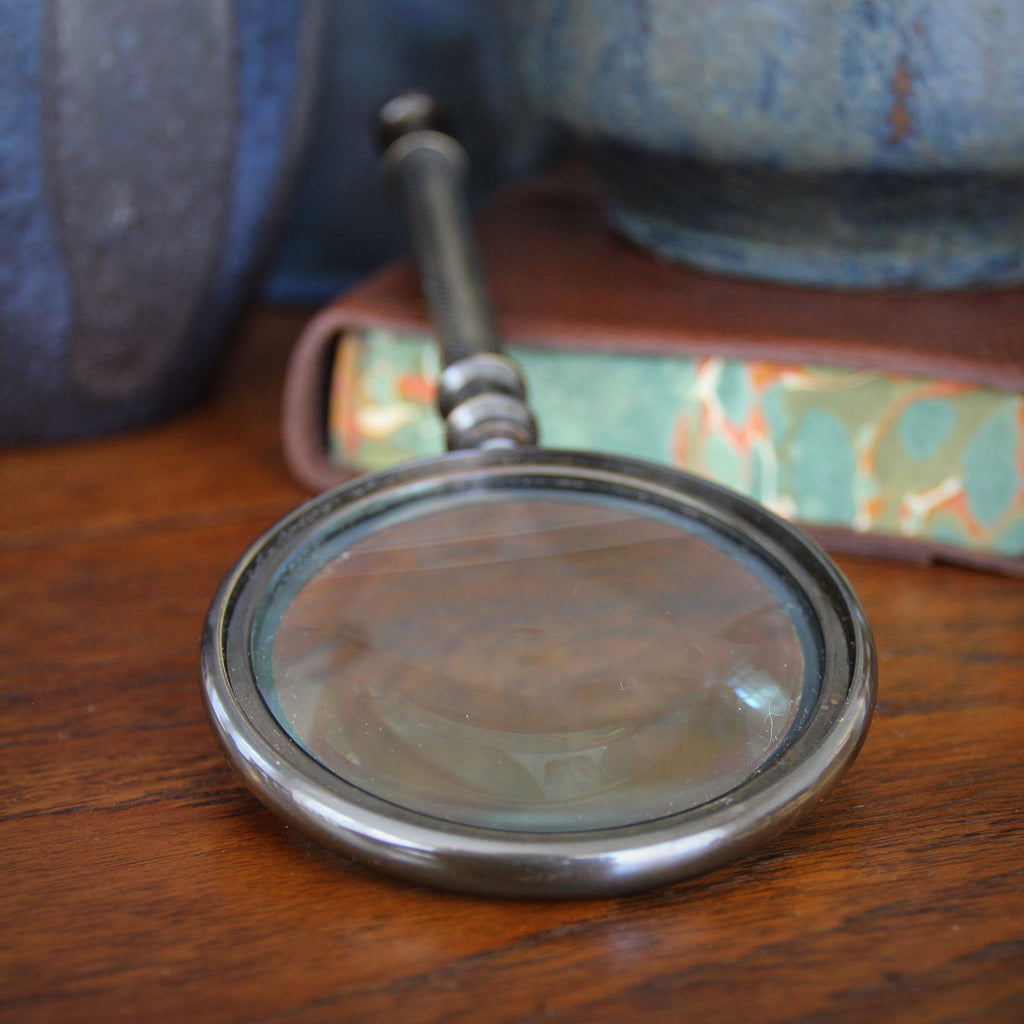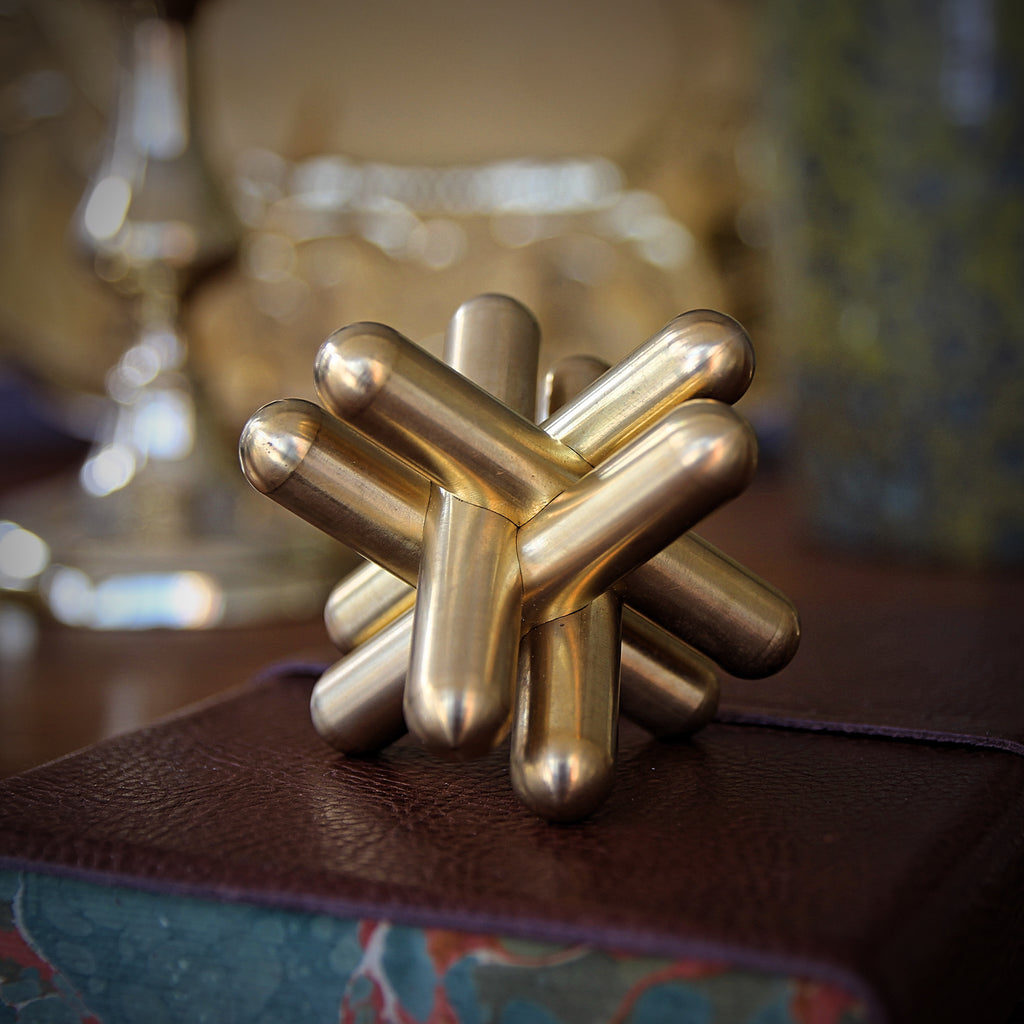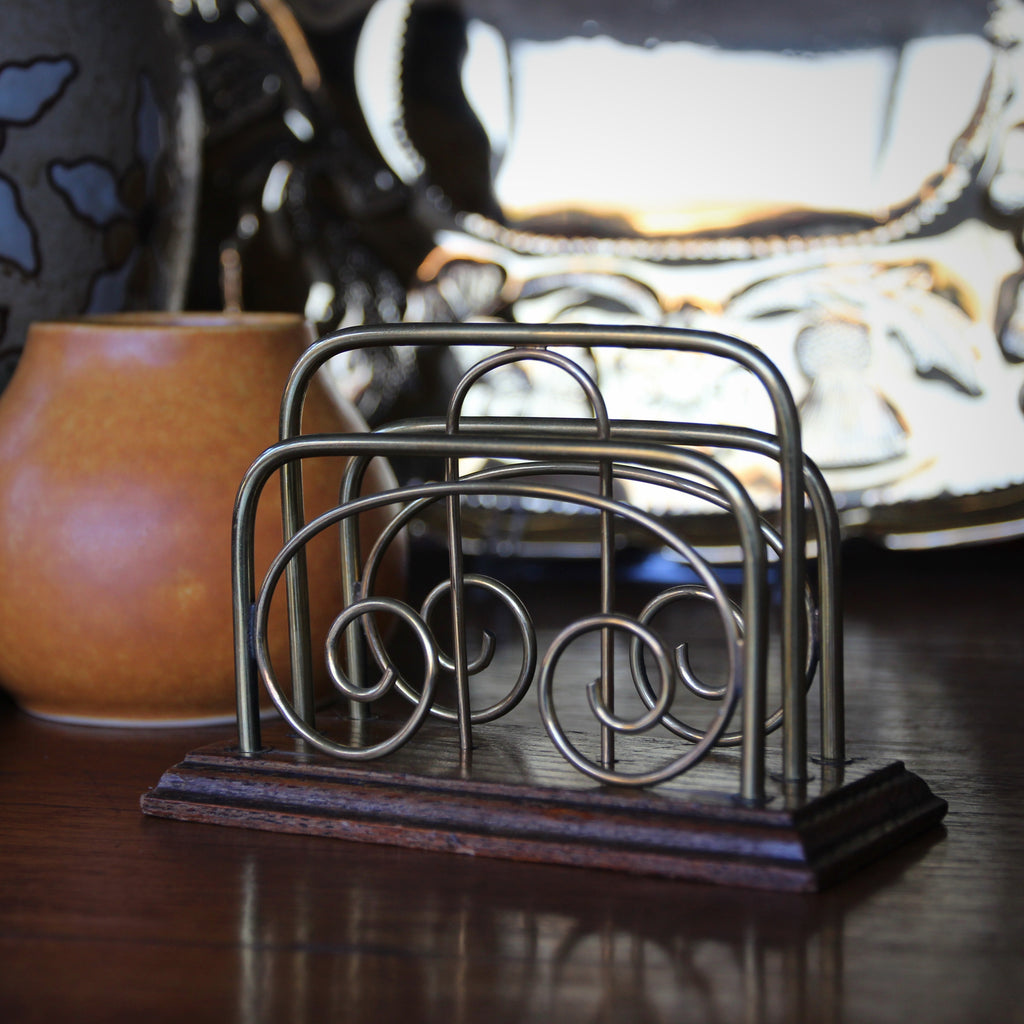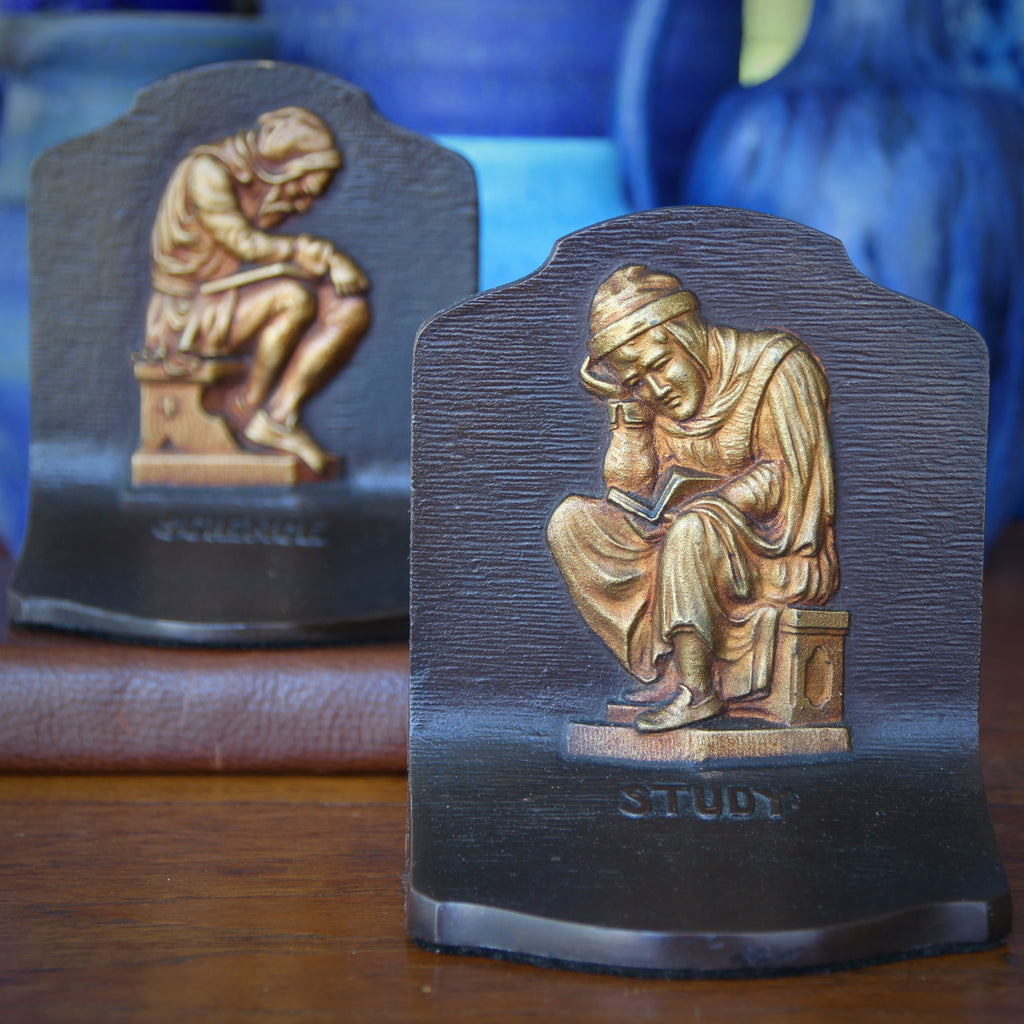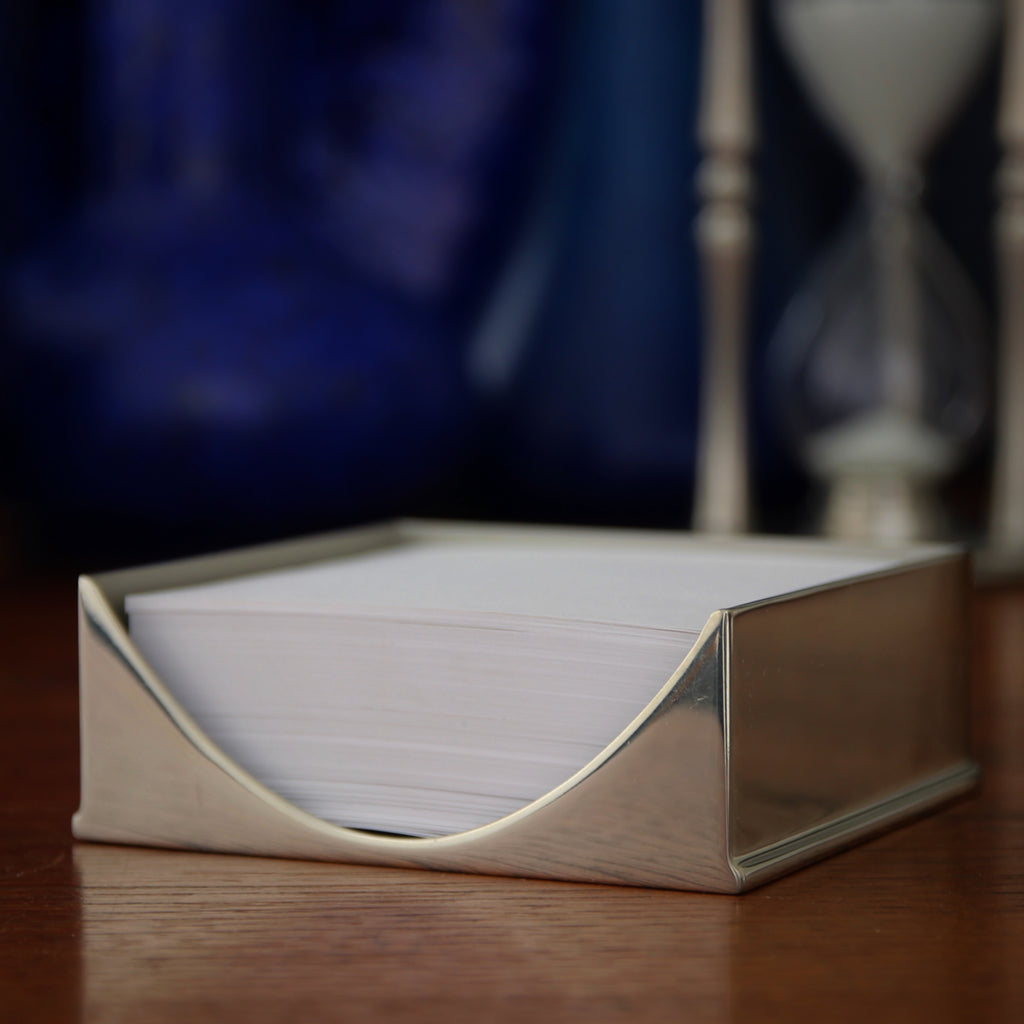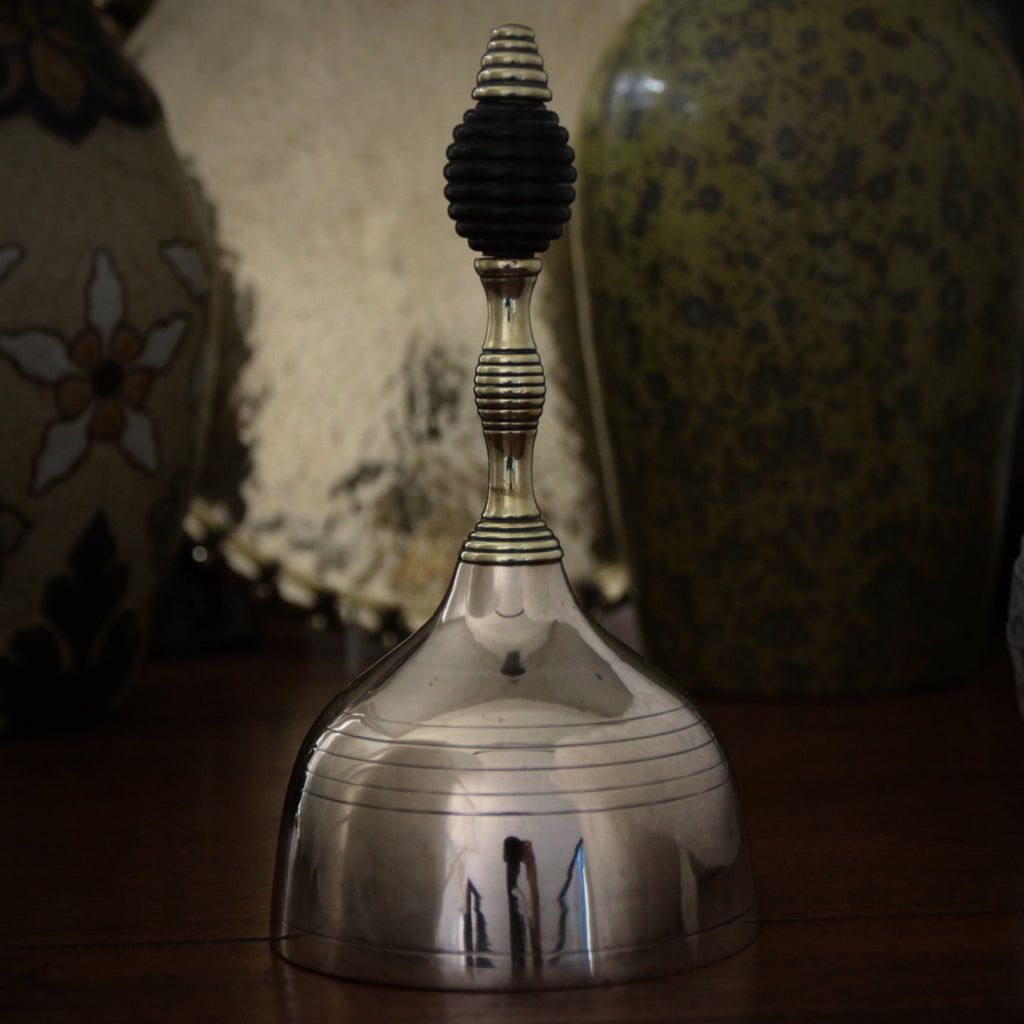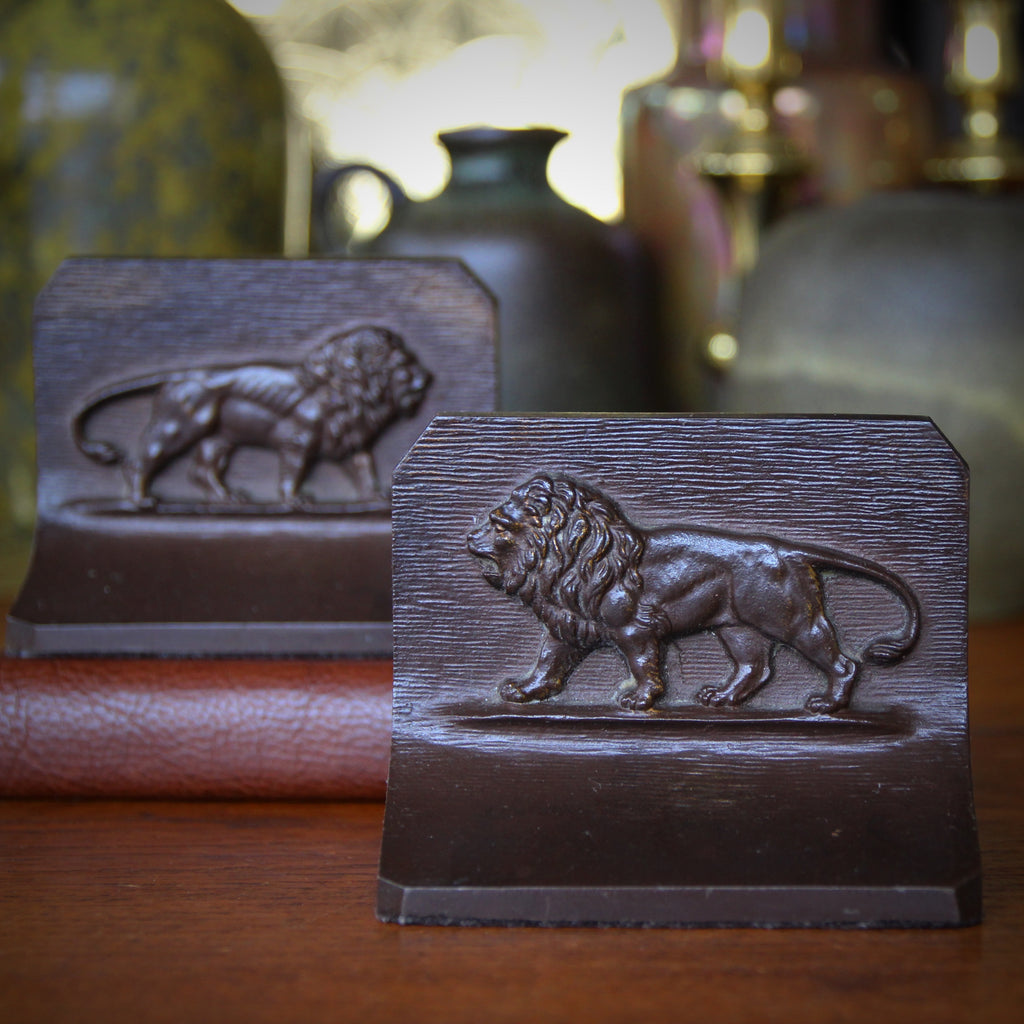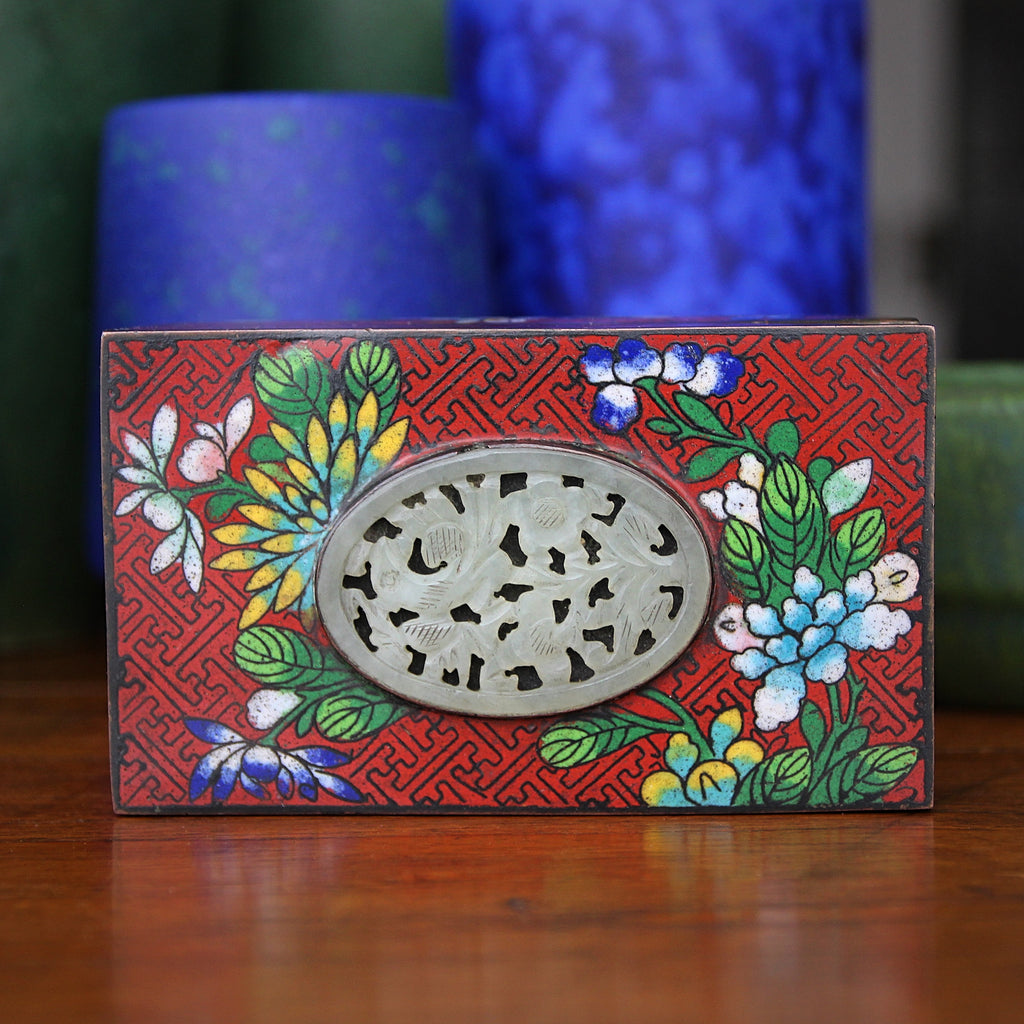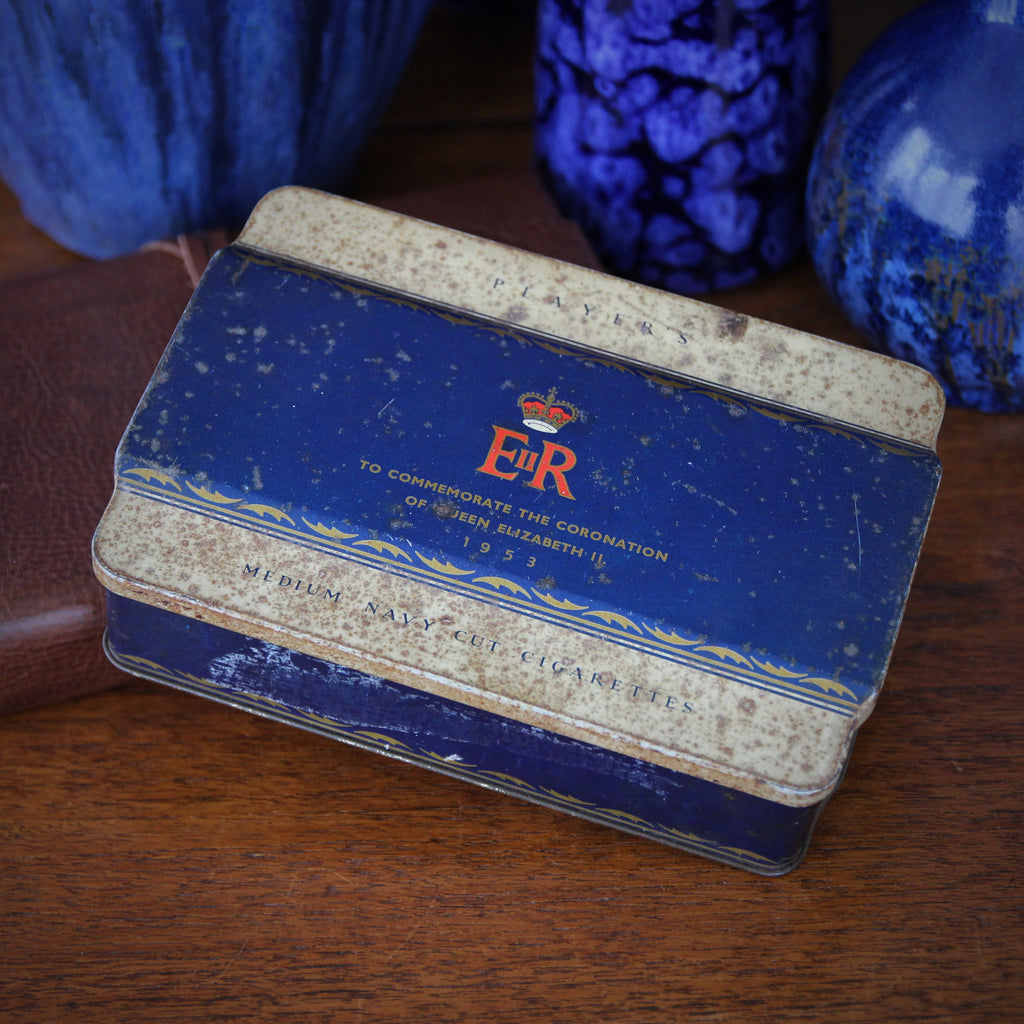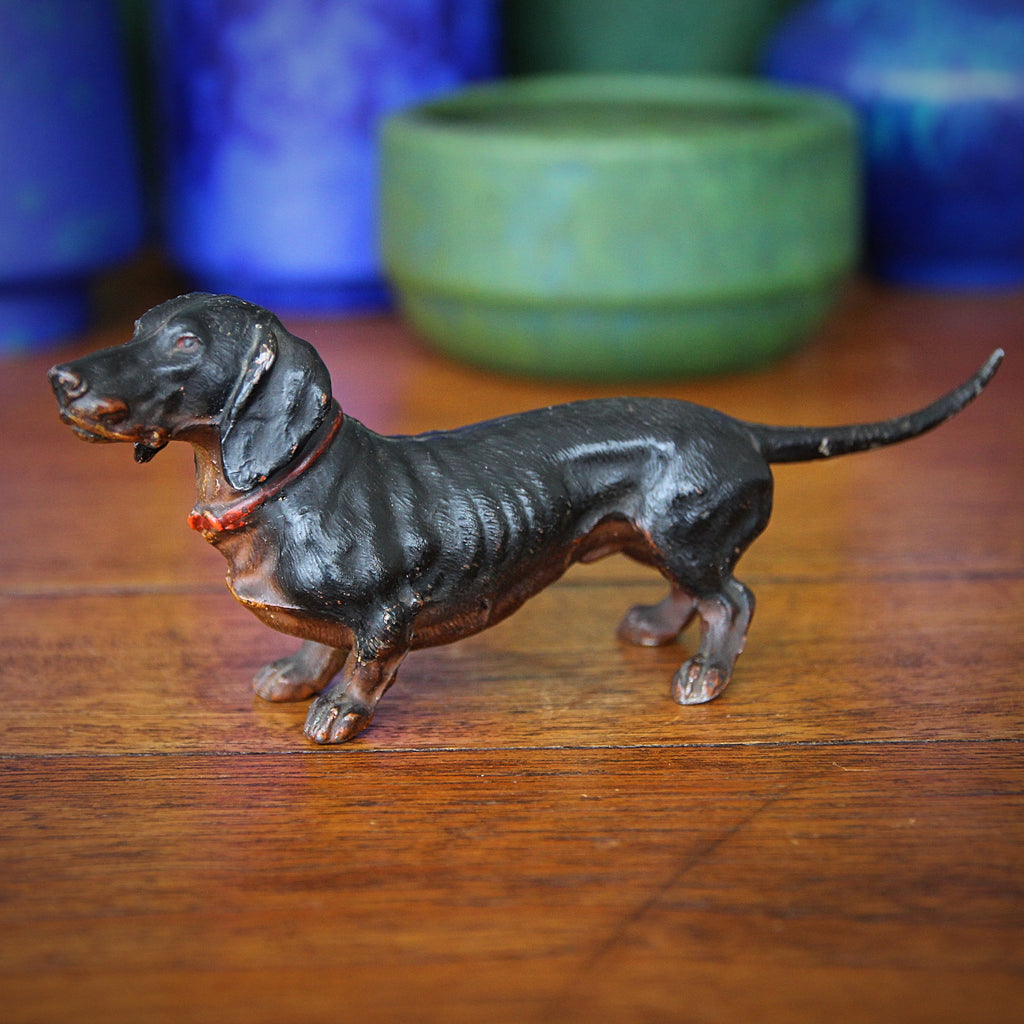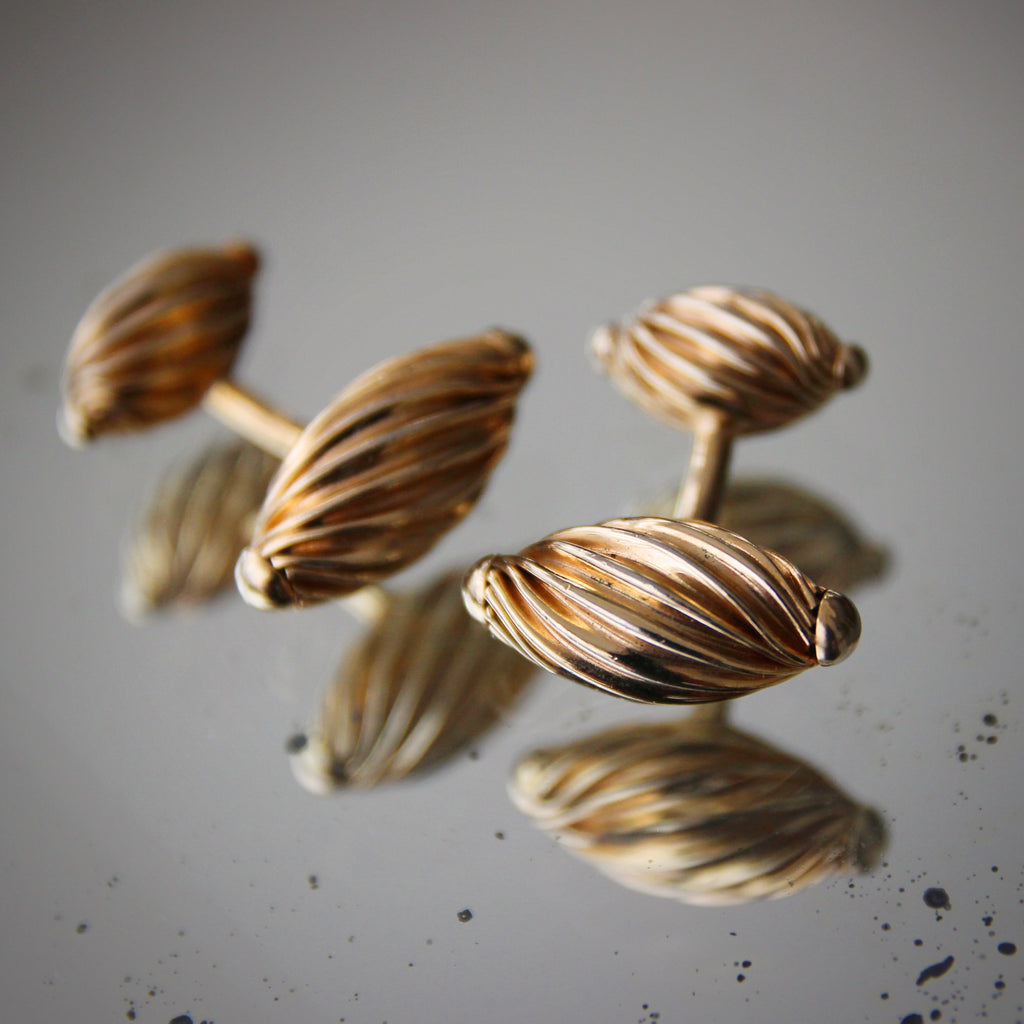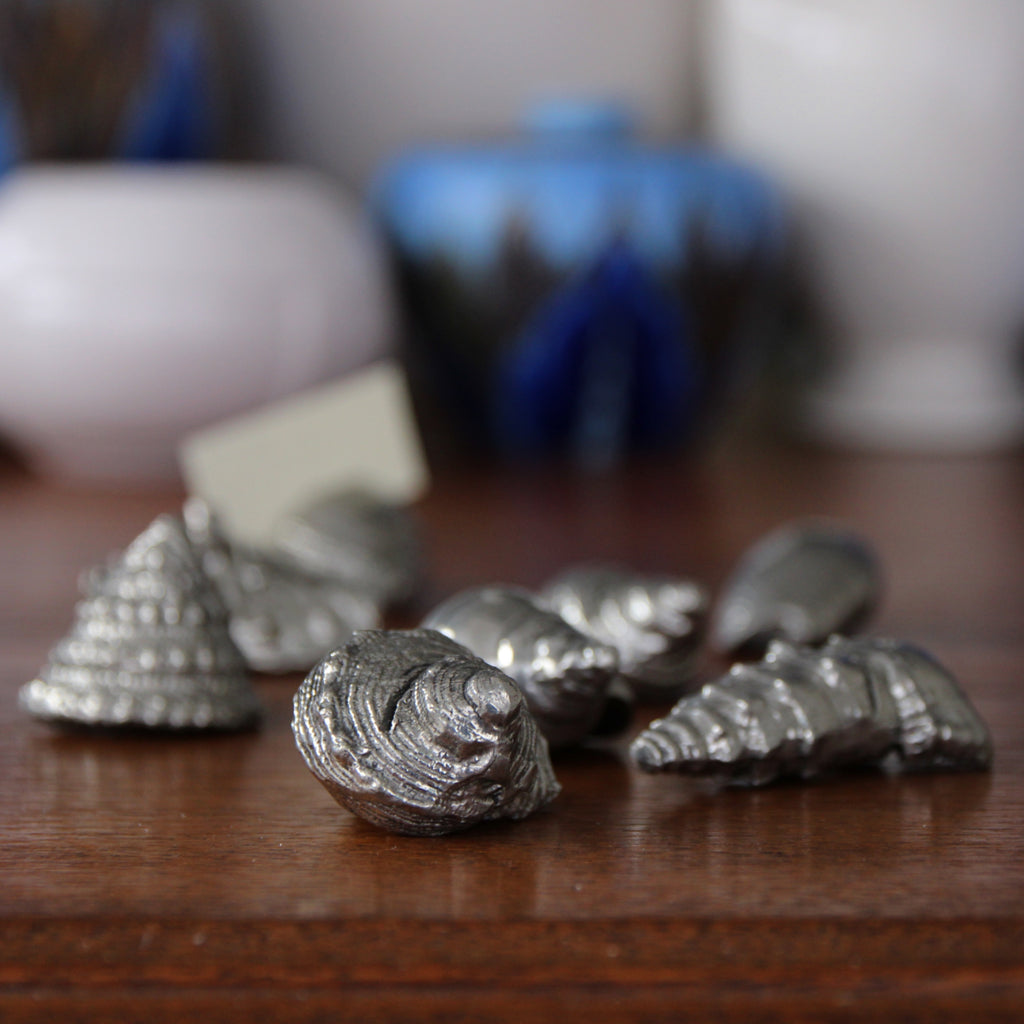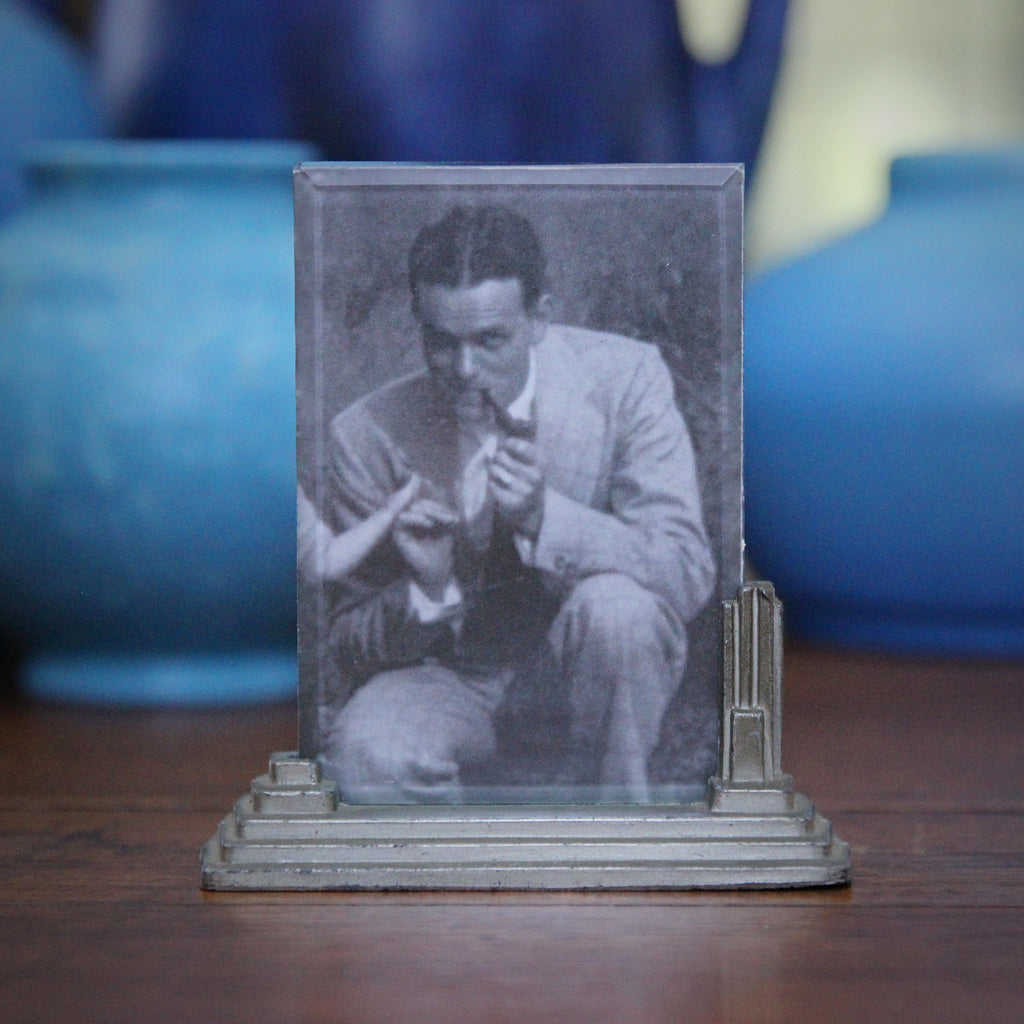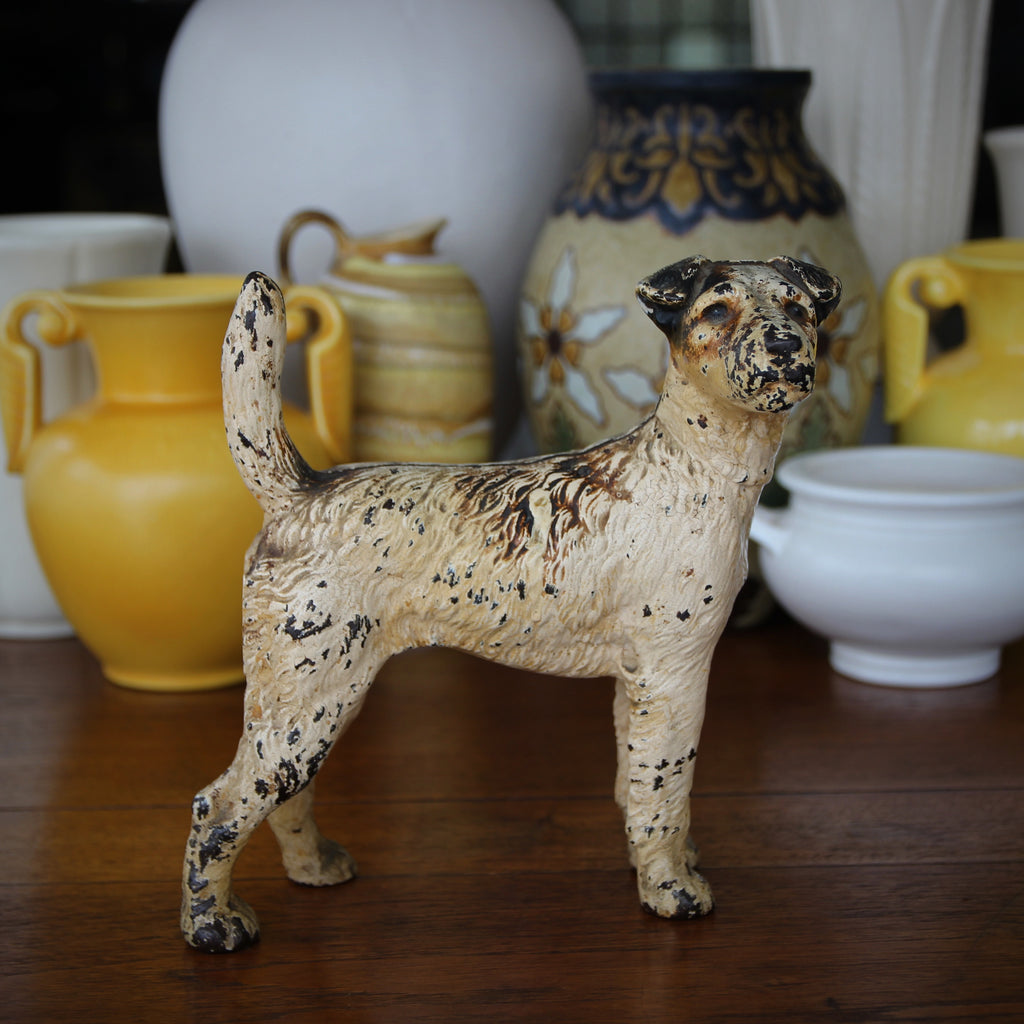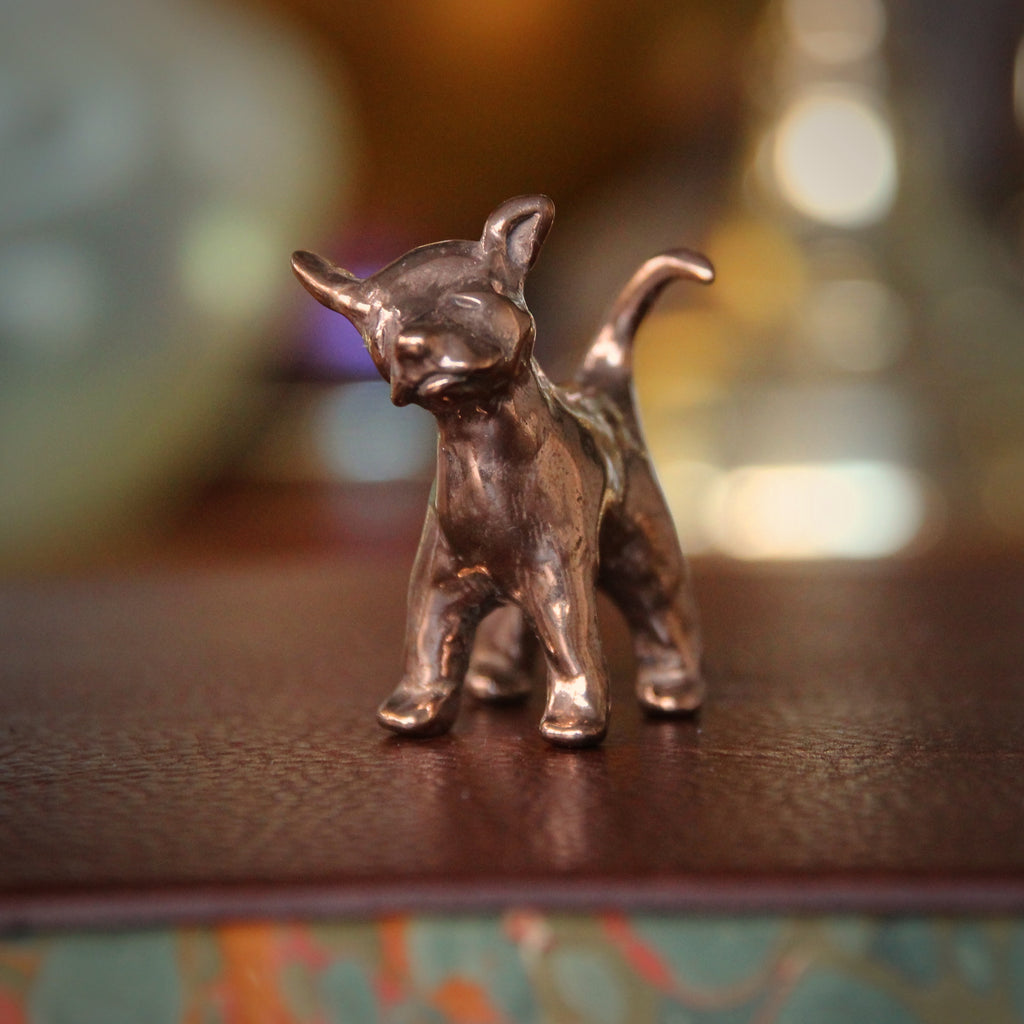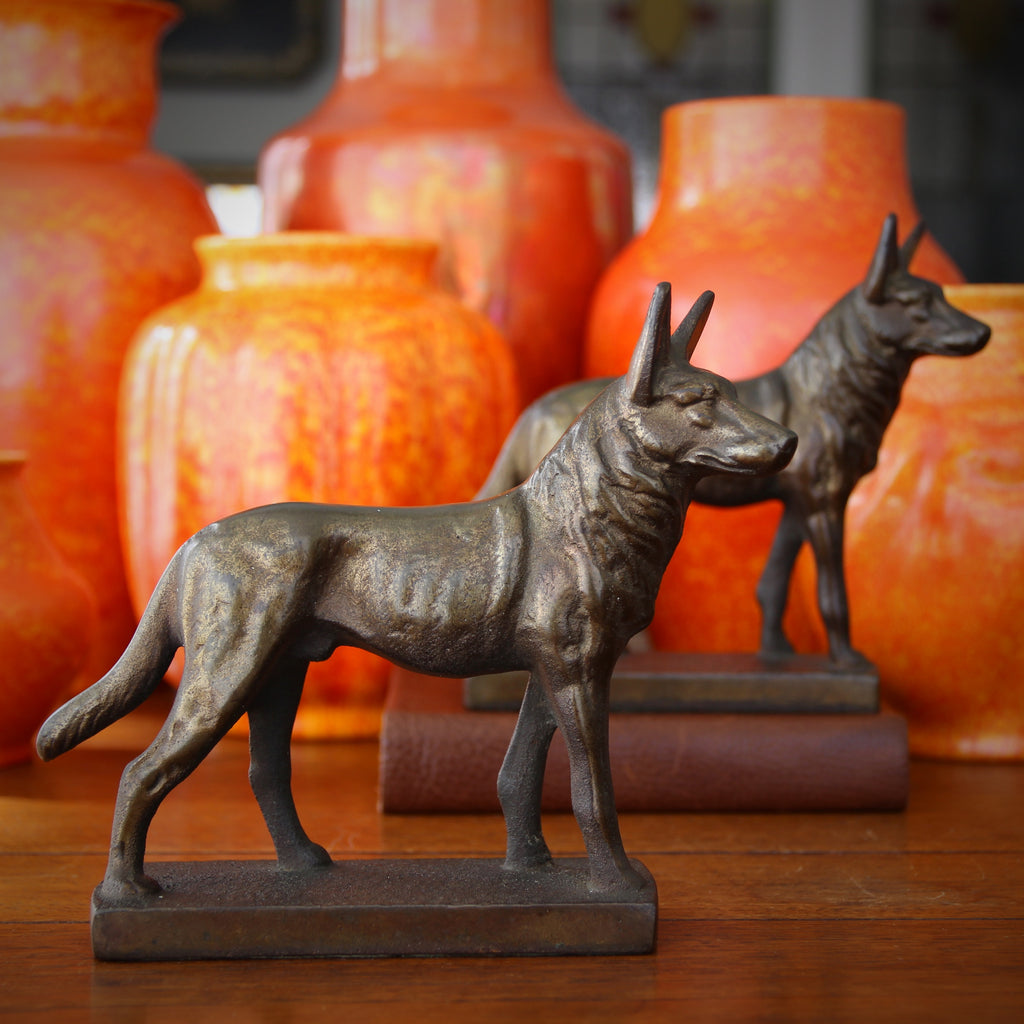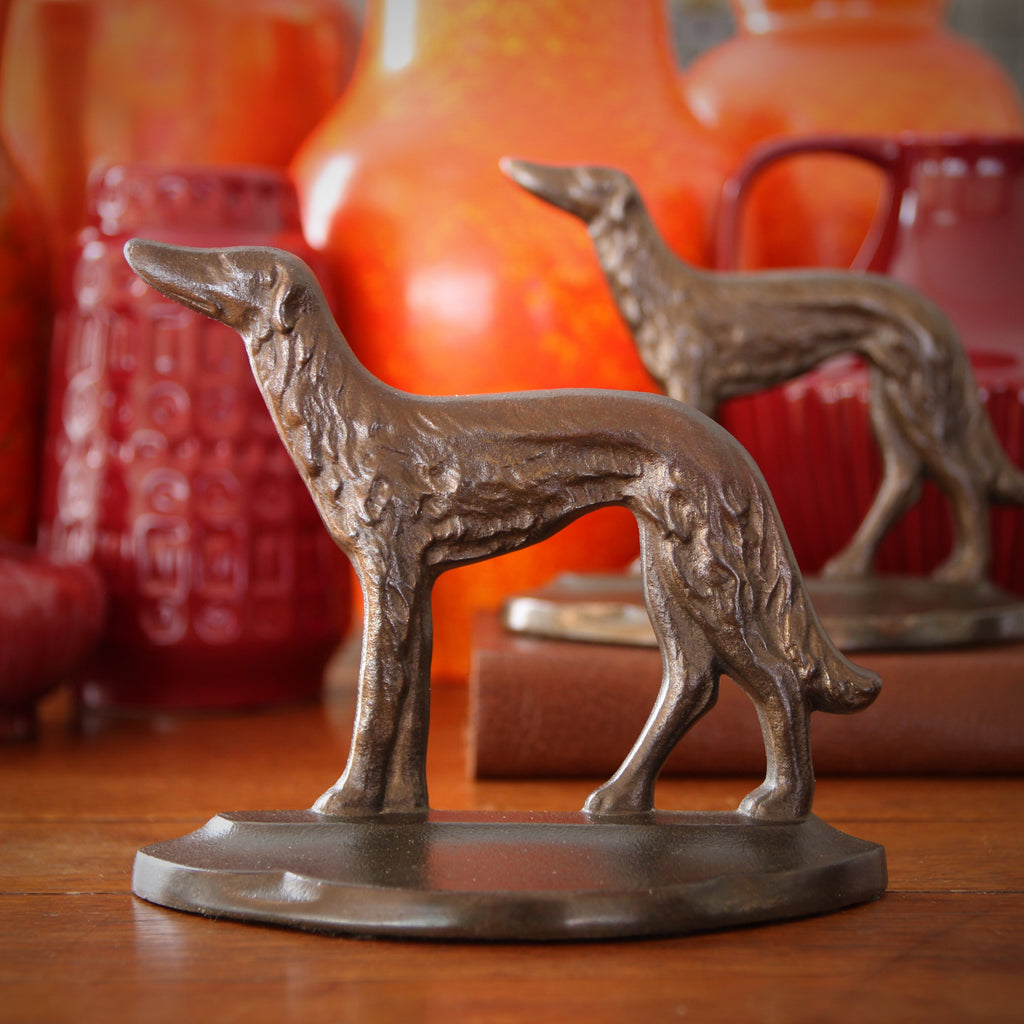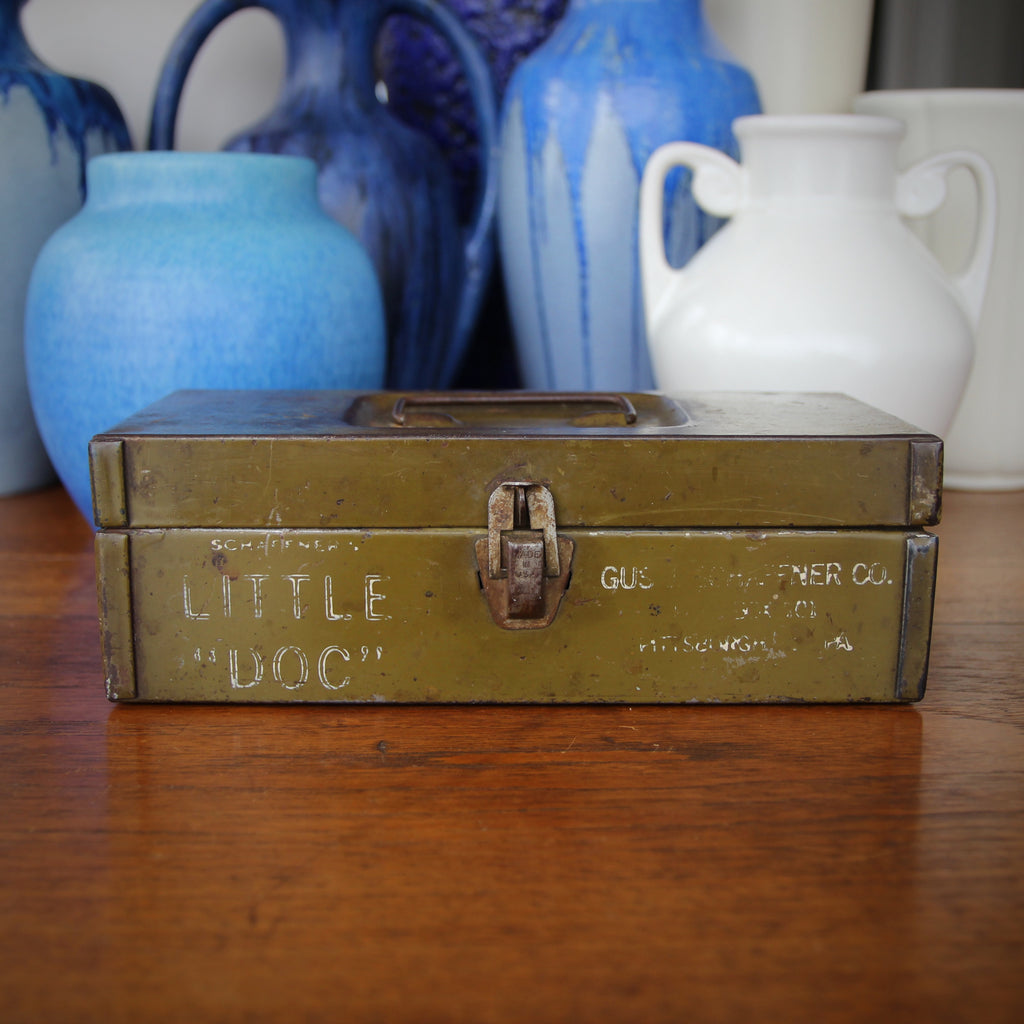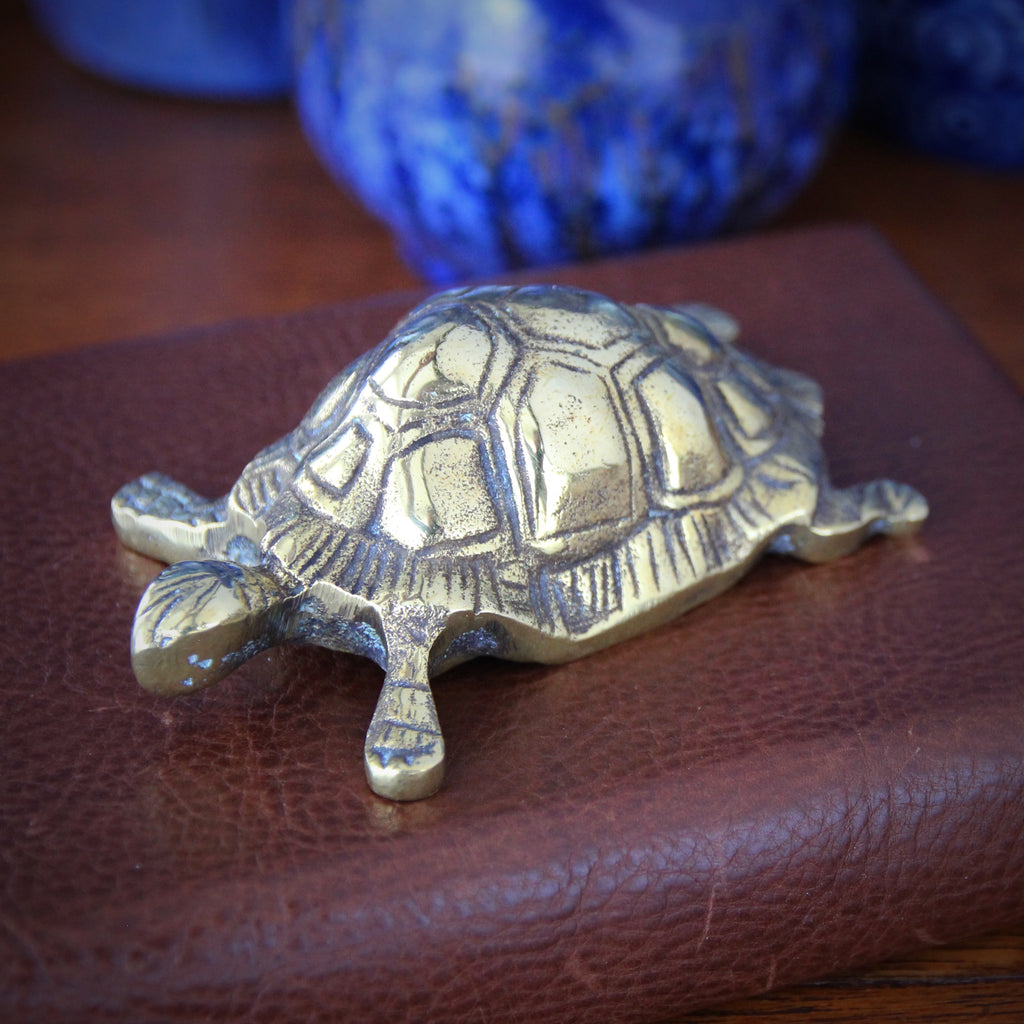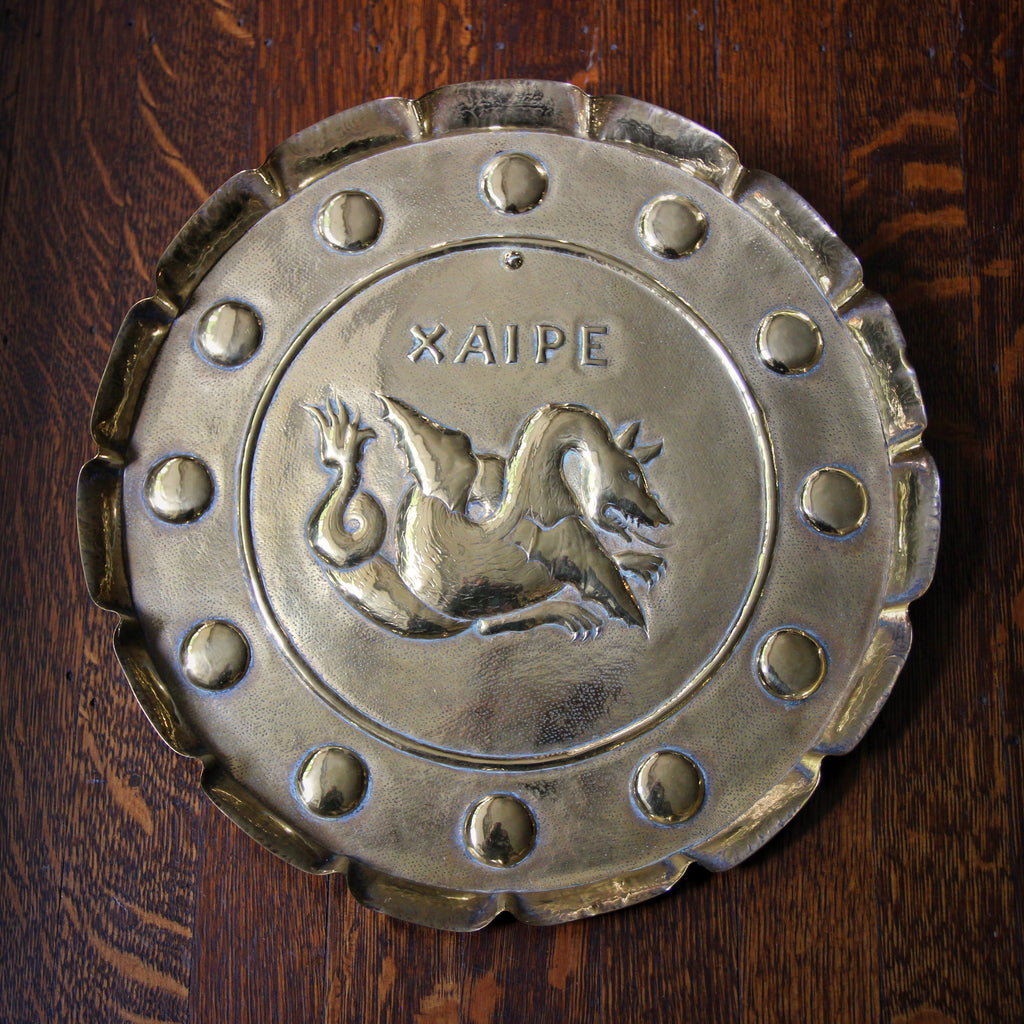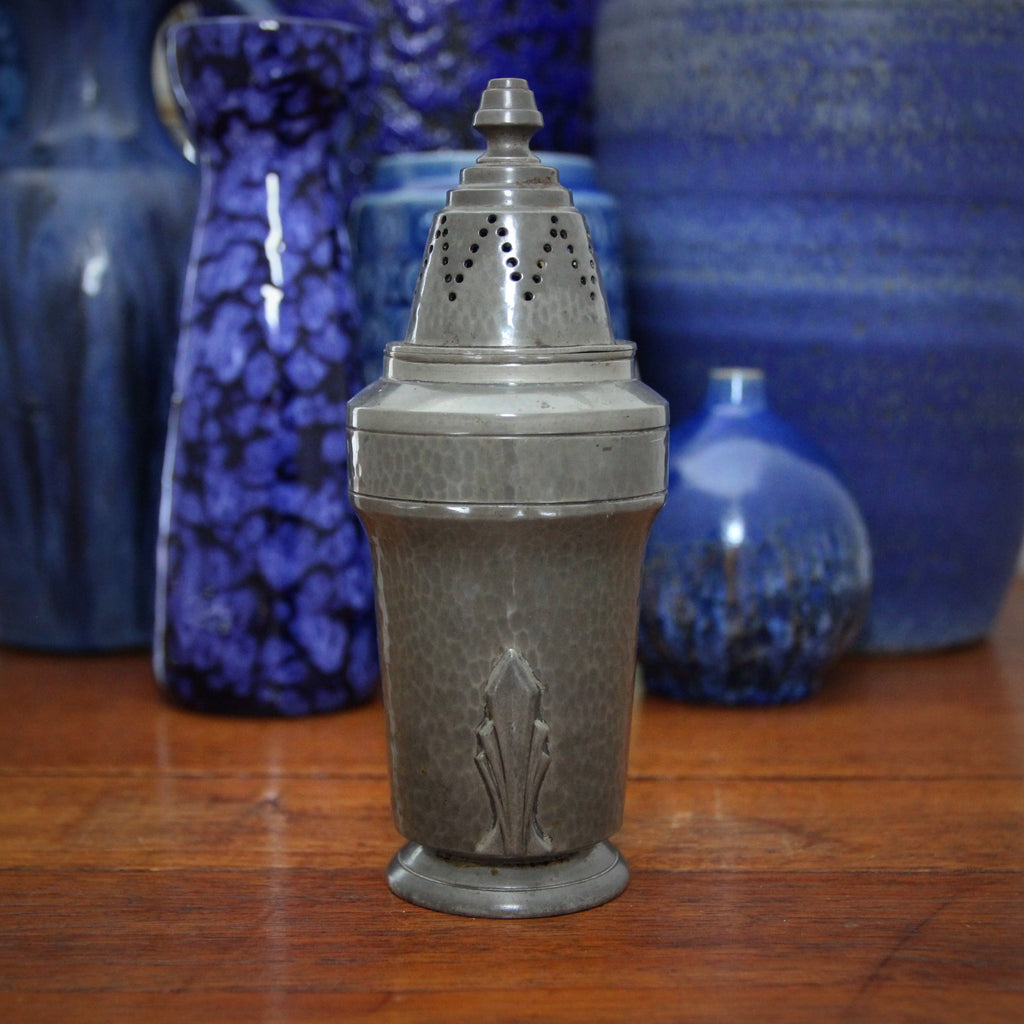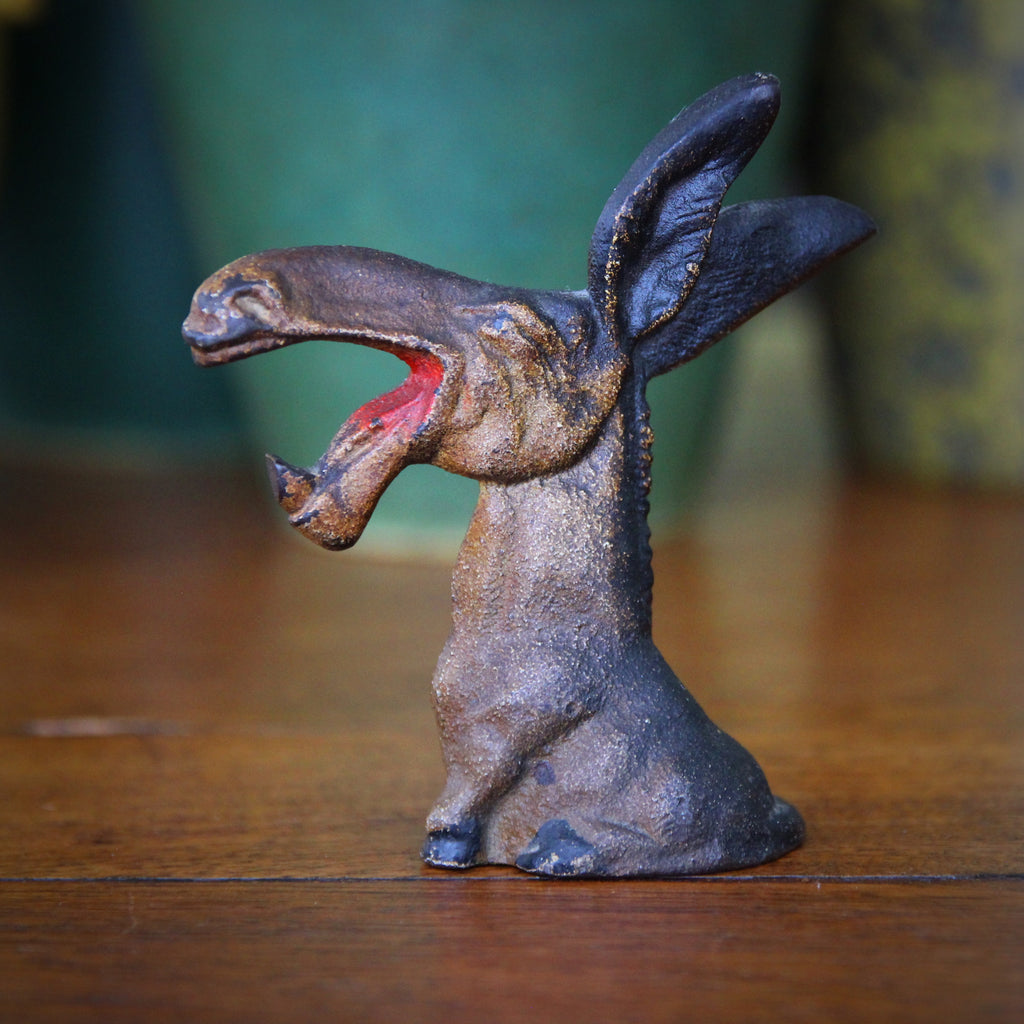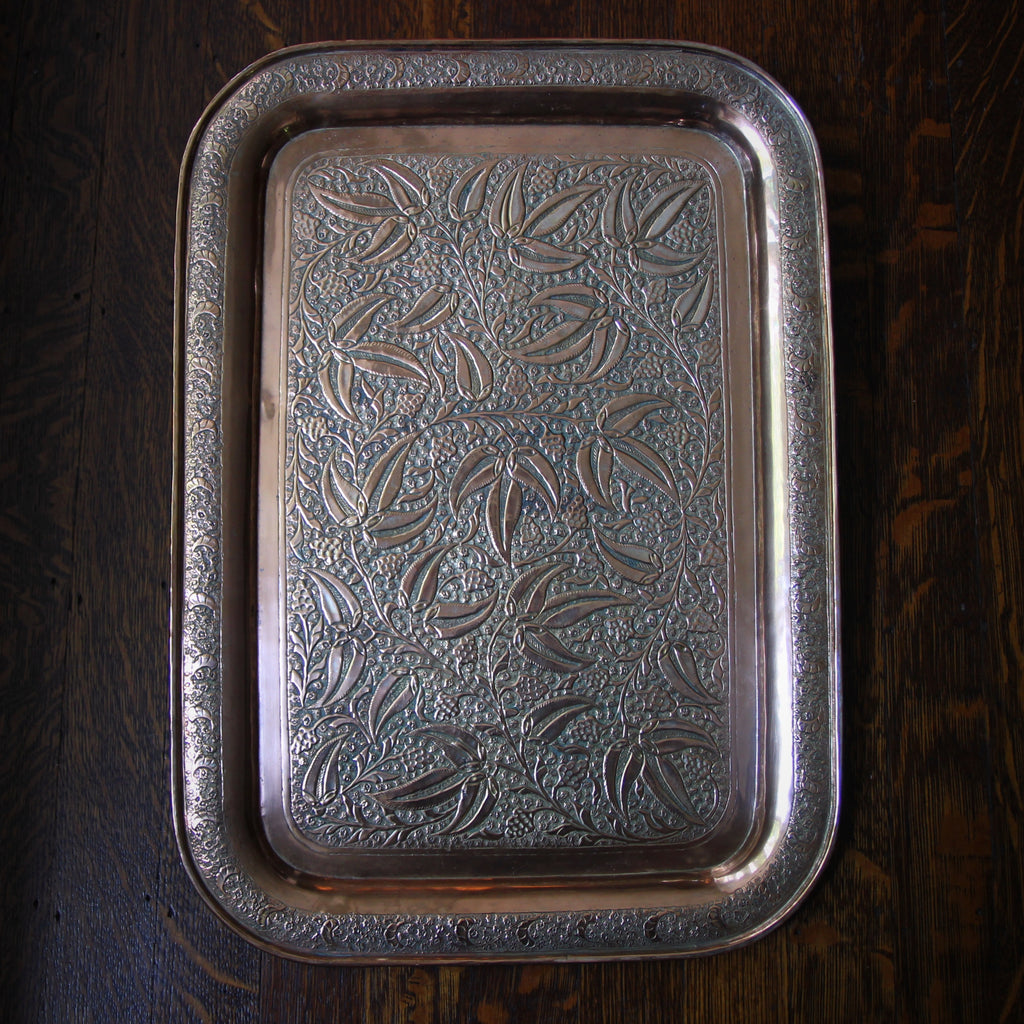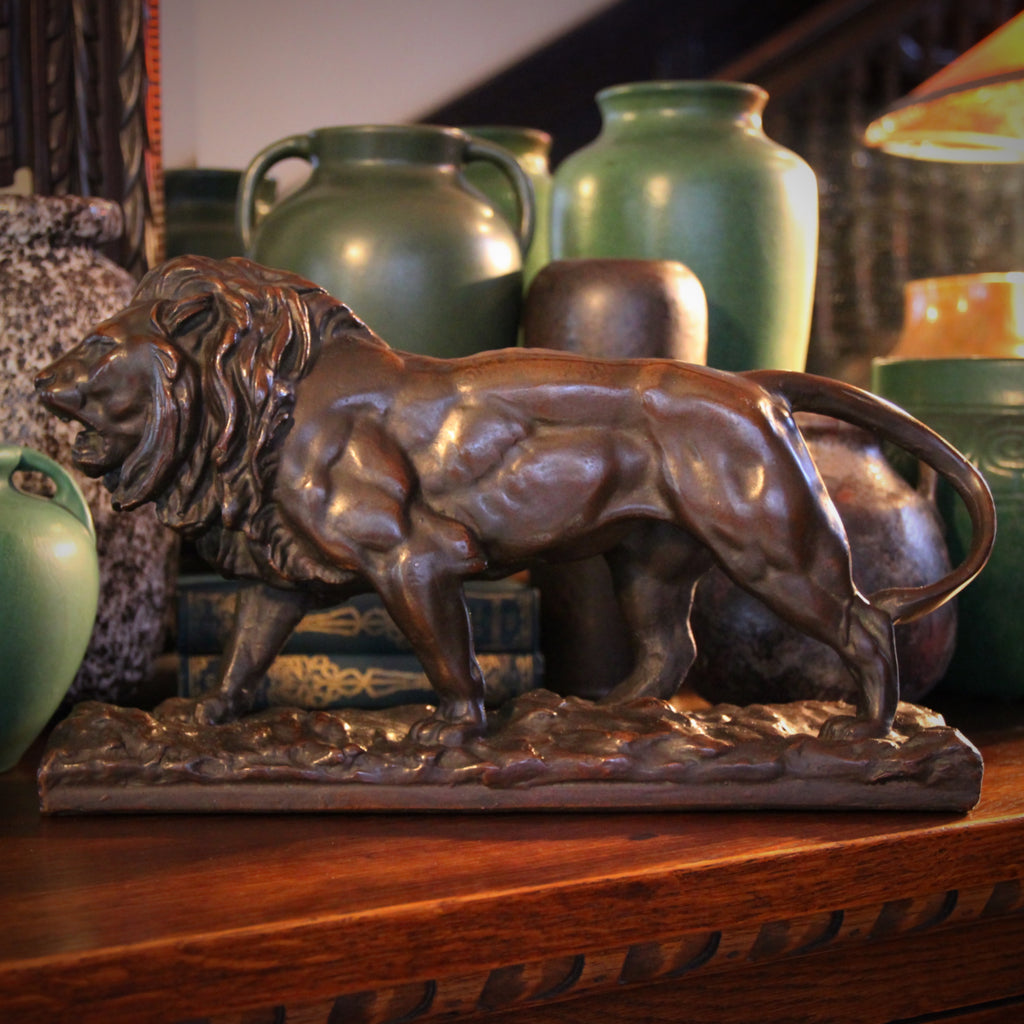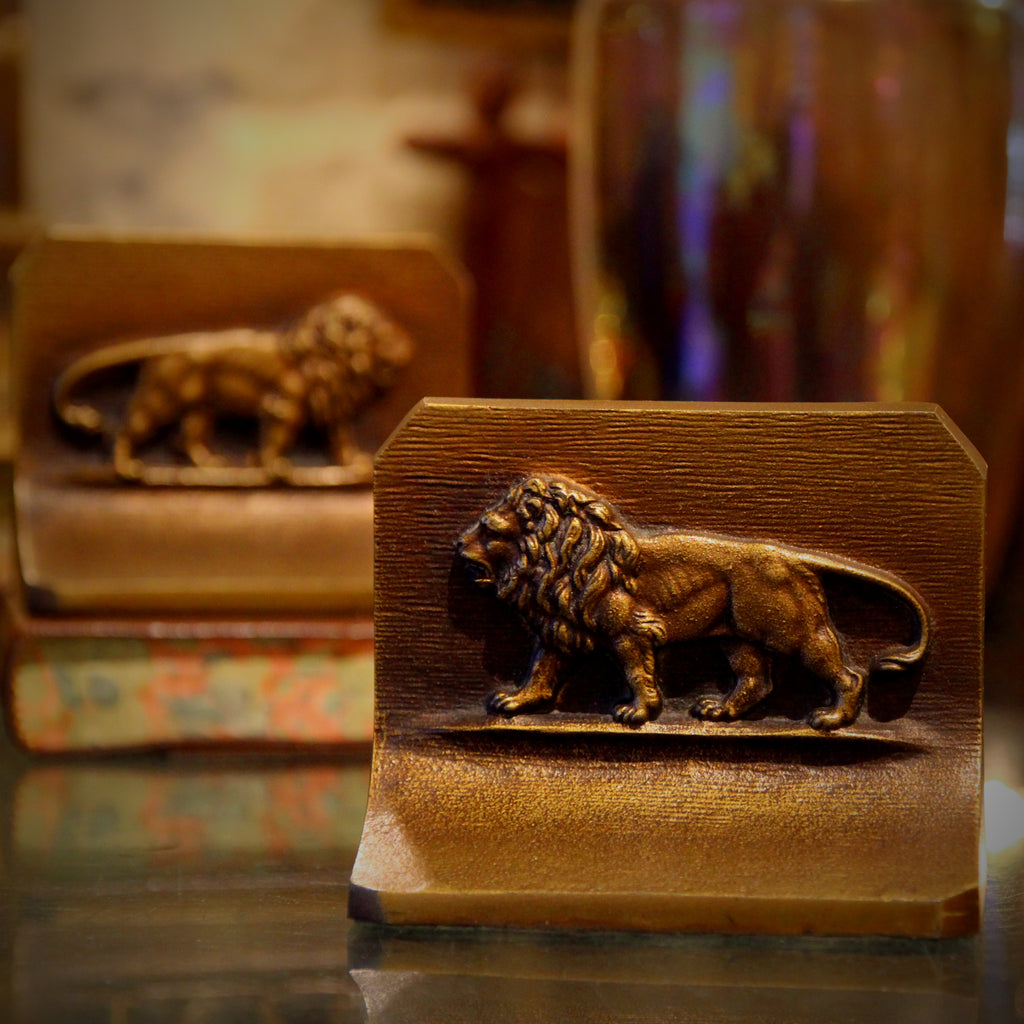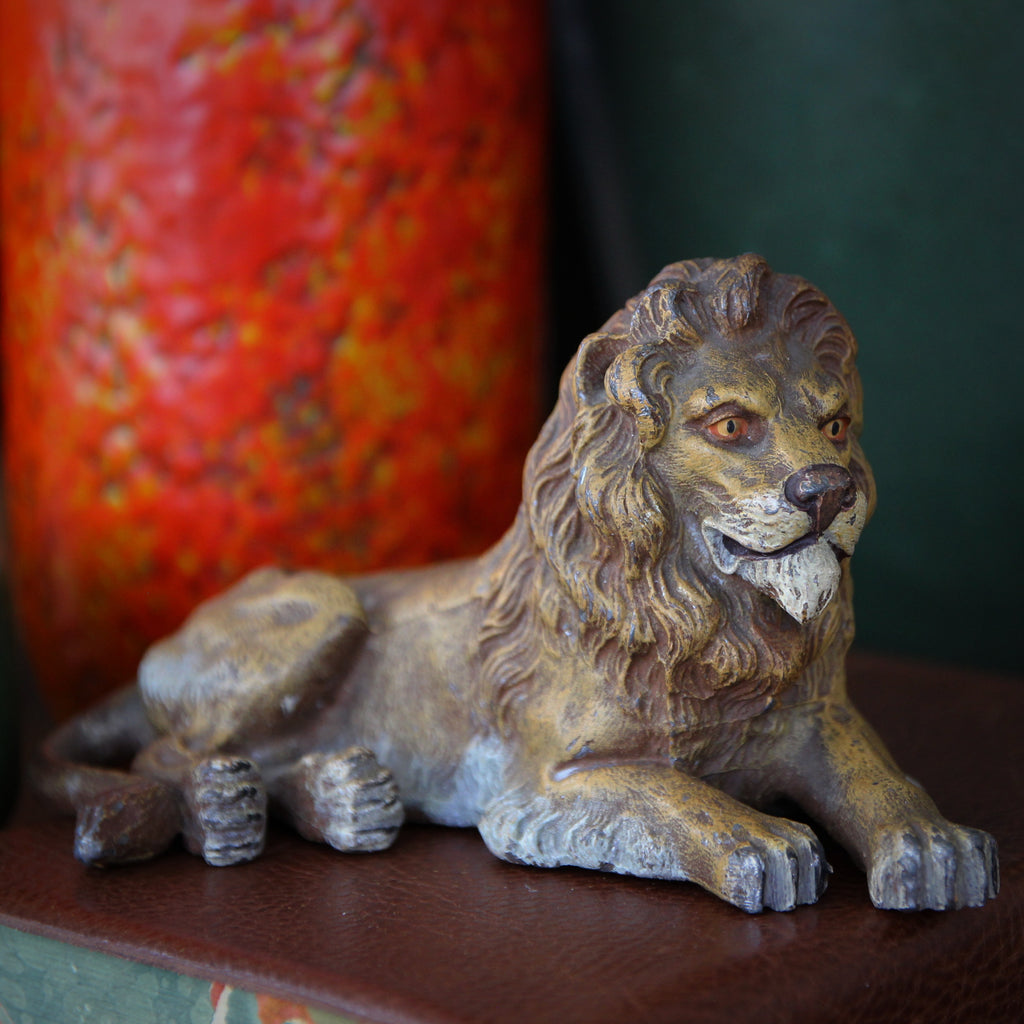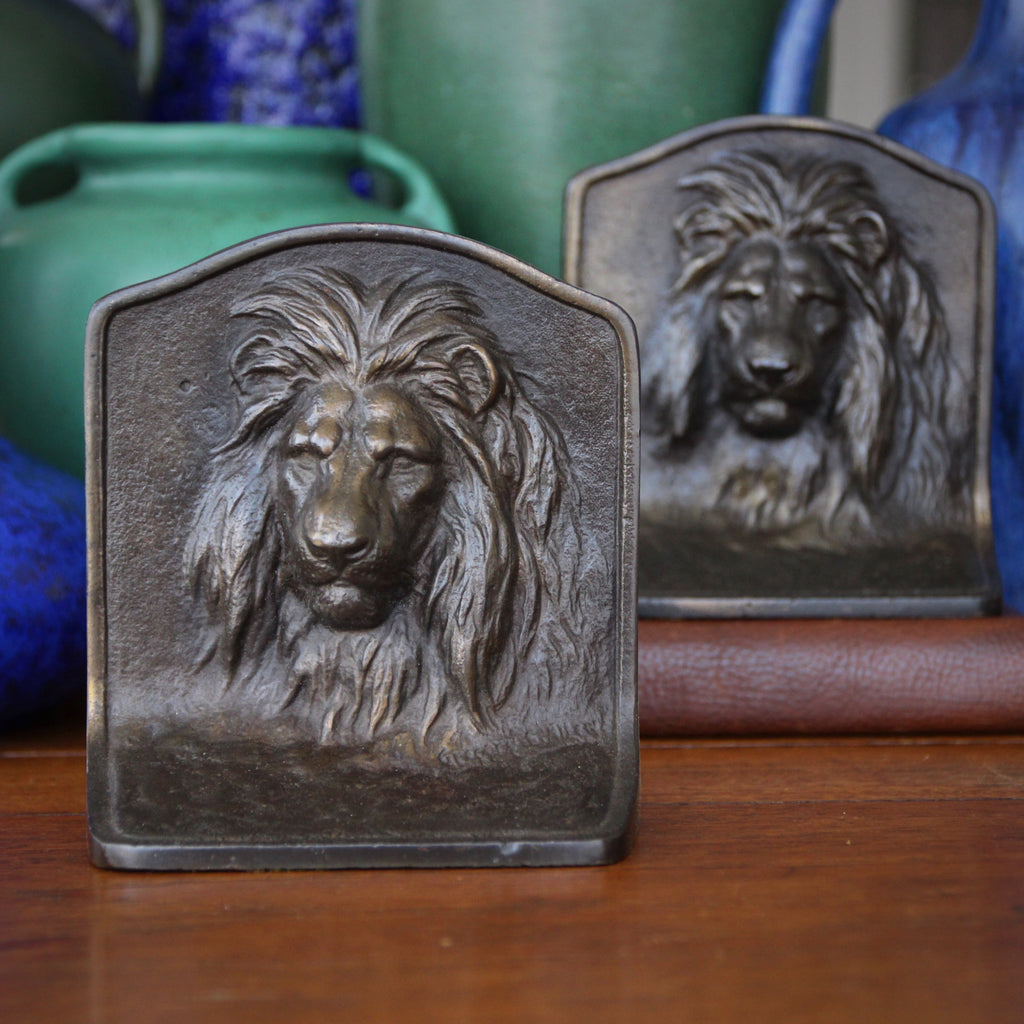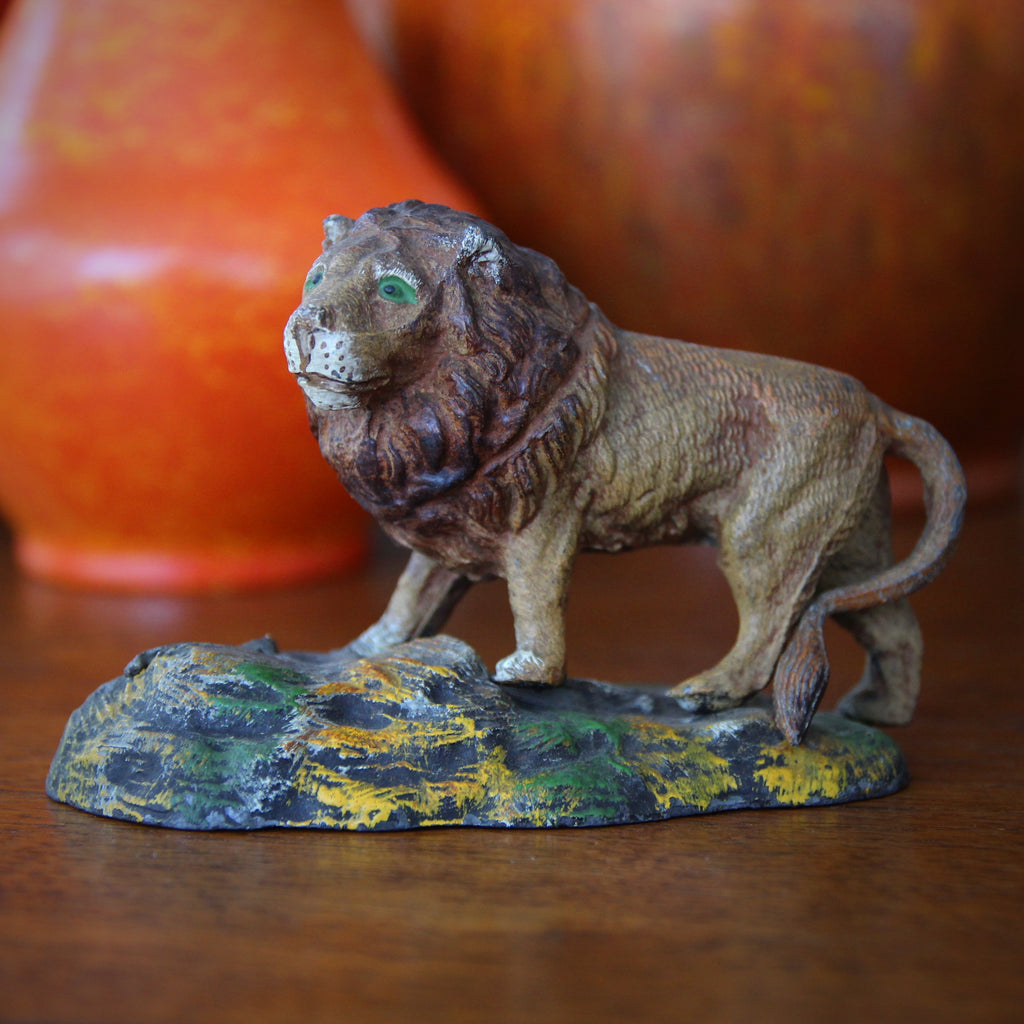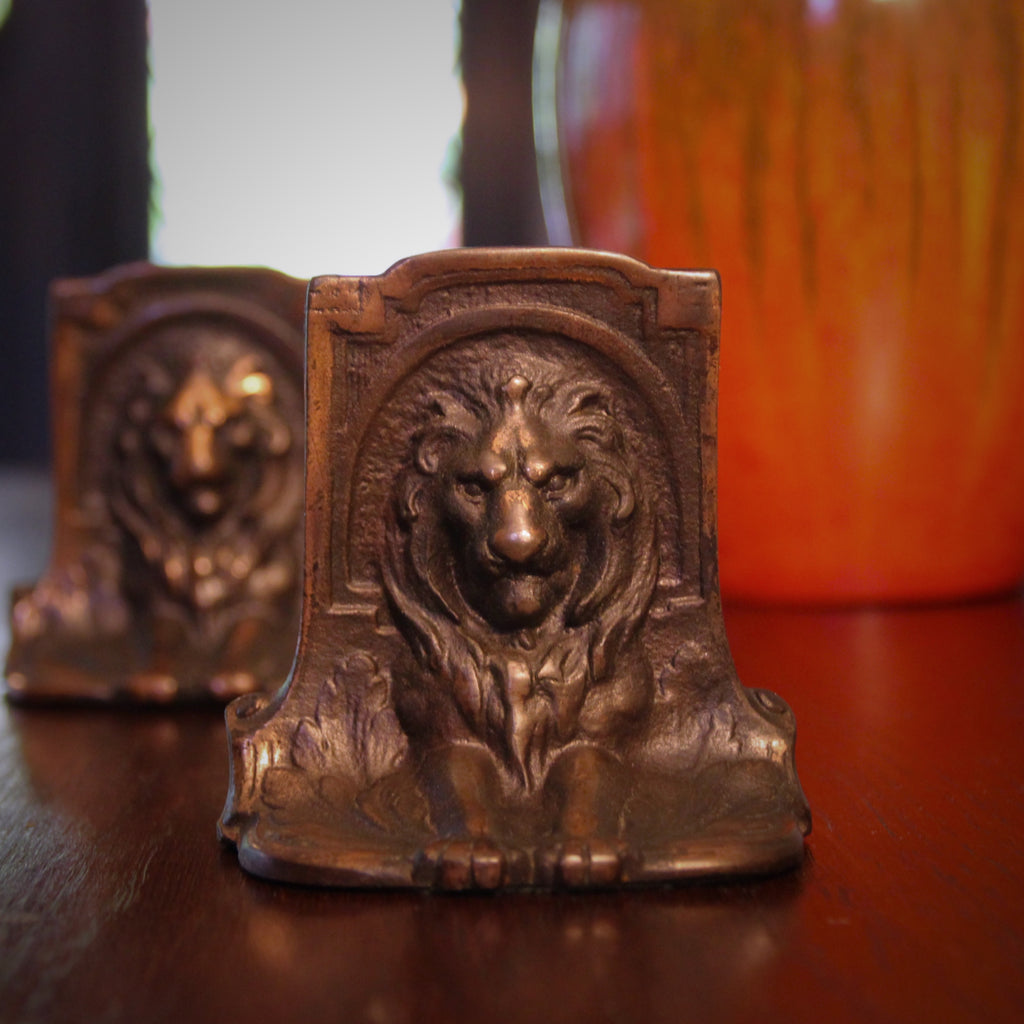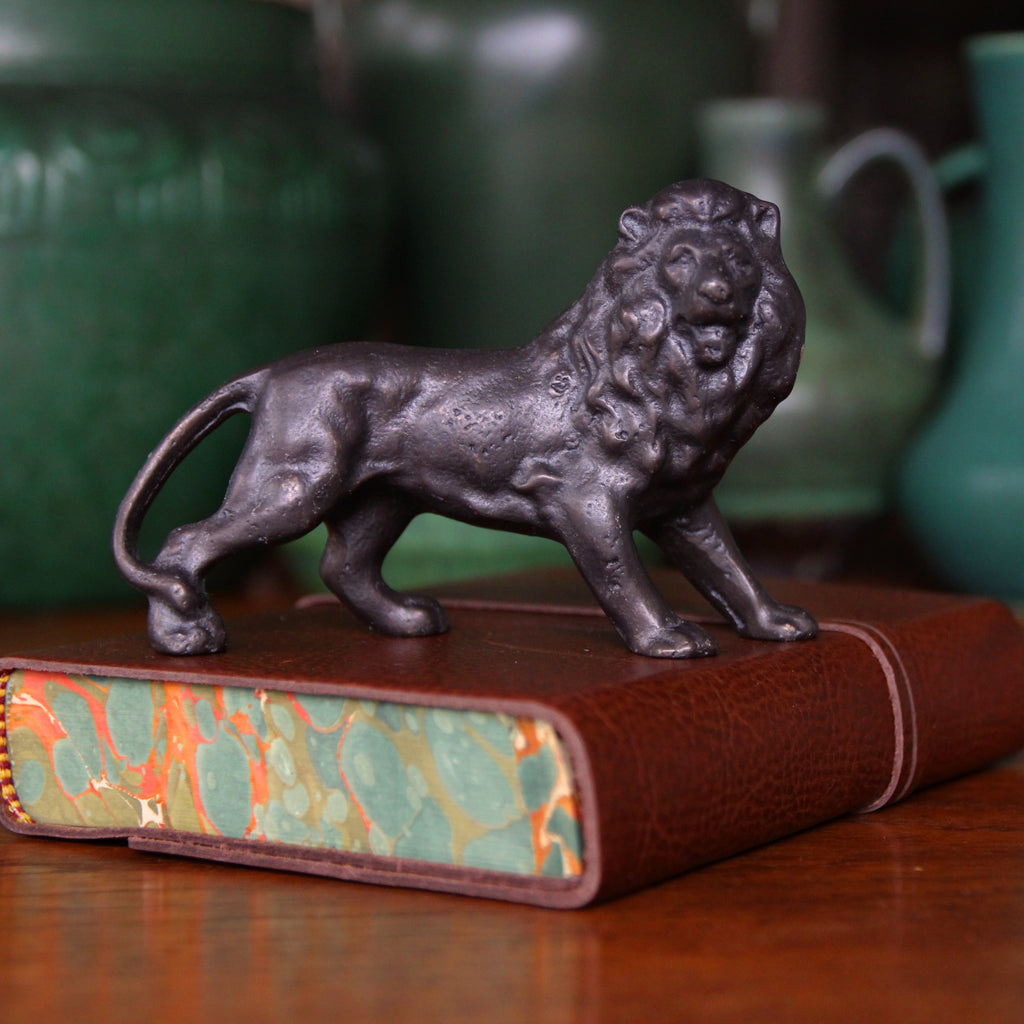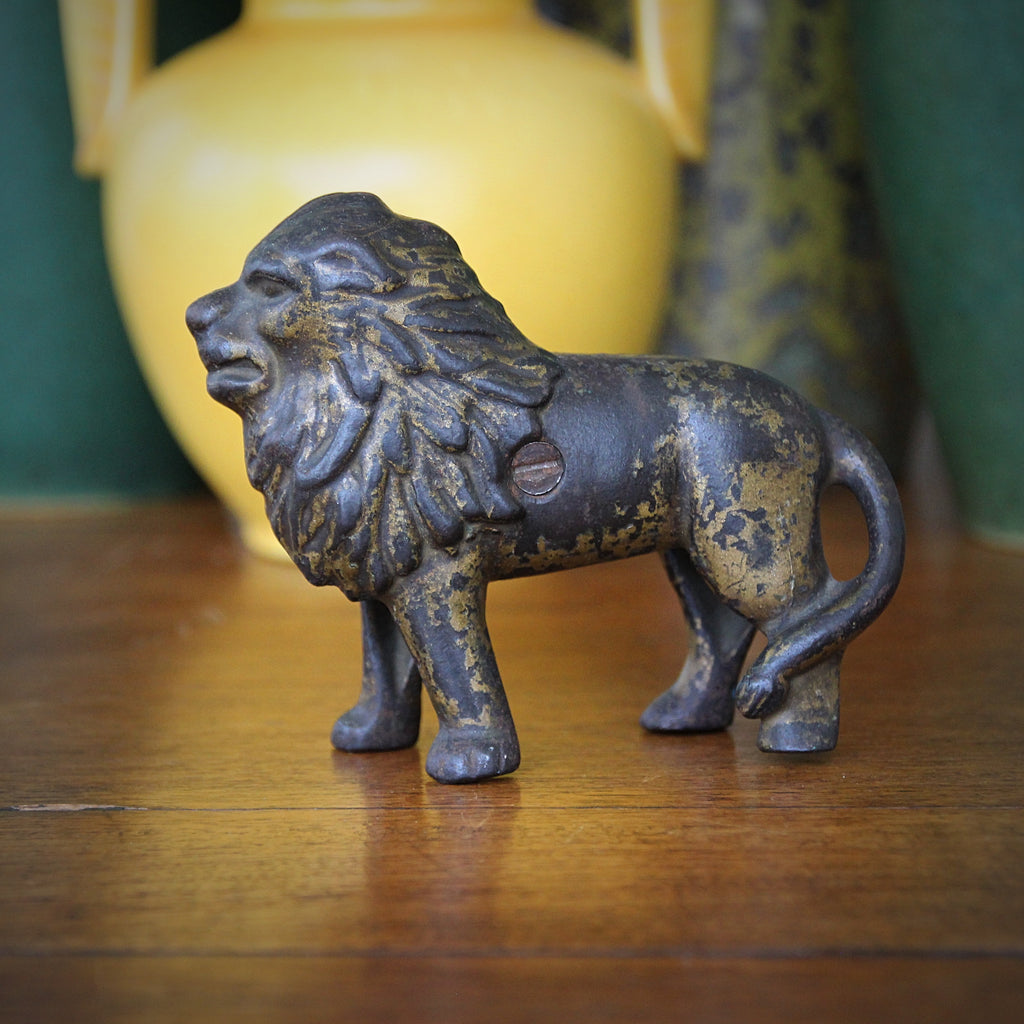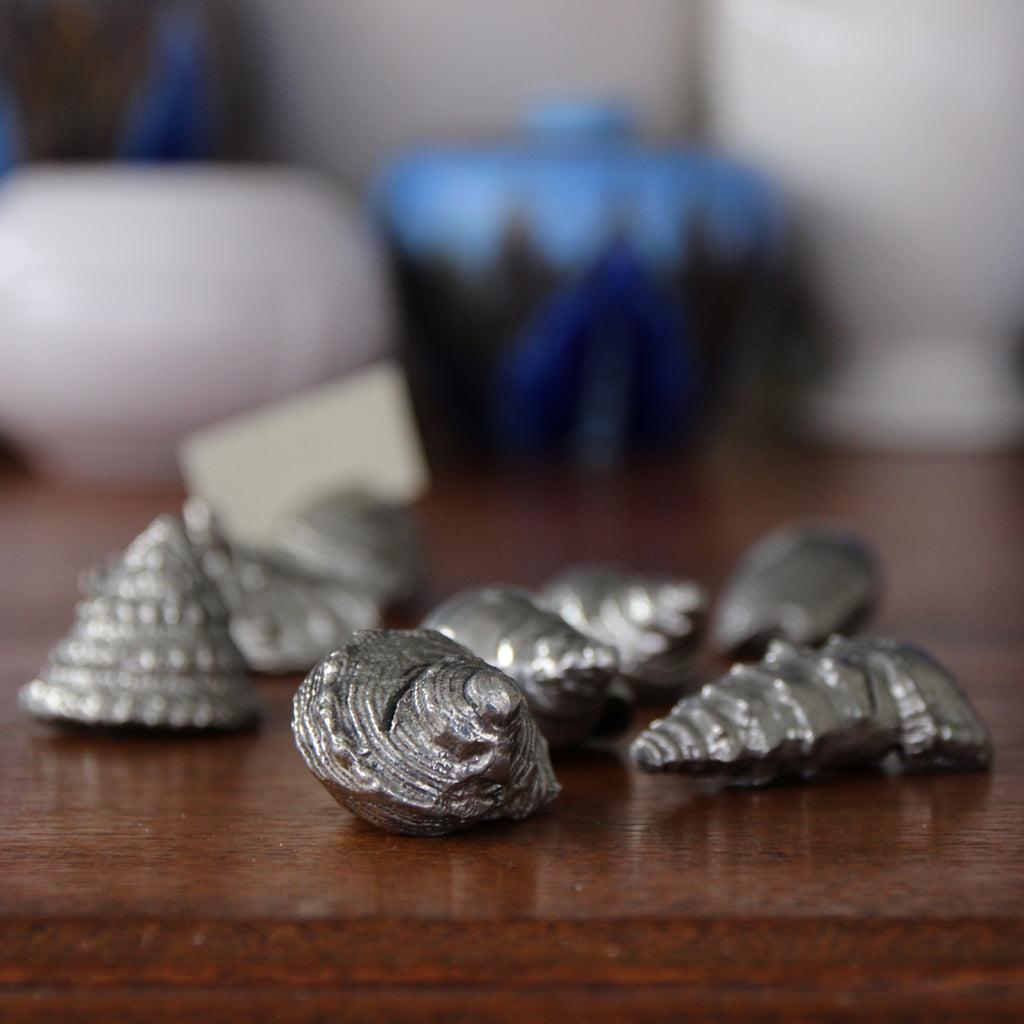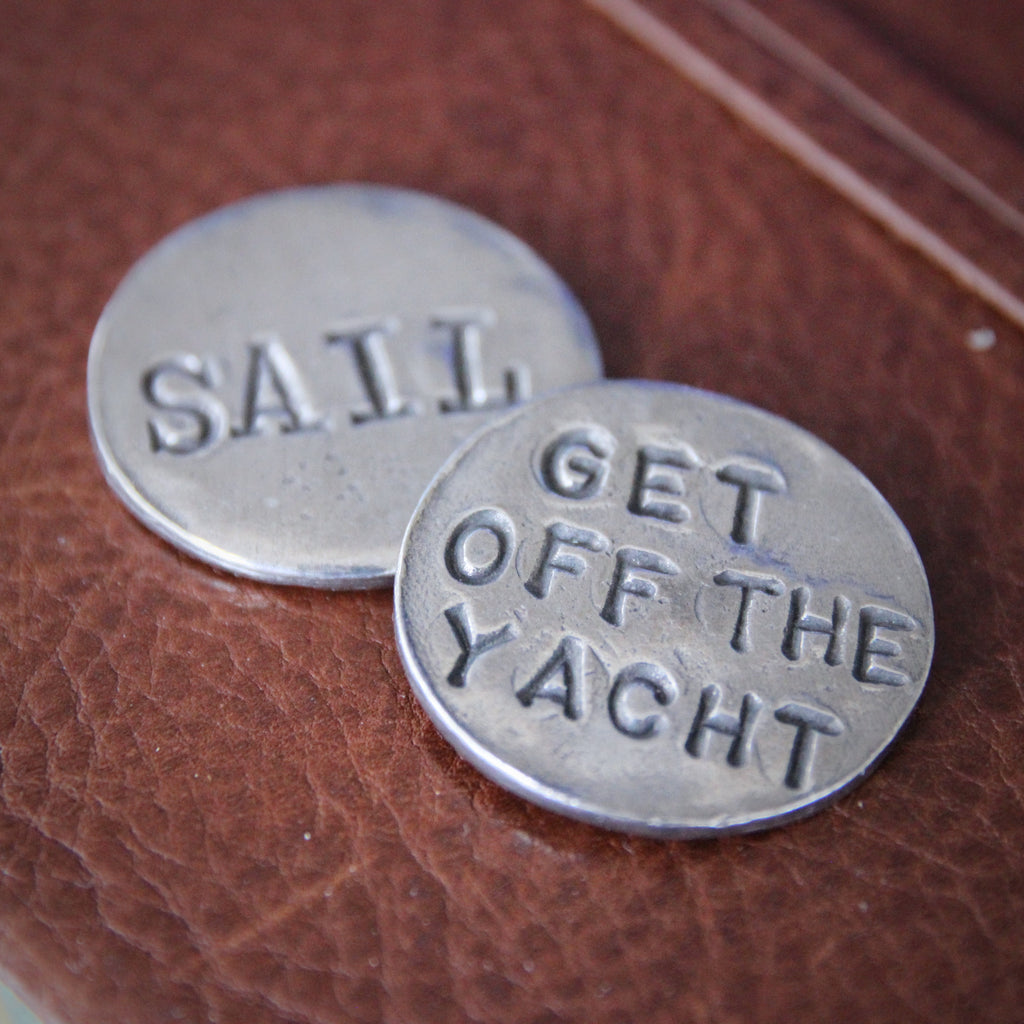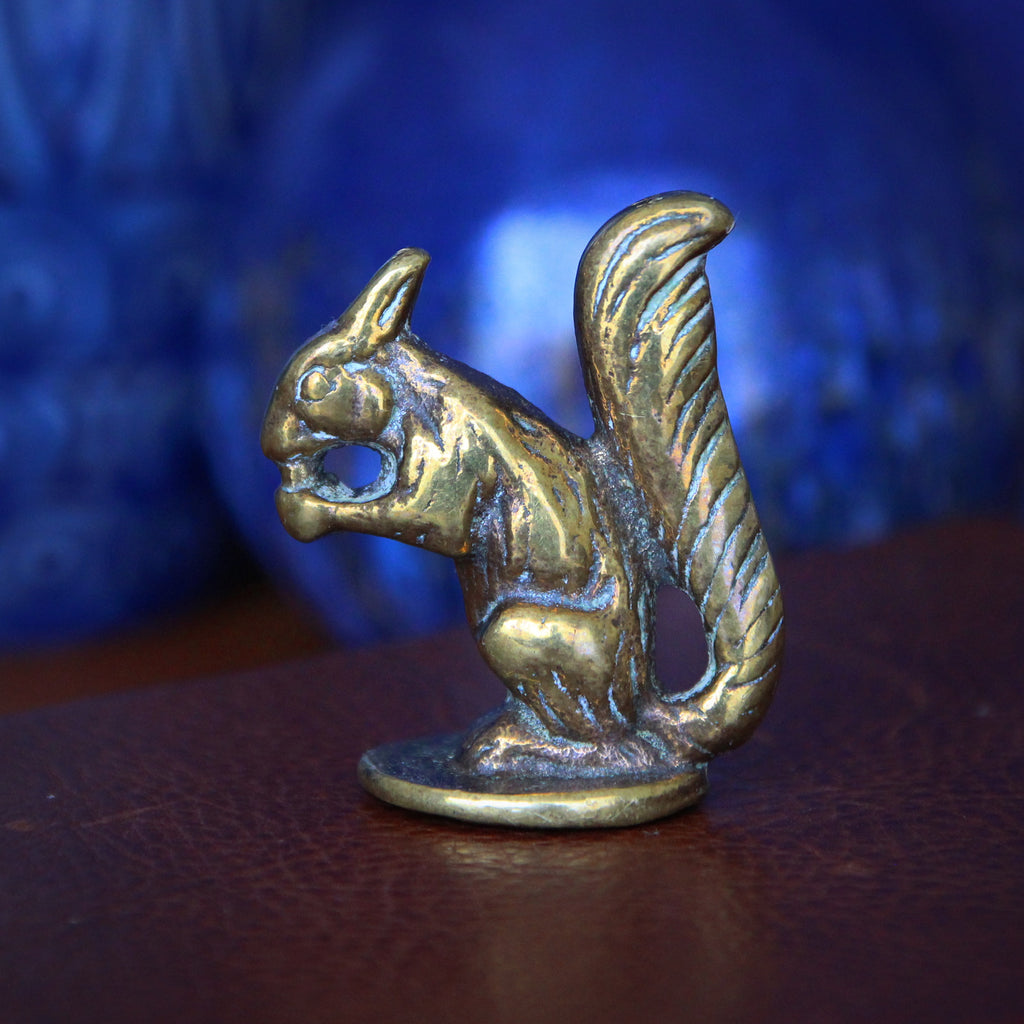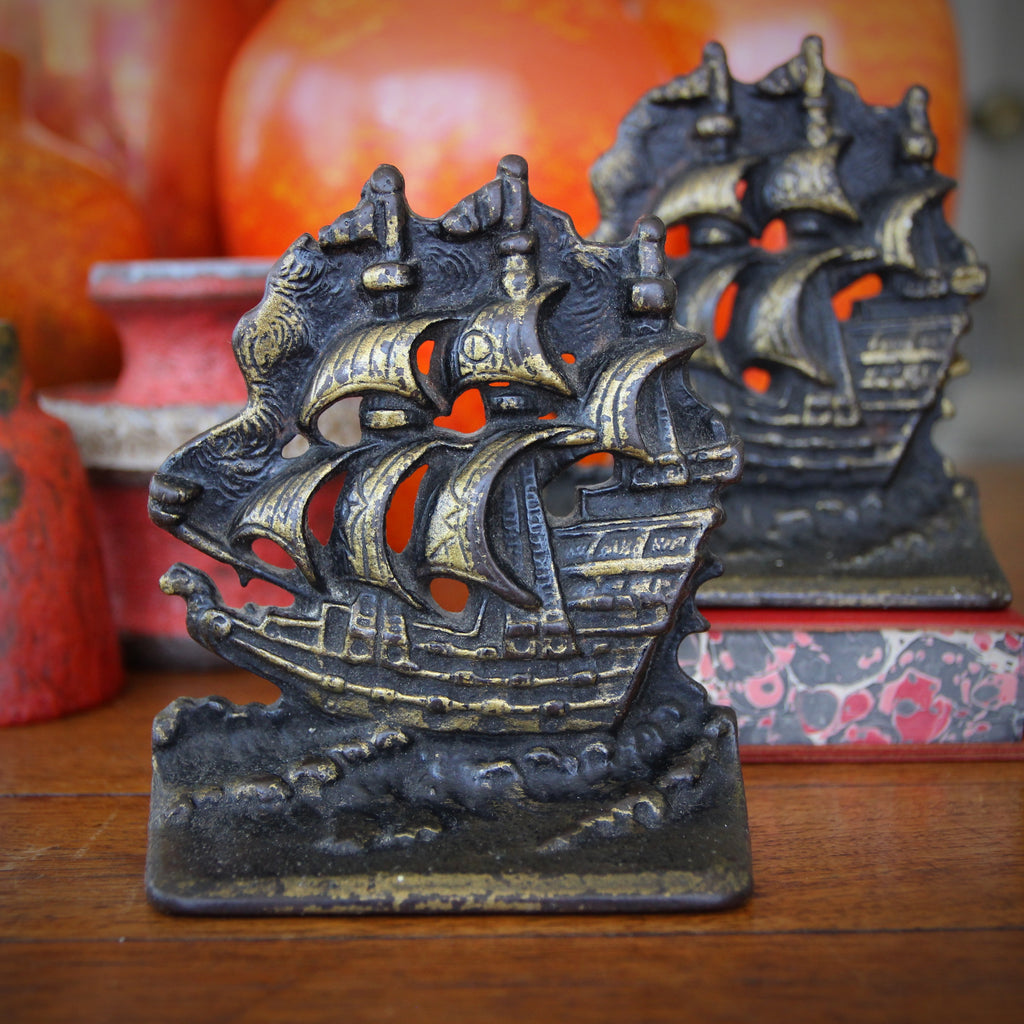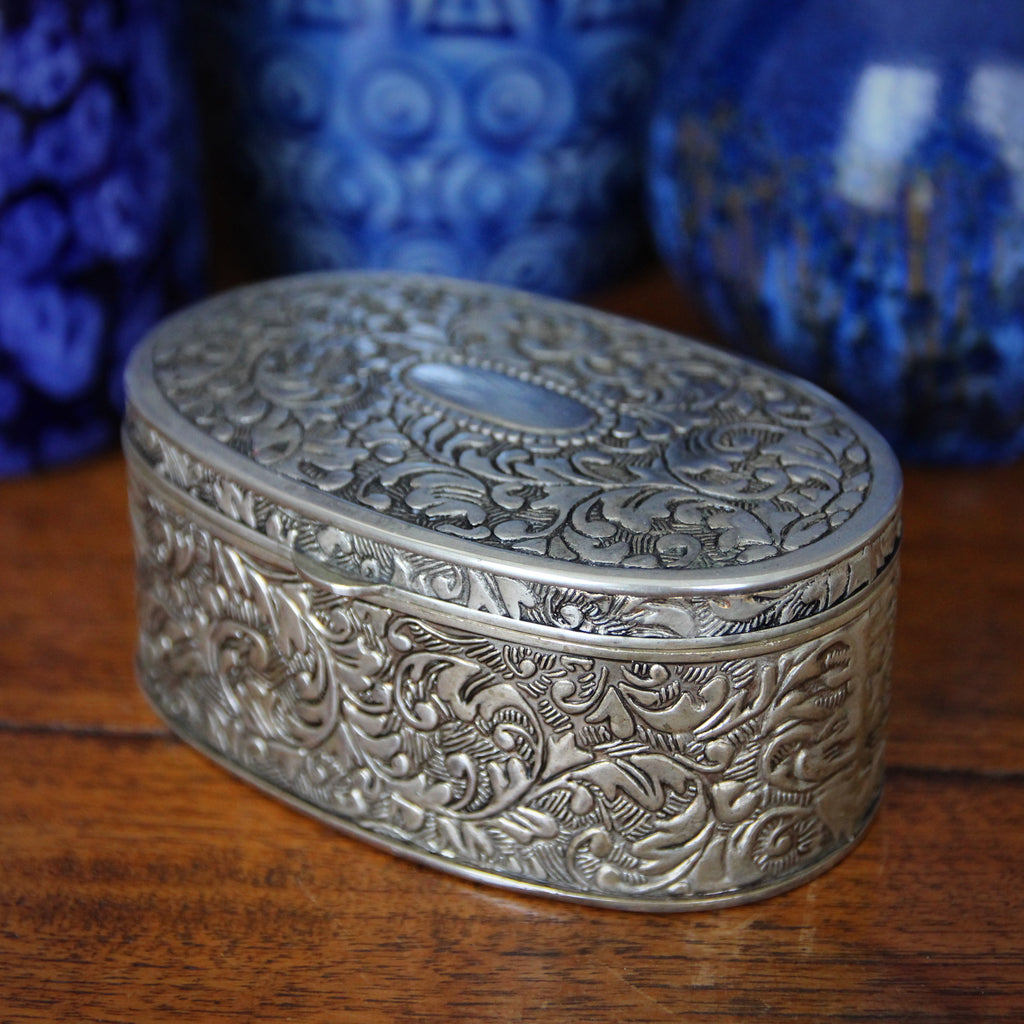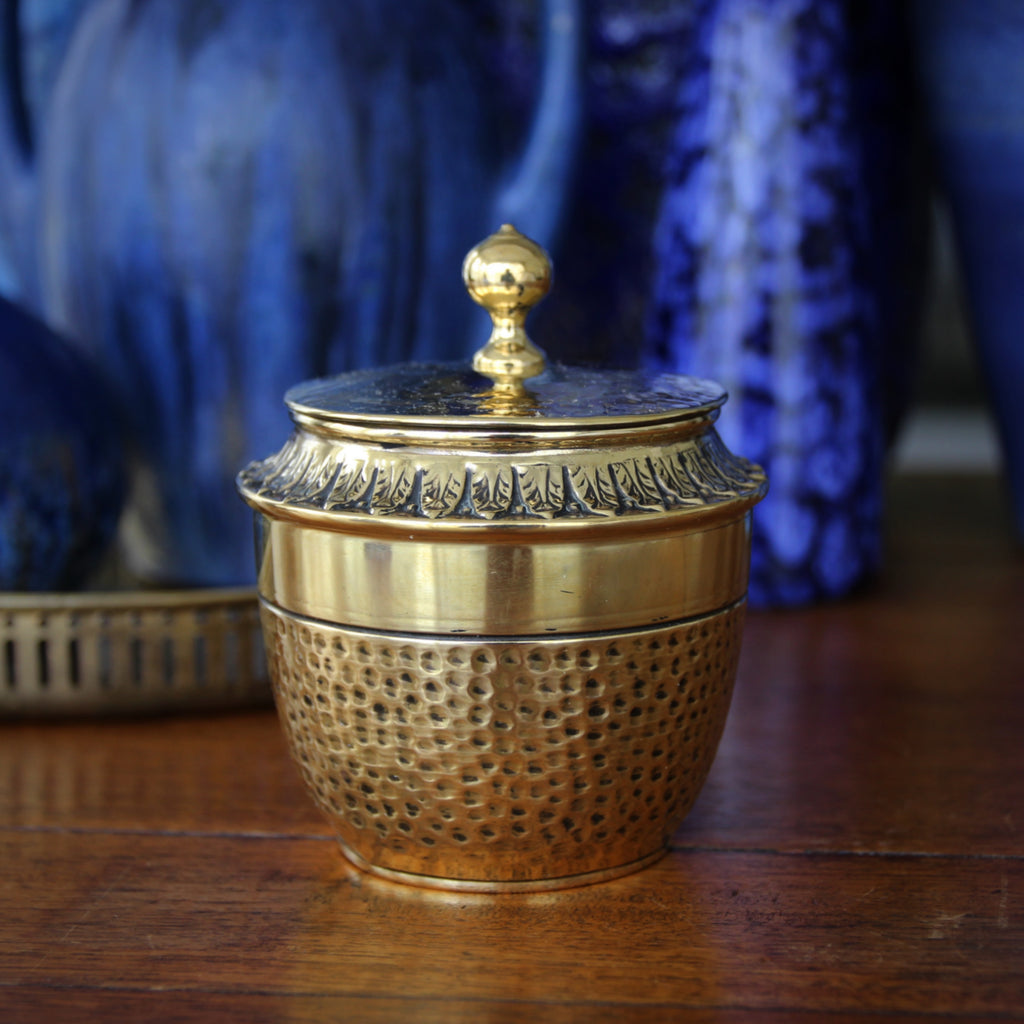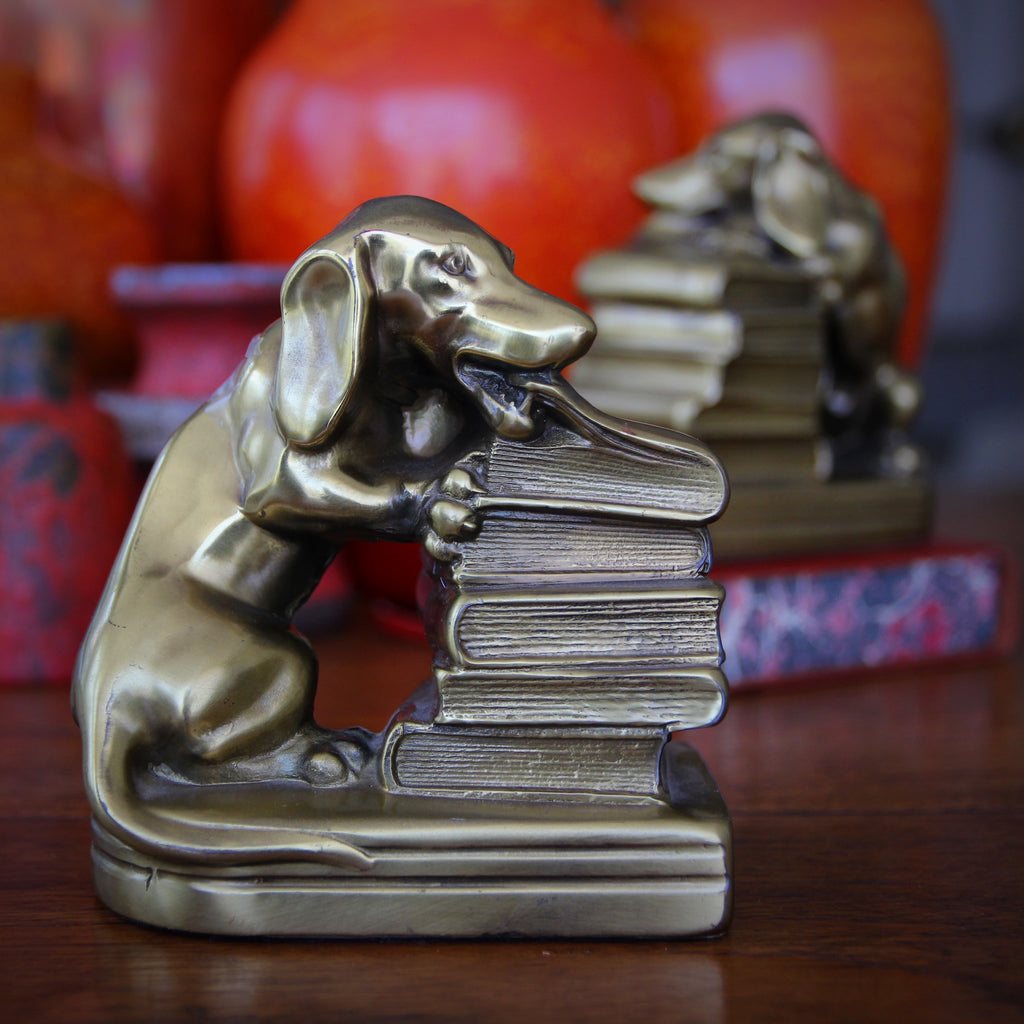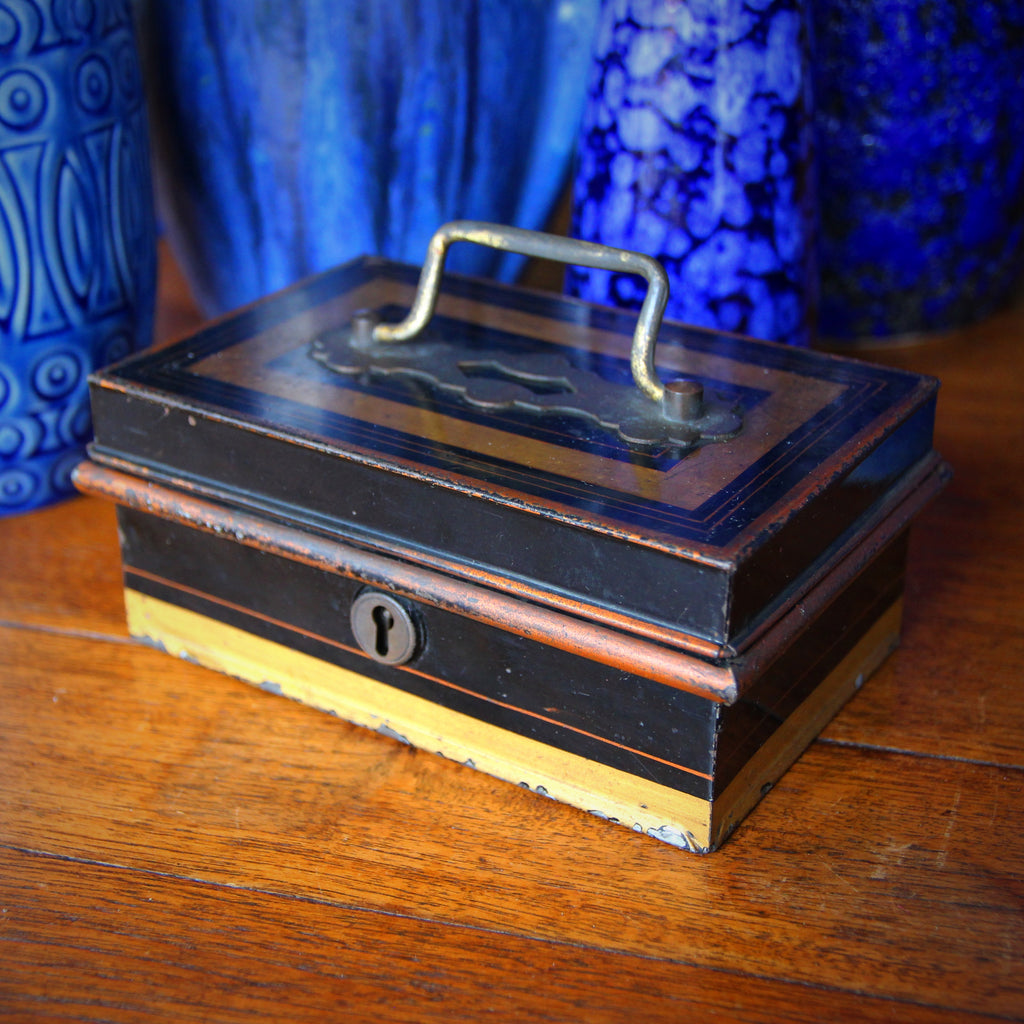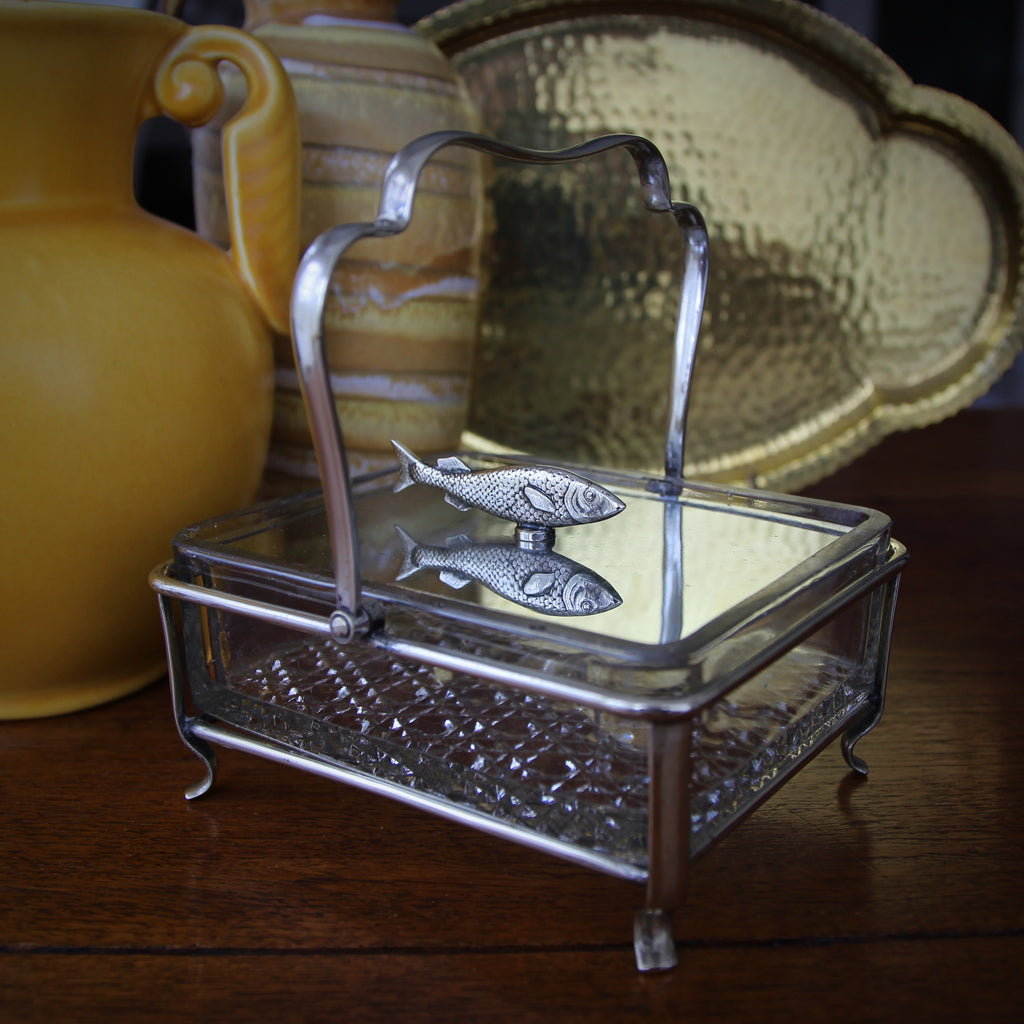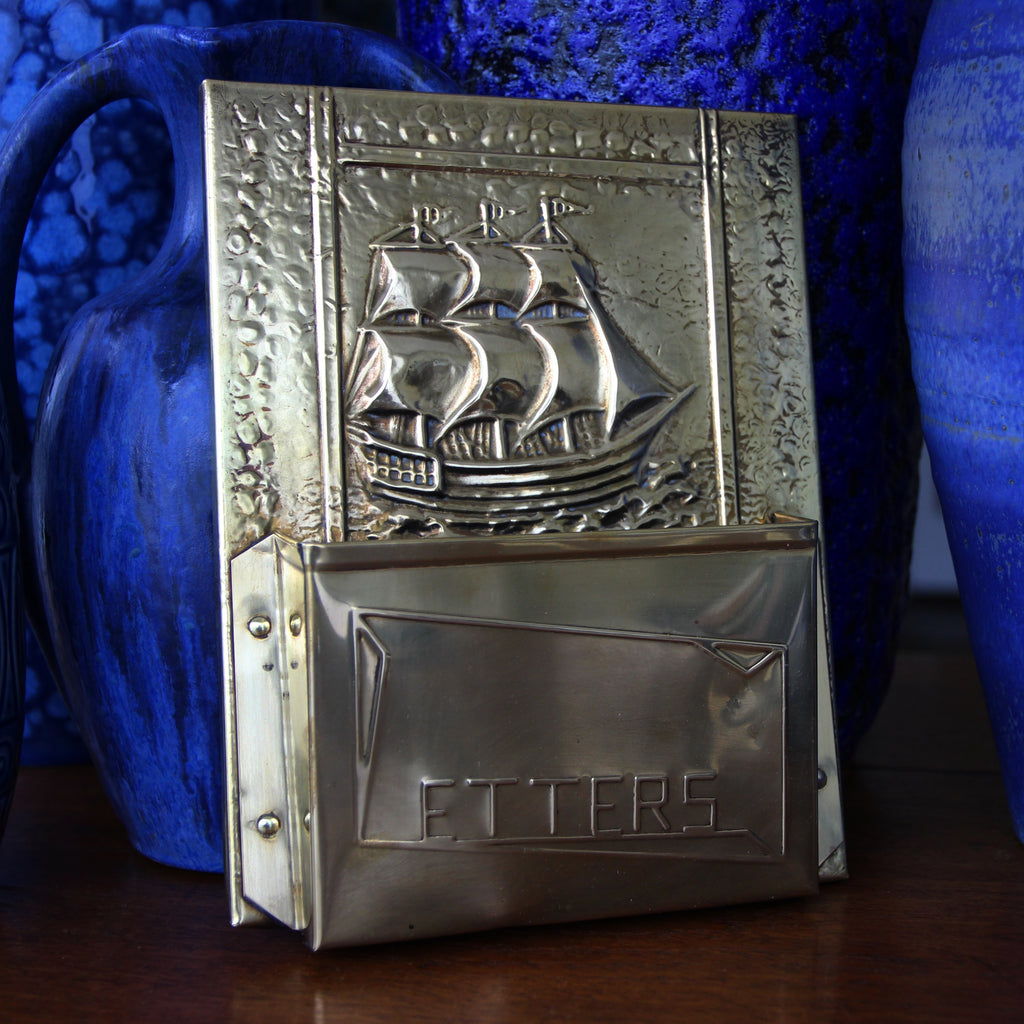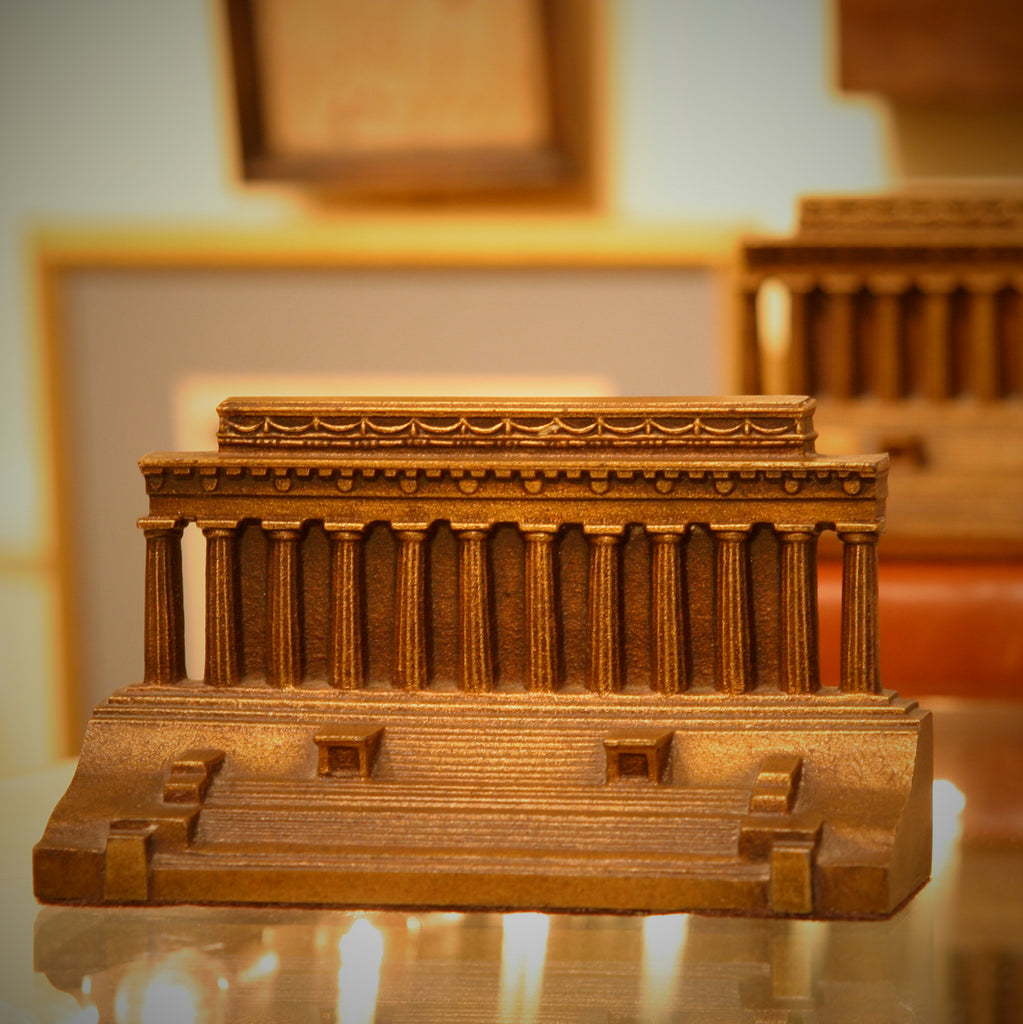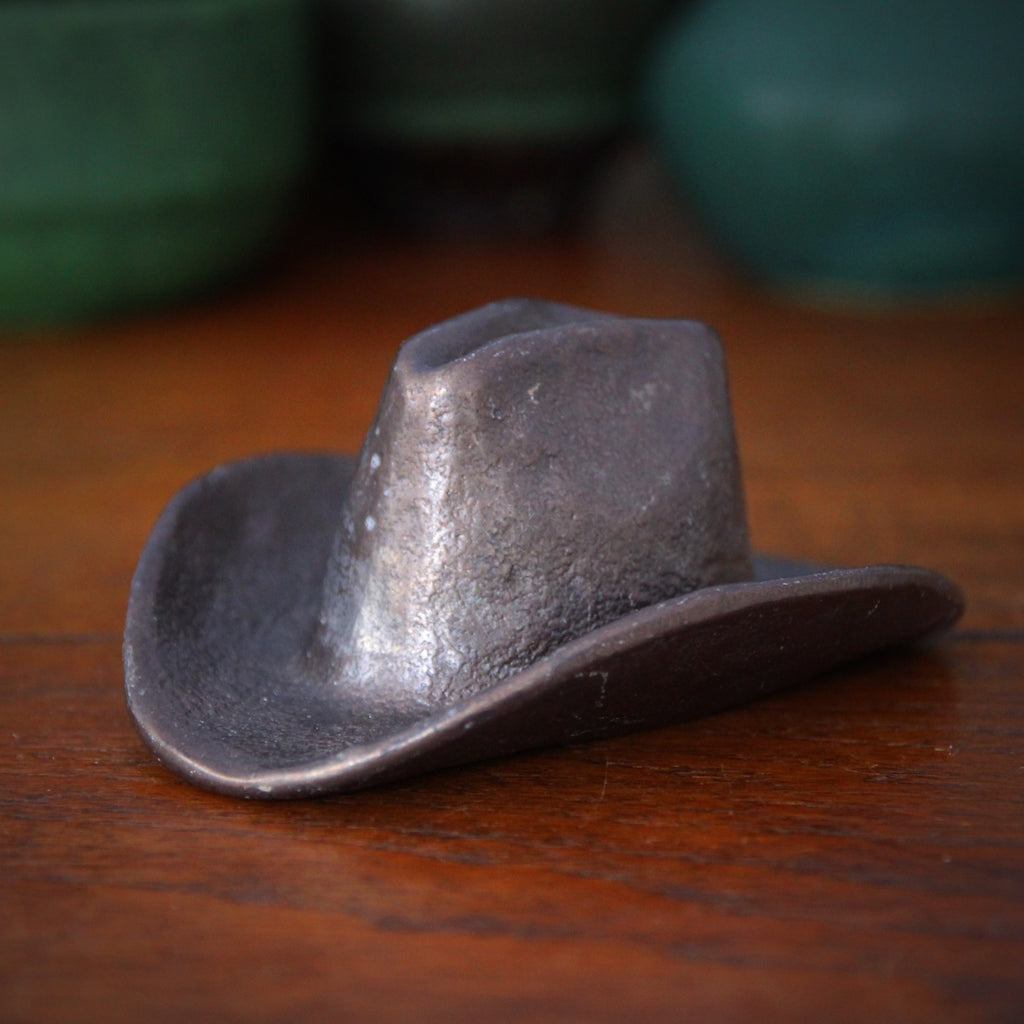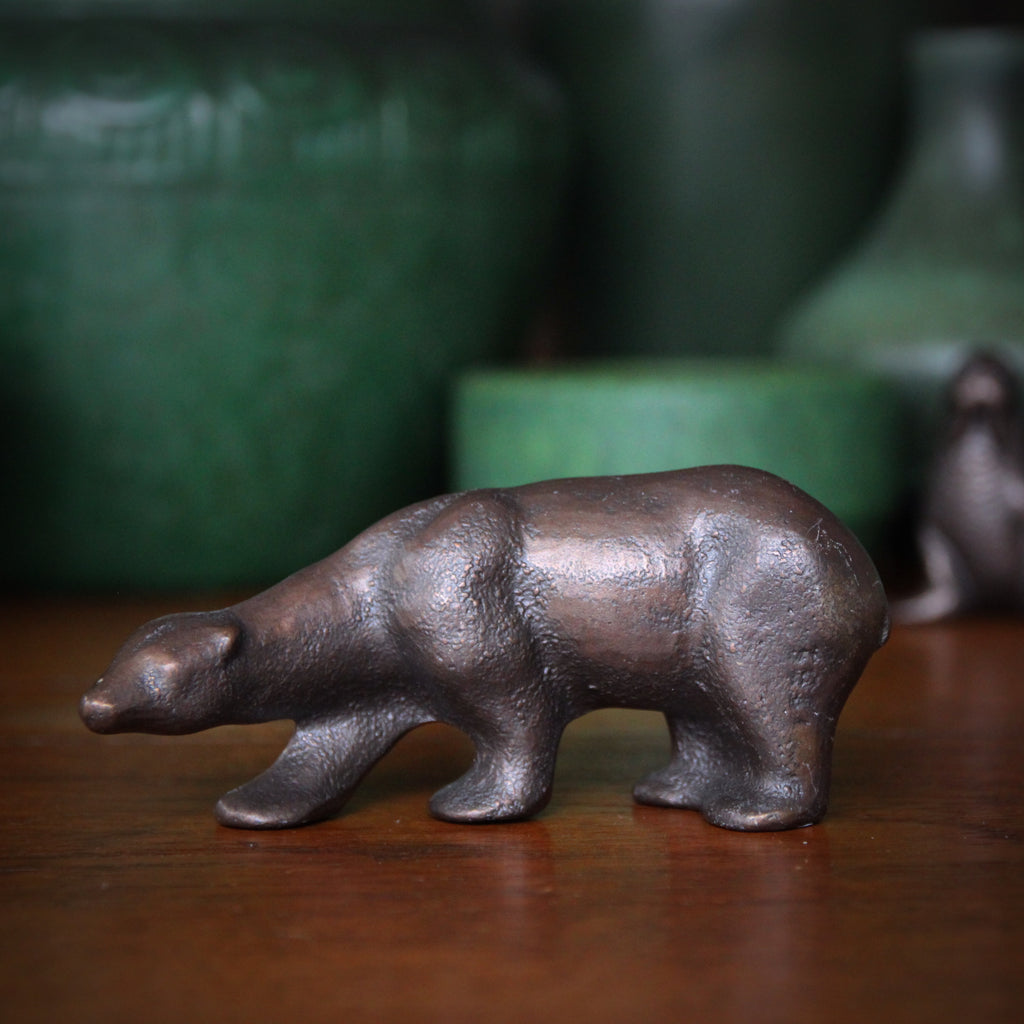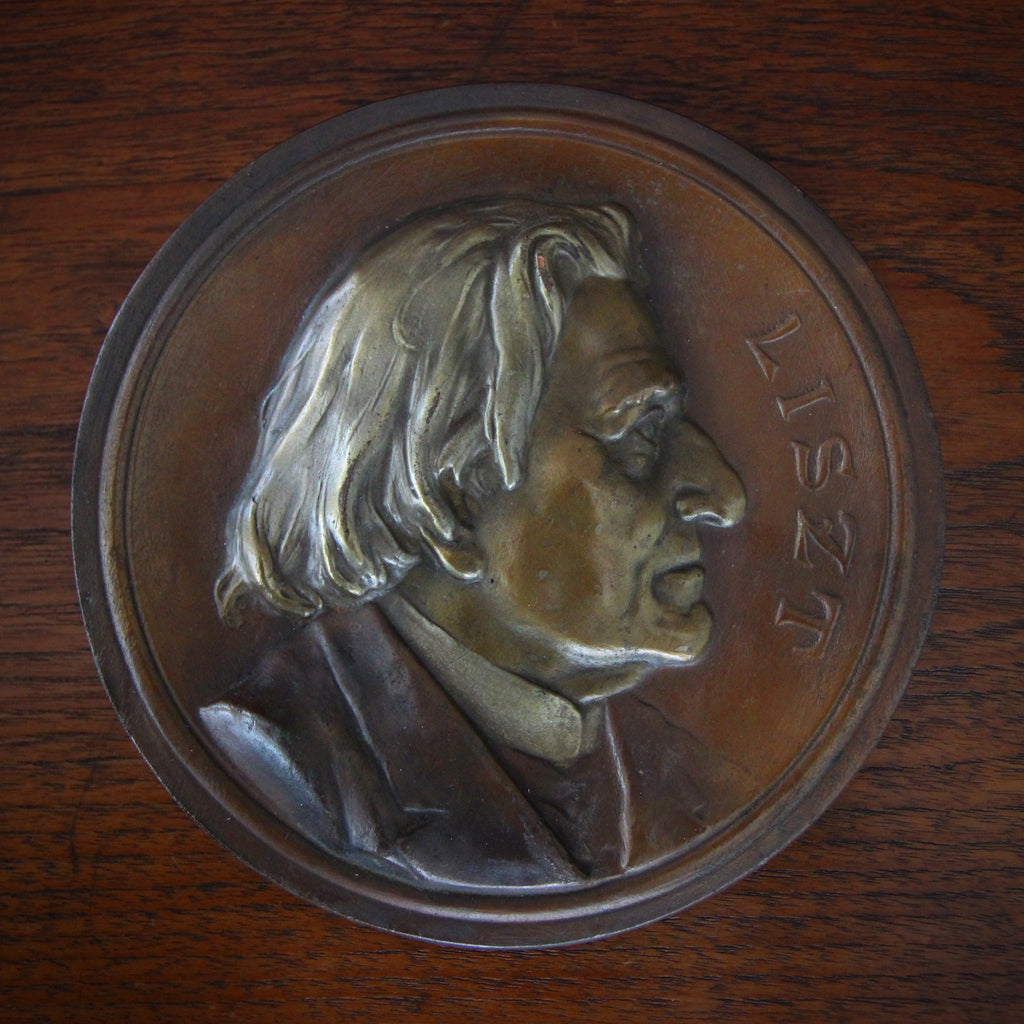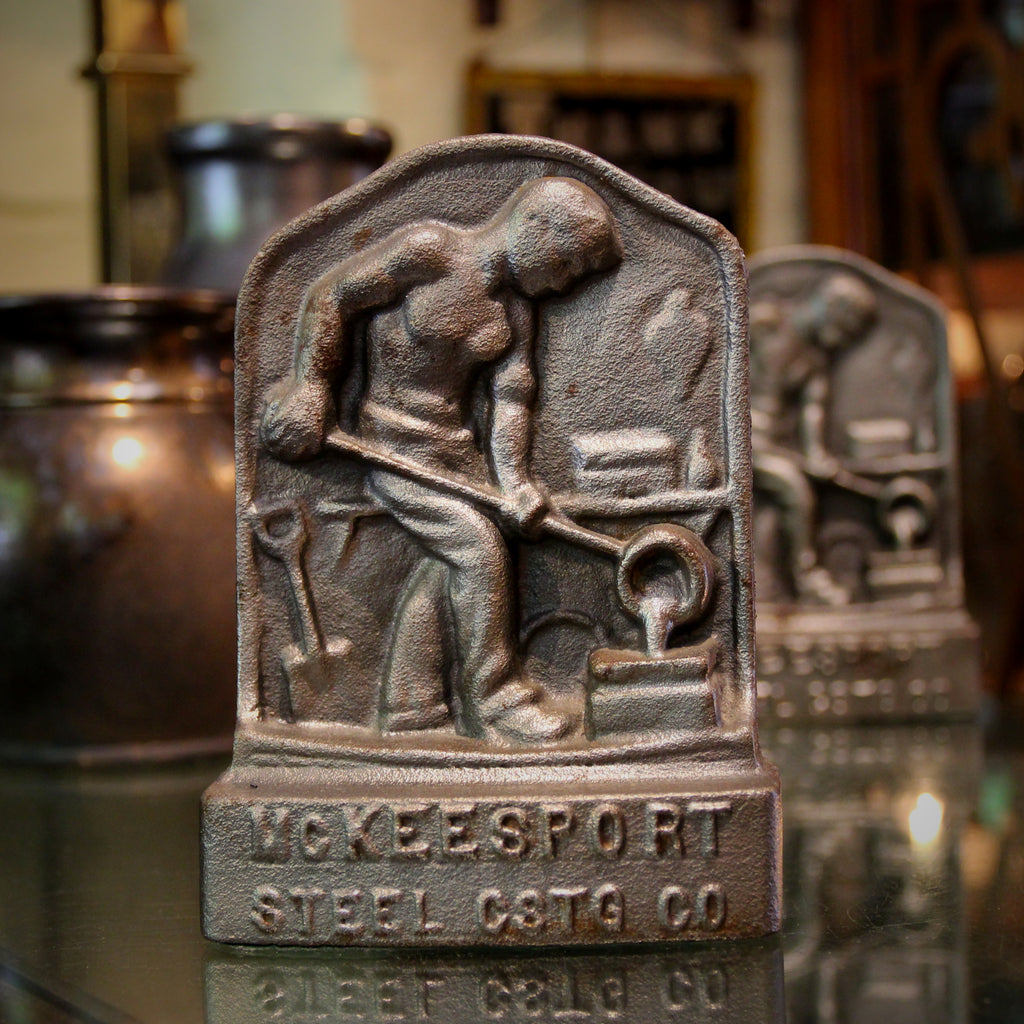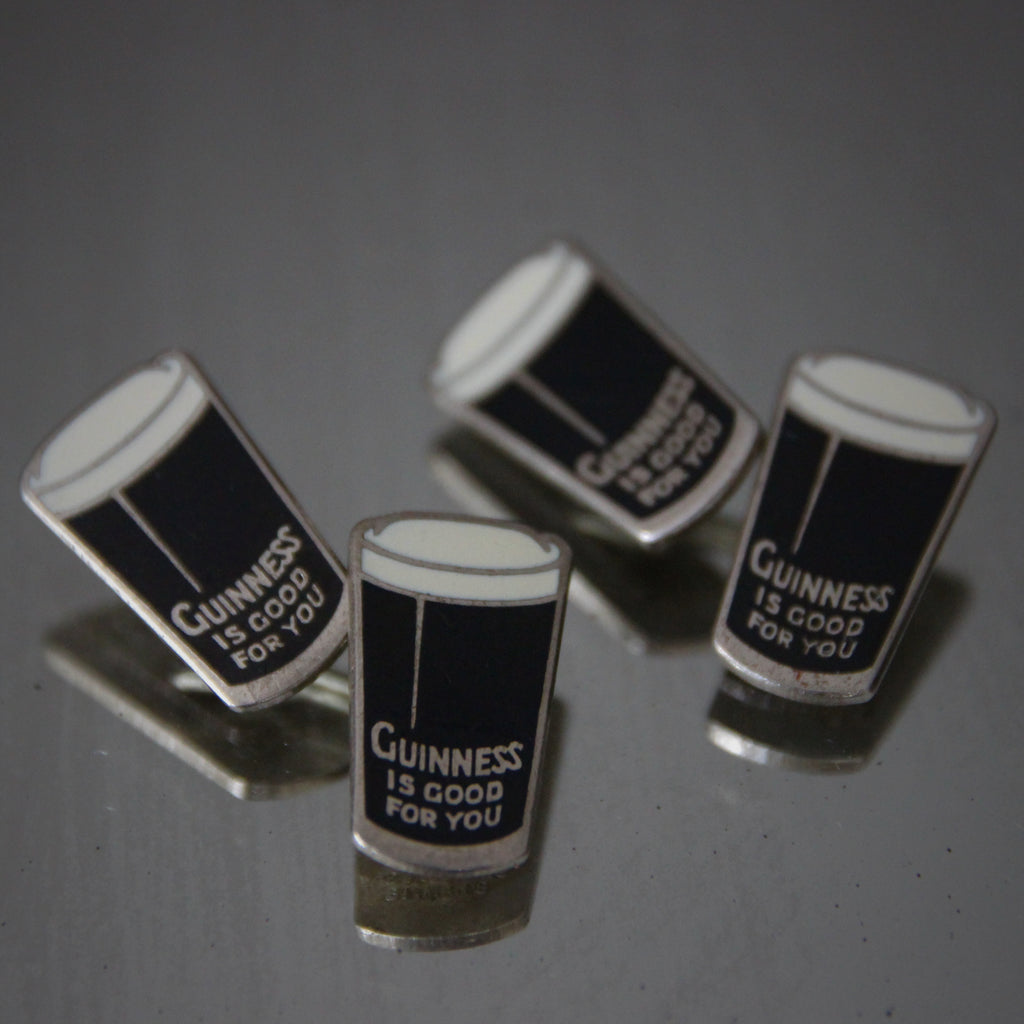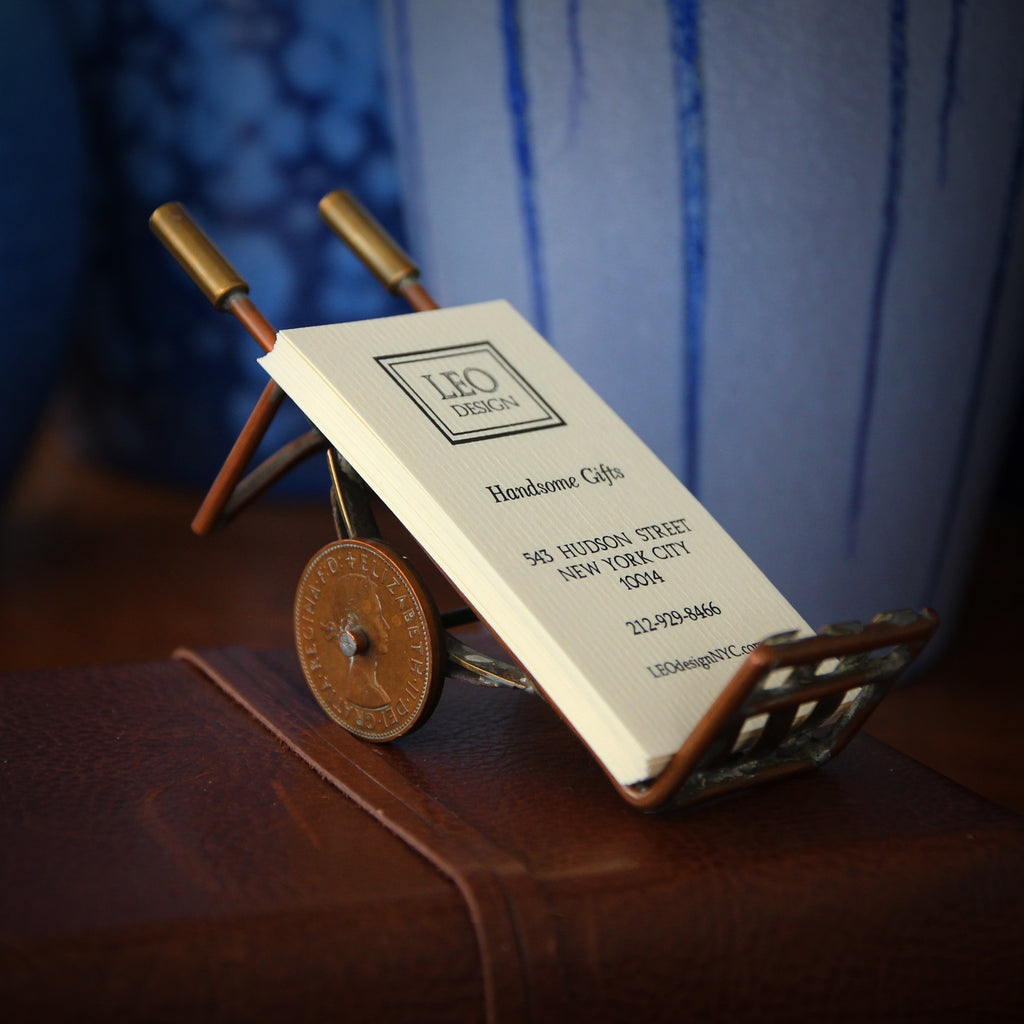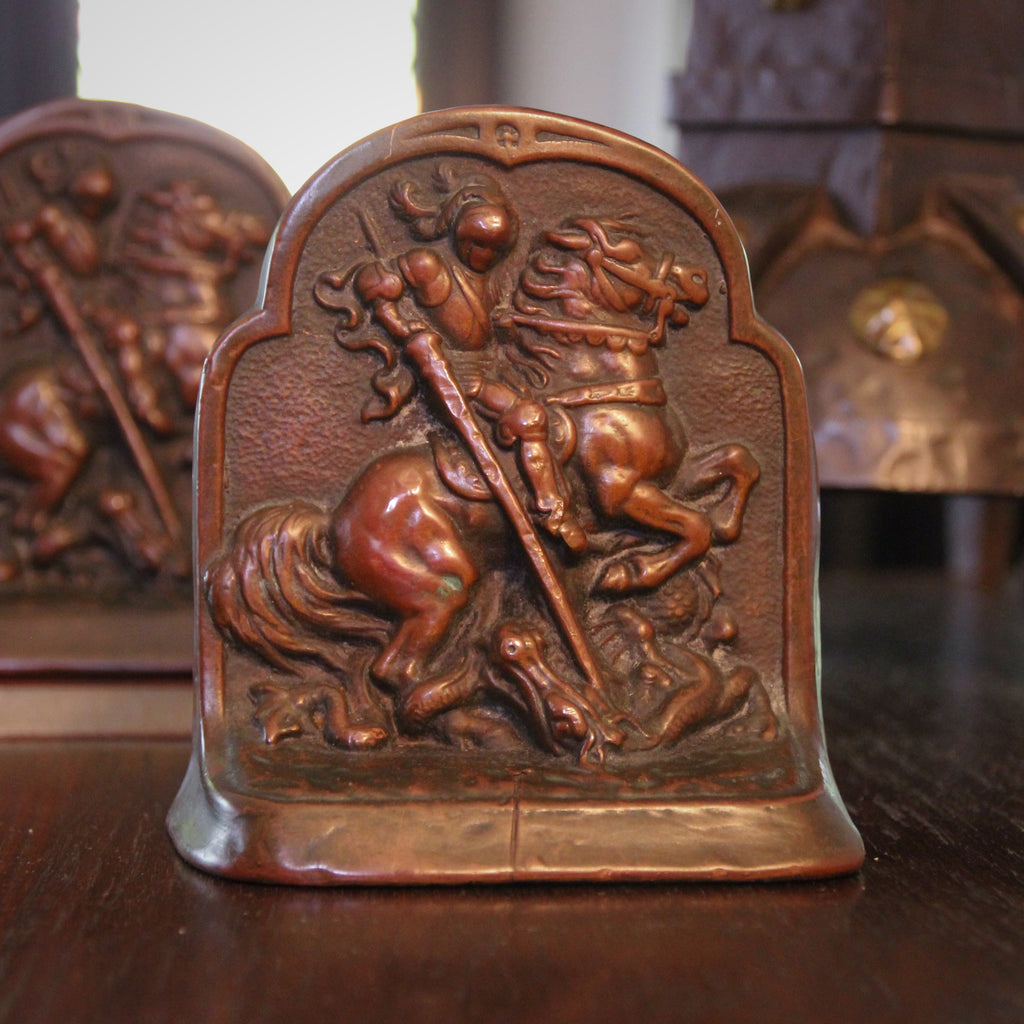JOURNAL — Metalwork RSS
April Showers bring May Flowers...
In honor of the season, we'd like to present some of our florally-inspired offerings—gifts and antiques which suit the Springtime bloom. Over the next few days, take a little time to "smell the flowers" (at least figuratively, when it comes to our floral-decorated objets).
Keep a dash of Spring close-at-hand (and close-to-heart) with this little pewter photo frame, bordered with a row of crisp, understated flowers. A little "wallet sized" portrait (2.5" x 3.5") will pop from the frame (which can sit horizontally or vertically). It stands perfectly alone or as part of a grouping of photos—on the desk, bedside or bookshelf.
You Had Mail . . .
On this day in 1950—73 years ago today—the U.S. Post Office reduced mail deliveries to once per day (Monday through Saturday). Many of us don't remember the time when mail came more frequently. In the Nineteenth Century, households received mail deliveries up to five times a day. In the first half of the Twentieth Century, households received a morning and an afternoon delivery; businesses received mail up to four times a day.
This Edwardian English wall-mount letter caddy was the perfect spot to stash newly delivered letters and newspapers at the Turn-of-the-Century. A handsomely chamfered oak panel is mounted with brass holders—embellished with enameled lettering and decoration.
Drawing With Light - Part II
Technology tends to "snowball"—that is, it makes a creeping start, after which the equipment and execution becomes geometrically more sophisticated and easier to use, even by amateurs. Photography is no exception. The first "camera obscura"—that is a box with a pinhole—is described in China in the Fourth Century BC. The invention of "film" (or light-sensitive material), used to record an image in this box, was still more than 2,000 years away. In these earlier days, the camera obscura was used to observe or project images (by artists, for example) or to safely observe solar eclipses (by astronomers). Once light-sensitive materials were developed (first metal, then glass, then celluloid and paper), they were married to the camera and photographers began to capture images...
Drawing With Light - Part I
The world's first photograph was taken by Joseph Niepce in France in 1826. It was a fairly crude image—shot from the window of his family's country home—and the picture required over eight hours of exposure time. This was not a practical or commercially-viable technology and Niepce died in obscurity. Niepce's assistant, Louis Daguerre, refined the technique with his "daguerreotype" process, introduced in 1839. Daguerre's images, printed on metal, were much clearer and only required a few minutes of exposure. Portraits could now be taken and customers were willing to wait-around for the finished product. In the intervening years, photography made great advances: printing on paper, producing multiples, and reducing the exposure time to fractions of a second, not minutes.
Twice-as-Wise
I have loved these "Wise Owl" letter racks since I first opened the LEO Design doors in 1995. The flamboyant Art Nouveau "whiplash" silhouette is tempered by the masculine owl, pine foliage and dark, antique brass finish. I always try to keep one of these letter racks on-hand, in-stock, since it makes such a handsome and meaningful gift. Almost everyone can use one on his or her desk. In 28 years of business, however, I have never had this deluxe version: a pair of owl letter holders, connected with a book rack between them. Made for a partners' desk in the early Twentieth Century, each partner could stash his mail in his letter rack and share a small collection of reference...
Knight Time
An armored night stands atop this Belgian Art Nouveau heavy cast brass letter knife, a souvenir from Belle Epoch Brussels. Part of the allure of Art Nouveau was its "reviving" of earlier, local culture, literature or mythology. The Gothic—the Medieval—was a popular choice in several Western countries. This handsome fellow will add a touch of Gothic Glamour to one's desk. It is also a practical gift—sure to remind the user of a generous friend each time a letter is opened.
Spring Tulips
Spring is here—and so are the tulips! I've always loved the "rubbery squeak" of tulip stems being arranged in a vase (always best with a fairly narrow neck). And a tulip's lovely cup-form blossom is unlike any other flower in the garden. The American Arts & Crafts candlesticks, shown above, were made by Meriden in Connecticut around 1910. The candle cups and stems are inspired by tulips. And their hand-hammered texturing—which was subsequently silver-plated—gives a soft sheen to the metallic surface. Meriden, Connecticut—about 20 miles north of New Haven—enjoyed tremendous prosperity during the Industrial Revolution in the second half of the Nineteenth Century. As the Nineteenth Century became the Twentieth Century, metalworks became the predominant industry of the city, which...
Good Friday
Good Friday is the most solemn day of the Christian calendar. It's the day when Christians contemplate and memorialize the condemning, torture, crucifixion and death of Jesus. Although the day is a dark one for Christians, it also marks the last hours before the great triumph, Christ's resurrection.
Shown above is a pair of German Jugendstil wrought iron candelabra. Made in the early Twentieth Century by Hugo Berger, they display the stark (but beautiful) aesthetic of honest handcraft. Wrought iron bars, some of them scalloped, support five candle cups. Pierced steel provides a stylized, floral inset. A softly faceted, hammered foot plate catches the light. And the dark patination gives the piece a centuries-old appearance.
Ready to Leap—Next Year
These handsome Art Deco gazelles are ready to leap! But, for now, they will have to still their hearts; Leap Year is still eleven months away—29 February 2024. We think of a calendar year on Earth—the time it takes our planet to circle once around the Sun—as being 365 days long. And this is close (but not exact). The Earth's transit time around the Sun is actually just a little bit longer than that: 365 days, 5 hours, 48 minutes and 56 seconds. A true year on Earth is 365.212490 days. In 45 BC, the Emperor Julius Caesar's astronomer, called Sosigenes, advised his boss to mandate a leap year every four years. This helped to keep the calendar synchronized with the...
Jugendstil
The Arts & Crafts movement in Germany was called Jugenstil, literally "the youth style." Like with Arts & Crafts movements elsewhere, this aesthetic school marked a break from the prevailing Nineteenth Century aesthetic—thus it was new and fresh (that is, youthful). The Jugendstil Movement promoted a revival of handcraft, simplicity of design, and the use of natural, honest materials. The movement was influenced by the Arts & Crafts movements of other countries and, in turn, it influenced other Modernist movements, especially in Northern Europe.
One "subset" of German Jugendstil (and Viennese Secessionism) exhibited a crisp, understated angularity, often in metalwork. These steel chambersticks, made in Württemberg, Germany, are a blend of primitive simplicity and industrial modernism.
Presidential
The Twenties and Thirties are considered "America's Golden Age of Bookends." It was during this period that American bookend production really took-off. Why this period? Most importantly, it was because it was during the early Twentieth Century that America's middle class really began to grow. Middle class families, with new-found disposable income, could afford to buy certain discretionary "luxuries" such as books. In the Nineteenth Century (and before), books and libraries were typically only within reach of well-heeled aristocrats. The vast majority of Americans, still confined to the working classes, might only possess a handful of books: a Bible, a cookbook, perhaps some poetry. But not enough books to fill shelves. Simply put, with few books in the average home, mass-produced bookends were...
The Wearin' of the Green
It's a great day for the Irish! Make the day even better with this pair of handsome—and festive—Art Deco enameled cufflinks. Kelly green and white enamel lies over etched guilloché work, providing a crisp and tasteful pop of graphic boldness. And the "soft" triangular form of the cufflinks' faces give them an extraordinary, modern look.
Golden Spring - V
Let's end our parade of "golden spring" cufflinks with this pair of Turn-of-the-Century Austrian Secessionist 14 karat gold beauties. Crisply-engraved "lozenges" are finished with background stippling and tooled edging.
Golden Spring - IV
These Edwardian English cufflinks reach-back to a more Victorian look. A curling serpentine separates two halves of the engraved oval cufflinks: flowers on one side, scrolling botanicals on the other side.
Golden Spring - III
"Soft triangles" are always a fresh (and uncommon) look in cufflinks. Made around 1910, one side has a shield-form botanical design and the other side remains blank—suitable for monograming.
Golden Spring - II
These Edwardian English cufflinks—etched gold-on-silver—have a decidedly Modernist look. With half of the faces engraved with stylized botanicals, a bold graphic effect is achieved.
Golden Spring - I
Though Winter will be with us for another 18 days, blessed hours of occasional warmth have been delighting us from time to time. These "golden days" of early spring—and the first blooming daffodils—signal the most wonderfully promising of days. For the next few days, we'll be sharing a collection of cufflinks which celebrate the early spring: golden links, decorated with floral and botanical engraving. Shown here, a pair of Edwardian English cufflinks, circa 1910. Two differently-shaped faces, one an oval and one a clipped rectangle, provide two ways of wearing the links. And one may find that the oval face is much easier to slip through a quartet of French cuff buttonholes. Tightly-packed clusters of engraved flowers provide a graphic bed which dissolves into...
Ash Wednesday
Ash Wednesday marks the beginning of Lent, the period of prayer, fasting and abstinence during which Christians prepare themselves for Easter, the greatest holiday in the Christian calendar. Lent is forty days long—not counting Sundays—and corresponds to the forty days Jesus spent facing-down temptation in the desert. Many Christian denominations, most prominently Catholics, hold special services on Ash Wednesday during which a cross of ash is imposed on the penitent's forehead while the priest or lay minister reminds him or her, "Remember you are dust and to dust you shall return." This black smudge is not only a humbling reminder of one's mortality, it is a reminder that one has been created, by God, from the Earth—and that one's body will one...
A Prayer for a Great Man
President's Day—which we celebrate today—naturally provokes a tendency to create lists, subjective rankings of the best and worst chief executives of all time. I'm not immune to this tradition. Typically, I restrict my analysis to those presidents in-position during my lifetime (Kennedy to Biden)—unless I am considering Lincoln, usually my all-time favorite. Now, back to my lifetime. I have no doubt which man was the worst president in my lifetime (hugely); both the worst executive and the worst person. I am likewise certain who my favorite president is (born 718 days and 1.7 miles from my birthplace). There is another president who holds a sacred spot in my heart—and I'm praying for him at this moment. While in-office, President Jimmy Carter was dealt an extremely difficult hand. Economics, geopolitics,...
Pisces
The sun enters the final region of the annual Zodiac today. Pisces, the fish, runs from 19 February to 20 March.
Pisces are know for their kindness and hospitality, always working to ensure the happiness of those around them. Pisces are creative, imaginative, intuitive, gracious and open-minded. They are sensitive to the feelings of others and are amongst the most sympathetic of people. But Pisces can, at times, "live with their heads in the clouds." They can be escapist, unrealistic, dependent on others and sometimes submissive to a fault.
Saint Valentine's Day
Valentinus—today known as "Saint Valentine"— was a Roman priest (and possibly a bishop) in Third Century Rome. He ministered to the persecuted Christian locals which angered the authorities and, eventually, led to his arrest. Valentinus was brought before the emperor, Claudius Gothicas, who came to like the priest. But, when Valentinus pushed too hard to convert the emperor, the monarch provided his own ultimatum: the priest must renounce his Christian faith or he would be clubbed and beheaded. The priest refused to renounce his faith and was martyred on 14 February 269. Before he was killed, however, Valentinus is said to have restored the sight and hearing to his jailer's daughter.
To Polish or Not - II
Polishing brass is much less fraught than polishing copper—for brass darkens much more quickly than copper. Any "ambitious over-polishing" will be remediated within a year or two. On a newly-acquired piece of antique brass, I will give it a thorough polishing if the piece is badly marked or unevenly patinated. Then, every couple of years, I will give the brass a very light re-polishing—just to give it a clean look, a little lift. I always avoid highly-polishing brass as it ends up looking too new. Like with copper, brass looks good when the repoussé work is polished with a "high-low" effect (to make the dimensional decoration "pop"). Furthermore, all residual polish must be removed from the crevices before it dries. Freshly polished brass...
To Polish or Not - I
A customer recently asked me for advice on polishing-up her antique metal trays. This got me to thinking—clarifying my thoughts of when and why I would (or wouldn't) polish something. When it comes to copper, the English tend to polish everything. And, in most cases, the copper probably was fully-polished on the day it left the craftman's workshop. American collectors, on the other hand, have an aversion to polishing copper—regardless of whether the metal was originally polished or chemically-patinated. As for me, I judge each situation based on the merits of the case. Ideally, a piece would always have a dark, even, nut-brown patina. Alas, this is rarely the case. When I acquire a piece of copper in England (as...
In a Jam
The swirling ribs on this Edwardian English glass jam pot add a sparkling vibrance to the colored jam, showing through. It comes from a time when every conceivable foodstuff employed its own specialized accoutrement. I suppose some families, some times, just pulled-out the store-bought jam crock—or served their homemade jams in their utilitarian canning jars. But when company arrived—say, at teatime—a proper (and beautiful) jar like the one above was suitable and tasteful. And, of course, a middle class household with servants didn't worry about the extra daily effort required to clean and fill jam jars.
A Different Edwardian Era
For all the Sturm und Drang of Henry VIII's reign (six wives, two of whom he beheaded), at least he could die in the knowledge that a son survived him—at least for a while (six and a half years). His nine year old son (born of Jane Seymour, who died twelve days after giving birth to the boy) became King Edward VI (reigning 1547-1553). Being so young, Edward's entire reign was "guided" by a Regency Council. Nevertheless, the Boy King had strong opinions, principally that England should drive a stake through the heart of the Catholic Church. He abolished clerical celibacy, banned Latin services, and even tried to leave his crown to his reliably-Protestant cousin (once removed) Lady Jane Grey (rather than either of his...
Dante Banished
On this day in 1302, the poet Dante Alighieri—Italy's greatest and one of the World's most important writers ever—was condemned to banishment from his beloved Florence. Dante found himself on the losing side of a fierce Florentine political battle. When his side, "The White Guelphs," lost the struggle, Dante was banished from his home city on pain of death. He moved to Ravenna, about 75 miles away, where he lived-out the rest of his days. And, by the way, it was in Ravenna that he wrote his most important works—works that changed the face of Western literature and influenced our perception of Heaven and Hell. Dante was buried in the the cemetery of the Church of San Pier Maggiore.
Know Jack?
Jackrabbits are a variety of hare which lives in the Southwestern U.S. and Mexico. The fact that they are hares—not rabbits—is an important distinction.
Rabbits are more socially gregarious than hares, and their naked babies are born in underground burrows, called "warrens." Rabbits have been successfully domesticated, both in farming and as pets. Hares, on the other hand, tend to live more independently (sometimes in pairs). Babies, called "leverets," are born fully-furred, in above-ground nests, and they are mobile (and can defend themselves) almost immediately after birth. Their mother does not stick-around much beyond initial nursing. And hares have not been known to be well-adapted to intimate life with humans.
Another Bunny
The Lunar New Year festivities last for two weeks (and, of course, The Year of the Rabbit lasts all year). So let's share a few more rabbits over the next few days. This adorable bunny—a silver-plated wind-up music box—is haunched in concentration, licking his paws or planning what to do next. He plays "Rock-a-Bye, Baby." While the music box is meant as a gift for an infant, it's been even more popular as an interesting desk item for grownups (perhaps, especially, those born under The Year of the Rabbit). Click on the photo above to learn more about him. Though our Greenwich Village store is now permanently closed, LEO Design is still alive and well! Please visit our...
The Year of the Rabbit
The New Moon "emerged" on Saturday at 3:55 pm (Eastern Time)--ushering-in the Lunar New Year and The Year of the Rabbit. A "New Moon" is the opposite of a Full Moon—that is, the time when no illuminated disk is visible (to the naked eye) from Earth. In fact, during a New Moon, the Moon is positioned precisely between the Sun and the Earth. When the Sun and the Earth are on opposite sides of the Moon, we on Earth cannot see the illuminated side of the Moon (which is facing the Sun). It takes 29.5 days for the Moon to circle (orbit) the Earth, during which time the Moon completes its cycle of "phases": from New Moon (invisible) to...
Guarding American Democracy
On this day in 1920, the American Civil Liberties Union was founded in New York City. For 103 years, the ACLU has lobbied and litigated for the fair and equal application (to all people) of the rights and liberties guaranteed by the American Constitution. The organization takes direct legal action in some cases and it also advises and supports the legal actions of other civil rights advocates. The ACLU weighs-in with amicus briefs, when appropriate, and communicates with lawmakers as to the constitutionality (or not) of their proposed legislation. Some people believe that the ACLU is a liberal organization, however, its history proves otherwise. The ACLU has long advocated for free speech rights, even for right wing organizations like the Ku Klux Klan and and...
More Light
The dark days of winter make us crave more light. And, if we cannot find the real kind, we will seek the "homemade" variety. This Aladdin brass oil lamp was made in Chicago in the 1910's. It was such a well-designed lamp, it won the Grand Prize at the 1915 San Francisco Panama-Pacific International Exhibition. Today, it provides nice, warm light in little corner or atop a table. The curvaceous milk glass shade softens and spreads the light throughout the room.
A Time for Light - IV
Let's end our parade of lighting with this special brass lamp—one which provides a little extra "oomph." A handsomely tapering brass shaft, with a vertically ribbed base, is lashed with brass lacing and punctuated with brass studding. This "laced and studded" embellishment does not push the design over-the-top. Instead, it provides just the right textural enhancement to an otherwise classic table lamp silhouette. The "laced" finial, atop, adds the final perfect detail to a handsome, timeless lighting fixture.
This lamp, made in New England, is one of a handful offered in my on-line store.
A Time for Light - III
Don't let the slender profile of this lamp, shown above, fool you. It is heavy, solid and stable, indeed. For many years, one of these lamps has stood on the corner of my cash wrap desk—secure against bumping, modest in its footprint, and providing ample light (with handsome style). Note the exceptional, pointed finial—evidence that this lamp was designed and produced with great attention to detail. It would have been very easy for the lamp maker to throw a nice, generic finial atop the fixture. Instead, the lamp maker designed a custom finial for this lamp alone—which adds the crowning touch to this exceptional light fixture. This lamp, made in New England, is one of a handful offered in my...
A Time for Light - II
Sometimes one needs nice light in a narrow space—say, atop a mantelpiece, on a small bedside table, or upon a sideboard or credenza. A candelabra lamp, like the one shown above, provides plenty of style despite its modest dimensions. It would even work well in the center of a library table or partners' desk. The base has a spare 5" x 9" footprint and the shade is just a few inches bigger.
This lamp, made in New England, is one of a handful offered in my on-line store.
A Time for Light - I
Though the days gradually are getting longer, this time of year is still a season of darkness. People want more light! The holidays—Christmas, Hanukkah, New Years—all do their best to brighten-up this darkest time of the year, often by adding cheerful light. It's also a time of year when merchants see an uptick in their sales of lamps and other lighting. The heavy, columnar brass lamp, shown above, will certainly contribute a healthy measure of "clubby gravitas" to any home, office or business. In fact, one theatrically-gifted Anglophile fashion designer's decorator bought a dozen of them from me for the company's (then new) supper club in London. They were placed atop banquet seat dividers and looked wonderful (they sent me...
Epiphany
The word "epiphany" derives from the Greek "epipháneia"—a manifestation or an appearance. Today, common contemporary usage tends to think of an epiphany as "a realization; a sudden clarity of thought," and this is not incorrect. But the original meaning includes a physical, visual connotation which is an important element to not forget. An epiphany, in the original sense, is seeing something which leads one to believe something. The Christian holy day of Epiphany is celebrated today, 6 January. In the Western Church, the Epiphany is associated with the story of the Magi who visit the newborn Jesus. The "Wise Men,"—all Gentiles—see the baby and they experience an epiphany: God is now present on Earth, here in the form of the human...
Clean Sweep
Christmas is behind us and we are squarely into the New Year. Time to clean-up, re-organize, get sorted! Perhaps the hearth needs a little attention—so active was it during a season of Holiday entertaining. This Victorian English fireplace brush is a handy and stylish way to make quick work of the mess. A soft horsehair brush is concealed within an embossed, heavy brass sleeve. Retract the brass cover and reveal the brush within. It will stand upright in a protected spot (as long as one does not bump it). And the decorative brass work will provide handsome punctuation to your fireplace 365 days a year.
Countdown to Christmas - VI
It is not only one week 'til Christmas. It is also the first night of Hanukkah! Hanukkah—the eight night "Festival of Lights"—celebrates the rededication of the Second Temple by God's People of Israel. The Books of Maccabees relates a story that only one night's worth of lamp oil could be found—and yet—the lamp burned for eight nights. Hanukkah menorah have eight candles, one for each night of the celebration, plus the "shammash" or "attendant" candle which is placed higher (or lower) than the other eight. This shammash candle is used to light the other eight candles—one each night. The Modernist bronze menorah, shown above, is ready for the Holiday Season. Click on the photo above to learn more about it....
Two Cute
Before I founded LEO Design in 1995, I worked for eight years at a large clothing retailer, a company which designed and manufactured its own products. My final position was working in the design offices, where I oversaw the Men's Shirting category. During the customary "show-and-tell" meetings—where each product manager would share his or her latest creations—if my female colleagues would say, "Ooooh, that's cuuute!," then I would know that I had done something wrong. My intention was not to create "cute" outfits for men. "Sharp" was fine. "Nice" was, well, nice. And "Handsome"—that was the gold standard. But their "cuuute" was too conventional, too trendy, too (can I say it?) girly. Even now, three decades later, I still resist acquiring any product which one...
Face-Off
The world, today, finds itself in a very tentative place. Amongst the big worries is the hair-trigger relationship between the United States and Iran, specifically Tehran's potential nuclear capability. Meanwhile, the streets of Iran are packed with young people demonstrating their dissatisfaction with their country's strict religious authoritarianism. Naturally, I feel supportive of Iranian youth struggling for freedom, human rights and modernity. Alas, many are paying a horrific price for their activism. It goes without saying, therefore, that today's big football match—the US vs. Iran—bears more weight than your typical Tuesday afternoon sporting match. In their first match at this World Cup (vs. England) the Iranian team remained silent while their national anthem played. They refrained from singing the lyrics. This act...
A Silvery Shiver
This winsome Christmas tree ornament—sculpted and cast in pewter—will add a cool and wint'ry folk art touch to your Holiday decorating. It was hand-made in California and also could be used as a stylish (and seasonally appropriate) candlesnuffer.
Bevy of Brooches - IV
People who follow my journal writings know that I repeat often the founding precepts of the Arts & Crafts Movement. One such tenet was the "revival" of ancient cultural elements—aesthetic, historical or literary references which had resonance for the people in that community, at that time. Another principle was the elevation of beautiful, common materials to the aesthetic equal of more precious elements. This English Arts & Crafts brooch ticks both of these boxes.
The brooch shown here was made in the very early Twentieth Century. Its silver-fronted face is embellished with meandering, Celtic-inspired graphics. Set within the brooch's face are five art glass cabochons—crafted with the appearance of Persian Turquoise.
Bevy of Brooches - III
Queen Victoria's beloved husband, Prince Albert, died in 1861. The Queen still had four decades left in her reign—a long period during which she remained in-mourning. Queen Victoria wore black every day for the rest of her life. And while her jewelry needed to be attractive, it also had to be appropriately understated—if not melancholy. The Queen set the fashion for the rest of the nation; for forty years, the entire nation observed some measure of mourning alongside their Queen. Thus, the English jewelry from the last third of the Nineteenth Century tended to be stately, serious and handsome—not whimsical, sunny or frivolous.
Bevy of Brooches - I
When I travel on buying trips, I am always looking for nice cufflinks and other masculine jewelry. But I am unable to avoid crossing paths with lots of women's jewelry. In fact, most jewelry dealers carry far more women's jewelry than men's jewelry. Given this reality, I frequently find myself picking-up some nice pieces for women. But my taste leans to the "handsome" more than the "girly". When I do buy a piece of women's jewelry, it tends to reflect a more robust taste: a bit heavy, a bit stoney, a bit serious, a bit dour. Late Nineteenth Century—Victorian Mourning Jewelry—always appeals to me. But I do try to step-out of my little lane, every now and then.
Back-to-School - Part XI
It happens to most of us. At 45? 50? 55? We start to notice that all the font sizes have suddenly shrunk. Inexplicably, someone down-sized all the print! Add to that: all those Twenty-Something tech wizards—who think they will never age—design the world's electronics and packaging and graphics with the assumption that "old folks" aren't interested in adopting their technology. Hence more teeny-tiny "buttons," micro-links and fine print to scrutinize. Well, sometimes old-time solutions will still solve new-age problems! Thus, one can never have too many magnifying glasses scattered around the house. In the bathroom for reading bottles. Near the TV for reading the PBS guide. Or in the glovebox for checking receipts. (Those mundane tasks which populate the pursuits of...
Back-to-School - Part IX
All work and no play makes any scholar a dull student (or so the saying goes, approximately). So take a break, a moment to relax and re-focus with this heavy brass puzzle, made in Brooklyn. Solid brass rods are finely machine-turned—engineered with exacting precision—which assemble into the three dimensional cruciform sculpture, shown above. Weighty enough to be functional as a paperweight; handsome enough to be a decorative conversation piece on the desk.
Back-to-School - Part VIII
For the last several days, LEO Design has been sharing some interesting Back-to-School offerings—ideas to help organize, cheer and distract as students push-on through their matriculations.
Style meets Function with this Edwardian English brass and oak letter rack, circa 1905. Simple swirling metalwork stands atop a wooden plinth, finished with a moulding edge. It's sized just-right for holding a supply of stationery and envelopes, bills and documents to be processed, or to do lists and other reminders. A small measure of sculpted motion means just the right amount of visual interest. Otherwise, the piece exhibits pure Edwardian utility.
Back-to-School - Part VII
While these sleepy Medieval Scholars might channel the soporific mood of late night study sessions, don't worry, it's not contagious! And we really should cut these monks a little slack; they've been trying to stay awake for 100 years. "Science" and "Study" personify the themes of age-old academia. They are sculpted in bas relief fashion upon the faces of these heavy, cast iron bookends from the Twenties. The monks, themselves, are dressed in a golden bronze finish. The body of the bookend itself is finished with a classic, chocolate brown bronze patina. They were made by Bradley & Hubbard (Meriden, Connecticut) the metals foundry which made so many handsome objects for Middle Class homes of the Victorian and Edwardian Ages.
Back-to-School - Part VI
So much for "the paper-free society." There is nothing as durable and conspicuous as a hand-written note posted in a prominent place. To do lists. Reminders. Addresses. Good wishes. Having a small piece of notepaper at-hand is always convenient and efficient—including in a productive dorm room. This polished pewter notepad holder was designed by Erik Magnussen (Danish, 1940-2014) for Royal Selangor. The 4"x 4" replacement notes can easily be purchased on-line or can be cut-down from recycled copy paper.
Back-to-School - Part IV
It's been said that "Time is Our Most Precious Commodity." Each day is allotted only a fixed number of minutes—and as each moment passes, it is gone forever, never to return. More time cannot be purchased at any cost, regardless of how rich one is. And further complicating things: though each of us possess a "bank" of time left on Earth, none of us knows his bank balance. Wise people think about and plan the use of their time. If a high school senior does not, yet, appreciate the value of her time—and the challenge of managing it—a college freshman will soon be made aware. Packed course schedules, layers of projects with varying due dates, and all those enticing extra-curricular...
Back-to-School - Part I
The school bell has rung! Pupils to their desks! While college freshmen may have encountered wistful parental partings, grade school returnees likely perceived their parents breathing a muted sigh of relief. Such is the annual tide of school-going: students flow in and out of their institutions with seasonal regularity. Like water, the droplets are always changing though the tides themselves remain regulated. Over the next several days, LEO Design would like to share some interesting Back-to-School offerings—ideas to help organize, cheer and distract as students push-on through their matriculations. I've sold dozens of English bells over the years, many of them styled like the one shown above, a Late Victorian Aesthetic Movement design from the 1880's - 1890's. This one, however, is the...
21 Years Ago Today
I opened my first shop, at 413 Bleecker Street, in 1995. Within three years I had expanded to a second space, LEO Design Studio at 28 Jane Street. This allowed me much needed space to buy and sell more furniture and other big pieces (including the occasional container from London). It also provided storage and workspace for us to clean and prepare merchandise for sale in the original (and much smaller) shop. But, with two monthly rental payments, more employees, and duplicate insurance, telephone & utility bills, my "monthly nut" became much harder to crack. One of my customers, a woman who lived just around the corner, happened to be an astrologist. She and I would talk about the name...
Made in China
At the tail end of the Chinese Qing Imperial Dynasty (1636-1912), this handsome brass cloisonné box was created. It features a tasteful floral decoration set against sophisticated oxblood enameling. A field of "meandering" brass metalwork provides handsome texture to the ground color. Inside, the box has a lovely turquoise blue enameling. And, atop the box, sits a hand-pierced and hand-carved jade medallion. Such a box was likely made for foreign visitors to China at the Turn-of-the-Twentieth-Century—traders, diplomats or military. It might have also been made for export for sale in shops in Europe or America. Cloisonné is the French name for this type of enameled metalwork in which colored material is laid within discrete resevoirs (called "cloisons"), separated by strips...
God Bless the Queen
Although we all knew it would happen—some day—it still comes as a shock. Today Queen Elizabeth II died at the age of 96. Her passing ended a 70 year reign—the longest in British history. While scholars and historians and advocates will argue endlessly about the roles of England and Empire and Monarchy, today I am only thinking of the enormous and powerful presence which radiated from this tiny, reserved, proper and dignified woman. She was a model of deportment. She was a model of behavior. And she was a model of self-control and propriety. Oh that more of our world's leaders would emulate her example. Truthfully, we could all emulate her example. And let's not forget that she was a woman....
The Badger Warrior
Dachshunds are consistently amongst the most popular of dog breeds with pet owners. They are lively, devoted and fiercely protective of their masters. The origins of the breed, however, are somewhat clouded in mystery. We know that they were developed in Germany as "scent hounds"—to hunt badgers and other burrowing mammals (say rabbits or foxes). The early German name, Dachs Krieger, means "badger warrior" and is found in-print from the 1700's. The American Kennel Club contends that the breed was established in the 1500's. The long body (and snout) allows the animal to crawl down into holes, in pursuit of prey. Loose skin prevents the dachshund's skin from tearing if caught on the walls of a burrow. Long, drooping ears keep dirt...
But is it Modern?
When did the Modern Age begin? I suppose it depends upon whom you ask—and the specific context of the modernity under analysis. Literature? Medicine? The Decorative Arts? Even within a narrowly-focused subject, you're likely to hear conflicting answers to this provocative question—and I will not attempt to answer that question here. But I will point-out an observation of early Modernism—and not exactly where you might expect it. The Victorian gold-filled cufflinks, shown above, were made in the Late Nineteenth Century, probably in America. This is a period usually considered pre-Modernist. A highly-sculpted golden "bead" with swirling ribs and tapered ends, sits at each end of a gently curved center bar. The back bead is, naturally, a bit smaller so that it will...
Still at the Beach
Yesterday was such a nice day on the water, that I couldn't help but spend one more day at the beach. Take a look at these handsome (and practical) Italian pewter seashells: stylish and sophisticated place card holders. And if beach-inspired place settings don't interest you (can't imagine why not), they are also perfect for holding a note card on the desk, a photo at the bedside, or a descriptive card at a gallery, in a showcase or on a buffet table. Each of the eight cardholders is a different shell, some a little larger than others.
Art Deco
Whereas the Arts & Crafts movement had a limited reach and "lifespan"—the handcraft was expensive, it was too Avant-Garde for most, and it was interrupted by World War One—the Art Deco Movement was made for the moment: Modern, aerodynamic, Futuristic and suited to mass production. Art Deco was enormously popular and it worked its way into nearly every facet of art and design. Thanks to a growing Middle Class (with newly-acquired disposable income) in the Twentieth Century, Art Deco had a long and productive lifespan. All manner of "everyday" objects were given an Art Deco makeover—from the Twenties Bakelite electrical plugs at the end of a lamp wire to the enormous fins at the back end of a Fifties auto cruiser....
The Dog Days of Summer - Part 6
We have spent the last few days of August celebrating the "Dog Days of Summer." We end our "Parade of Dogs" with this handsome cast iron doorstop, made in the Teens or Twenties, by Hubley (founded in 1894 in Lancaster, Pennsylvania). There was a time, in the late 19th Century or early 20th Century, when the benefits of "the new industrial production" overlapped with an old-time insistence upon good taste and high quality. "In the old days," useful objects had to be produced by hand, one-by-one. Skilled artisans made wrought iron gates, mantelpieces, manhole covers. These items, before the Industrial Revolution, could only be purchased as bespoke, hand-crafted objects. Production was slow and, usually, expensive. Then came modernization—in the second half of the 19th...
The Dog Days of Summer - Part 5
Some things do get better! Proof: "It's a dog's life." When the phrase was first coined, seemingly in the 16th Century, the phrase referred to a life of misery, hunger and difficulty—a wretched existence. At that time, most dogs were hardly coddled. They were probably kept out-of-doors, in the cold, heat or rain. They were fed on scraps, perhaps eating only what they could find for themselves. And they were likely to be worked hard: as shepherds, ratters or pulling a dog cart. "A Dog's Life" was not luxurious, indulgent or pampered. Other phrases—"dying like a dog," "dog tired," "going to the dogs," or "dog eat dog"—all have similar, unhappy connotations. Today, however, especially amongst people under 50, "A Dog's Life" connotes...
The Dog Days of Summer - Part 4
At the time that these cast iron bookends were made, in the 1920's, one of Hollywood's biggest celebrities was Rin Tin Tin, a German Shepherd dog who starred in 27 films, making him a world-famous star. The male German Shepherd had been rescued on a French WWI battlefield by American soldier Lee Duncan. Back in The States, Duncan found work for his new pet whose career took-off—simultaneously making the German Shepherd breed very popular in America. In the Nineteenth Century, German farmers would selectively breed dogs for herding sheep. They bred for strength, speed, intelligence, a keen sense of smell, and enough aggressiveness to protect the flock from outside predators. Each village had developed a different type of dog, each...
The Dog Days of Summer - Part 3
The Russian Wolfhound—more commonly called the "Borzoi" since 1936—was brought from Mongolia to Russia in the second half of the 13th Century. It is a variety of "sighthound" which means it was bred to hunt by sight (rather than smell) and it was developed for periodic bouts of speed (rather than endurance). The name "Borzoi" is derived from the archaic Russian word for "speed" as the dogs can sprint up to 40 miles per hour. Russian aristocracy used Borzois to hunt prey, including wolves. They were so beloved of the Tsars, that it was not permitted to buy one—they could only be received as gifts. Properly socialized, Borzois can make suitable family pets. Some people consider them "cat like" for they...
The Dog Days of Summer - Part 2
We are spending the last few days of August celebrating the "Dog Days of Summer." Enjoy our "Parade of Dogs" as we trot towards the cooler days of September.
Though simply sculpted, this "bird dog" sculpture captures Man's Best Friend as loyal, friendly, and attentive. He's cast in brass, then finished with an aged verdigris bronze patina. He'll stand devotedly upon your desk, shelf or bedside.
The Dog Days of Summer - Part 1
Though we are—technically—well past the official "Dog Days of Summer," several more hot, sultry and lazy days of August remain. The Dog Days (typically 3 July - 11 August) were recognized (and named) by astronomers thousands of years ago. They represent the days when the brightest star, Sirius (the "Dog Star"), appears on the horizon and rises in the night sky. Coincidentally, this period is also the hottest month in the Northern Hemisphere. In Ancient Egypt, the rise of Sirius corresponded with the annual flooding of the Nile—an important life-sustaining event for Ancient Egyptians. In Ancient Greece, Sirius was blamed for the hot weather and unpredictably sudden thunderstorms (poetically described in Homer's Iliad, written in the 8th Century BC). Later,...
"That Good Pittsburgh Candy"
In 1841 Pittsburgher Phillip Reymer (then 22) and R.J. Anderson opened a candy shop, "Reymer & Anderson" at 39 Wood Street where they produced and sold "dipped candies." Reymer & Anderson was the first confectioner in Pittsburgh. Within a few years, Reymer bought-out his partner and was joined by his brothers, Jacob and Harmar. The company was re-christened "Reymer & Brothers." The devastating American Civil War, in the first half of the 1860's, was very good for Reymer's business. It became customary for area families to ship tins of Reymer's candies to their sons, brothers and husbands who were off fighting the war. Soon, customers across the nation were shipping Reymer's tins, filled with "That Good Pittsburgh Candy," to their favorite...
Protecting the Home Front
During World War II, Americans tightened their belts for the war effort, sacrificing certain "common luxuries" like butter, sugar, silk stockings, tires & gasoline, long dresses, and all manner of metal & rubber goods. Citizens realized that giving-up such commodities at home—inconvenient as it was—meant that these products could be diverted to help fight despots and authoritarianism abroad. There was also a zeal for self-sufficiency blowing across the nation; victory gardens were planted and civilians studied basic first aid and home nursing. The Gus J. Schaffner Company, in Pittsburgh, developed home first aid kits including the "Little Doc" shown above. The original first aid supplies, which came in the chest, are now gone, probably used-up over the years. But the Army...
Stay Cool, Take it Slow...
As we creep through he hottest days of Summer, a timely reminder: stay cool, take it slow. This Edwardian English brass tortoise has all the right moves. Place him on a shelf, windowsill or stack of papers on your desk. He'll have barely moved when you come back.
XAIPE!
"Xaipe!" is the Ancient Greek salutation that means "Rejoice!" It was used as a hearty greeting or as a appeal of "Godspeed" to a person heading-off on a dangerous mission. While the pronunciation varied over the millennia (Ancient vs. Modern Greek), one could roughly pronounce the word as "Kai-rrhay" (with a softly rolled "R"). This British Arts & Crafts tray is fashioned of hand-hammered brass. A circle of "bosses" surround a central dragon (who appears Welsh or Celtic). I found the piece in the South of England. I know that the piece is British, however, the rest is just conjecture. I suspect that this piece was made for a member of a special academic, military or social organization. The dragon...
"Transitional"
In the decorative arts, the term "transitional" is sometimes used to describe a piece which falls between two different aesthetic schools—or exhibits characteristics of both periods. Although specific decorative arts movements (and schools of fine art) appear to express a coordinated and well-unified aesthetic, in truth, it is sometimes only years later that academics and connoisseurs are able to define and label a particular school of design. Take the Art Deco Movement for example. The movement coalesced with the Paris Exposition International des Arts Décoratifs et Industriels Modernes in 1925—a "World's Fair" of sorts which showcased the day's cutting edge of design and technology. The "new look" presented at this show—modern, streamlined, progressive, fast and industrial—marked a clear aesthetic...
Who's Laughing?
We're three months away from the 2022 General Election! I'm not sure (yet) if this ornery little donkey is laughing or screaming. (Check-back in November!) As for me, I'll be spending Election Day volunteering as a poll worker at my neighborhood site, a short two blocks away from my home. It's at the Soldiers & Sailors' Memorial Hall, here in Oakland (Pittsburgh's "second city"). It's a long day: 6:00 am until 9:00 pm (sometimes 10:00 pm, depending on how quickly we can close-down the machines and organize the paperwork). Now I know why Election Night returns trickle-in, especially from busy, urban districts. The Soldiers & Sailors' Memorial Hall is a heroic, Beaux-Arts building, designed in 1907 (the same year my house was...
Tea Time!
I found this tea tray in the countryside of Central England, about three hours north of London. I immediately suspected that the tray was not English Arts & Crafts. But it did have a certain Arts & Crafts era sensibility and period quality. It had a handsome, botanical graphic design, had been beautifully tooled, and was nicely finished—with its rolled edges and traces of the original silver-plating (over copper). I suspect that it was made in British Colonial India, also known as the time of the British Raj. With a nice blend of Asian and Western design, it was possibly used in an English household in India. The metalwork is exquisite and the aesthetics of the "botanical vocabulary" create a fresh twist on...
Wining at the Table
For many, Heaven-on-Earth is a nice glass of wine at dinnertime. Some people wait all day for this moment! But that ring of red on the tablecloth (or, worse, on the woodwork) can really take the sheen off a wonderful meal. While any coaster (or paper towel) will do, why not up-your-game? This handsome English wine coaster is ready-for-action. A slab of English oak, enhanced with turned, concentric rings, is surrounded by a pierced and silver-plated brass "gallery." It was made in England between the wars. Elegant and useful, this wine coaster will provide style and protection the next time you pop a cork.
A Parade of LEOs - VIII
Yesterday we discussed the French animalier par excellence, Antoine-Louis Barye—the great animal sculptor of the Romantic Era. Let's end our "Parade of Lions" with this tribute to the master: his "Walking Lion" sculpture of 1840. In truth, the lion shown is not one of Barye's originals. Indeed, it was made in America after the work of Barye—and some eighty years later. It is a bronze-clad sculpture, meaning that a thin coating of bronze is electro-plated over a "composite" form, cast from a mould. Yes, imitation is the sincerest form of flattery. However, that imitation does not always come easy. The manufacturer (possibly Armor Bronze in New York City) first had to create a mould to cast the composite underlayer. And, as...
A Parade of LEOs - VII
Many artists develop a theme to their work, sometimes spending their entire careers focused on a very narrow field of subject matter. One such artist was the Parisian animalier Antoine-Louis Barye (1795-1875). An animalier is an artist who creates animal sculptures. Barye is one of the greatest. He started his "working life" as a goldsmith apprentice, under his father. He later worked in the studio of Napoleon's goldsmith. But animals—sculpting animals—was his true artistic love. Barye would spend hours at the zoo sketching wild animals in their natural "attitudes." Eugène Delacroix (1798-1875) was Barye's artistic contemporary and his naturalistic sketches of wild animals inspired Barye to capture the energy and personality in his renderings of his subjects. Barye would then...
A Parade of LEOs - VI
This fabulous feline is not your everyday tin lion. Indeed, the incredible detail of the sculpting and casting—not to mention the wonderful painting—raises this LEO to a higher plain. The coiled energy of this recumbent lion, as he scrutinizes his domain, imbues a sense of of life to this beautifully-rendered sculpture. Made in the Twenties or Thirties, of finely-cast spelter, an alloy comprised primarily of zinc.
A Parade of LEOs - V
One might consider bookends a somewhat mundane form of art—if one considers bookends "art" at all. Bookends were manufactured in quantity, made of a very humble material (often cast iron), sold for modest prices, and put to work at a highly-utilitarian task. What the bookend makers—the foundries—often got right was their success in hiring wonderful sculptors to create the original models for their castings. Some of these sculptors are anonymous. But others were allowed (or encouraged) to sign their works. What the foundry owners understood (perhaps an acknowledgement of their European artistic roots) was that a little extra money spent in the beginning (the model-making) would pay huge dividends for years to come—for the entirety of the production run.
A Parade of LEOs - IV
What this little bronze lion lacks in size or fierceness, he makes-up for in style and character. He was cast of polished bronze, in California. On this tummy, the word "Courage" is imprinted. He'll be a constant reminder that size does not equal bravery. And he'll serve as a loyal companion on your desk, mantelpiece or bedstand.
A Parade of LEOs - III
Most tin or spelter or lead animals (painted or unpainted) from the Nineteenth and early Twentieth Centuries were part of a larger grouping of animals: a circus, a farm, a zoo, or a Noah's Ark menagerie. This lion, handsome though he is, remains circumspect about discussing his former companions—who are now, sadly, lost to time and playful trauma (at least to us). The painting on this lion is pretty good. Quality of painting is one of the hallmarks by which one can gauge how well-made a toy sculpture is. It helps to remember that these creatures were intended as toys—and liable to be roughly handled—and, therefore, most casting and painting were cursory, at best. Fast production and minimal finishing resulted in...
A Parade of LEOs - II
Yesterday we presented a bronze sculpture of a heraldic Lion Statant Guardant—standing with four paws firmly planted on the ground and turning his head to look at the viewer. Today we show a Lion Couchant Affronté, a lion on his belly, positioned to confront the viewer directly. The discipline, art and science of heraldry requires each and every classic position (the "attitudes") to be properly named and properly used.
This pair of bookends, from the Twenties, provide big attitude despite their modest size. They are made of cast iron, finished with a rich bronze patina.
A Parade of LEOs - I
We celebrate the first few days of LEO with a "parade" of leonine beauties—now in-stock at LEO Design. We celebrate the first few days of LEO with a "parade" of leonine beauties—now in-stock at LEO Design. Lions are, perhaps, the most "lionized" of all the animals. They symbolize courage, beauty, royalty and leadership. Unsurprisingly, lions have been used in the heraldry of many cultures in many times. Heraldry is the system of using, arranging and regulating the aesthetic elements in crests, coats-of-arms, military insignia and other symbolic "heraldic" decoration. Even lions themselves are classified by the position they assume in such heraldry. Each differing position is called an "attitude." A lion standing on his hind legs is a...
Welcome, LEO!
Today is the first full day of LEO—acknowledged King of the Zodiac! The Sun entered "LEO airspace" overnight and it will remain there through 22 August. The LEO zodiac sign holds much significance for us. The shop, as you can see, was named after the regal lion. And the store was built and opened during the LEO period (though I gave myself a "short day" on my birthday). And LEO marks the highpoint of Summer. Who doesn't like Summer (at least a little bit)? LEOs are known for their energy, adventure, gregariousness, their generosity and their affinity for the limelight. They love being in-charge, especially if they have a First Mate close at hand (and especially a loyal Taurus)....
The End of Cancer
Although I'd much prefer to announce the end of the dreadful disease, my observation today is far less significant: today is the last day of the sun sign Cancer. Having no crabs in current stock, I have opted for their watery neighbors instead—seashells. This assortment of eight different seashells were made of cast pewter in Italy. Each is slotted to hold a place card at table. They can also be used to hold a note, photograph, business card or descriptive label. And they would provide sophisticated punctuation at your next dinner party's table setting.
It's SOOO Hot!
Whether you live in London or Lisbon or Lubbock...it's soooo hot! What would be nicer than taking to the water—sailing across a cooling bay or mountain lake? Step aboard! Certainly, your generous host needs a little gift, a token of your gratitude. Give the captain a pair of "Sailor's Decision Makers": a pair of cast pewter tokens which can be flipped to make your choice—"Sail" or "Get Off the Yacht."
Squirrelly
When I lived in New York City, I held a much different attitude about squirrels than I do today. Yes, back in the city, I did acknowledge that squirrels are large, climbing rodents. But they seemed to me a benign part of the landscape—a natural, "living accessory" whose playful charm was to be observed and enjoyed in parks and in trees. And, certainly, squirrels were worthy of artful commemoration in ceramics, wood and metalwork. Today, living in an old house in the city of Pittsburgh, these charming little devils have lost a bit of their charm. They will conquer any bird feeder, leaving our feathered friends starving. They chew wooden fences and house trim—and will invade the hidden crawl spaces and nest,...
Fair Winds and Following Seas...
Many cultures have their own fond sayings and expressions of good tidings. Sailors are no exception. The phrase, "Fair Winds and Following Seas" is used by sailors to wish a fellow sailor the best of luck—similar to the entreaty "Godspeed." It's a blessing, of sorts, a wish that the fellow sailor should have the best possible sea conditions for an easy and successful journey, usually expressed before an important undertaking. Literally, it's an appeal for perfect sailing wind and smooth waters—not choppy or difficult waves into which one must pound and struggle. Although "Fair Winds" can be used as a general naval salutation, its wistful and poetic nature makes it especially appropriate when expressed before a critical departure: when a sailor is being...
The Sincerest Form of Flattery
I found this oval trinket box in Oxford, England. I am not convinced that it is English. And it is likely from the 1950's (not the 1850's). But I picked-it-up anyway. The weight, useful size, and beautiful scrolling foliate decoration made it a handsome piece—a decent replica of a finer piece (and at a much more affordable price). It is cast of spelter and finished with a plating of silver. It is lined with a flocked red interior and is the perfect size for presenting or safeguarding something of value. Three "clues" provide the giveaway that the box is from the Mid-Twentieth Century: the spelter base metal (rather than copper, brass or bronze), the seaming at the long ends of the...
Tea Time!
It's difficult to think of an England without tea. But it was only about 400 years ago that tea began to be imported to Europe on a regular basis. In the 1500's, Portugal first made contact with China. Missionaries and traders were introduced to the "bitter red beverage" which was popular with wealthy Chinese. Small quantities were brought back to Europe, perhaps for a monarch or aristocrat, after which the popularity of tea sparked a huge tea-trading scramble—initially in Portugal, the Netherlands and (a little later) England. History tells us that Catherine of Braganza (Portugal) brought tea with her when she arrived to marry King Charles II of England. And, boy, did it take off from there! During the 18th...
Summer Reading
Summer's here—the heat, the humidity, the bugs—and, boy am I glad that I will not be traveling this holiday weekend! Instead, I'll pretty much carry-on with my regular routine: clean and shoot new merchandise, organize the papers on my desk, maybe wash and vacuum my car. And one more thing! I'll try to spend a few hours reading during the day. At the moment, I have two books-in-process on my nightstand (atop two dozen more, yet to be started). The only problem is that I read at night, after climbing into bed. I can usually get through a couple of pages before I find myself getting drowsy, reading and re-reading (and re-reading) the same line over and over (and over)...
98 Years Ago Today
98 years ago today . . . this chauffeur's badge expired. The copper badge—to be worn in the hat of a New York chauffeur—was issued in 1923 and it expired on 1 July 1924.
New York required professional drivers to be licensed. A distinction was made between a chauffeur and a "hack" (from the British term "hackney driver"—a throwback to the days of horse-drawn carriages for hire). A licensed chauffeur might drive for a single private client or for the owner of a company with a fleet of cars. Chauffeurs were trained to drive safely, defensively, and were expected to offer a higher level of customer service and elegance in their deportment.
Locked-Up
The form and coloration of this Victorian English locking money box is time-honored, indeed. For decades, this has been the classic look for a British lockbox. Inside, a removable, lift-out tray provides three separate coin receptacles, each of which can be covered with a hinged or sliding lid. Today, this box would be useful for storing jewelry, keys, office supplies, or important ephemera like photos, cards and tickets. It would also be a fine place to keep money. The box comes with its original, working key.
Nice 'n' Tidy
The Victorians loved their accoutrements—highly-specialized devices, serving pieces or utensils created for every conceivable food or edible. Sardines were not exempt. A fancy Victorian meal (of this decidedly humble provision) might have utilized a fancy sardine dish like the one shown here. A handsome glass tray would hold the sardines—neatly lined-up like soldiers—covered with a sliver-plated lid and placed within a silver-plated carrier. A "sardine finial" serves as the knob for easy lifting. This sardine dish was made by James Howard & Company, founded in Sheffield, England in 1861. In our modern world, where sardines more commonly go straight from tin to plate, a sardine dish like this makes a great place to keep keys at the door, business cards...
The Mailboat Cometh
In 1950, US households received twice-daily mail delivery. Businesses, especially in cities, might receive three deliveries a day. Written addresses were checked and any mistakes were cheerfully corrected. And postal drop boxes were emptied multiple times a day—even on Sundays. 72 years later, our experiences (and expectations) regarding the Post is quite degraded. And it's a shame: only can a large and well-managed system (like a USPS) deliver quick, safe and inexpensive delivery. "In the olde days..." some mail might have arrived by boat, from overseas or to remote, watery locations. The English hand-hammered brass letter holder, shown above, would have hung on a Twenties British wall—holding mail (either incoming our outgoing). The Art Deco lettering indicates a post war...
Countdown to Father's Day - XIII
As we countdown the days 'til Father's Day, we have been sharing some Handsome Gifts ideas sure to please any Dad. For the monumental Dad: a pair of Neoclassical bookends commemorating America's 16th president. Or, rather, a pair of bookends which commemorate the Lincoln Memorial—which commemorates the 16th president. Begun in 1914, with funds approved by Congress, the Beaux-Arts, Greek Doric Temple was designed by architect Henry Bacon and took six years to build. The exterior, built of Colorado marble, is surrounded by 36 fluted columns representing the 36 states of the Union at the time of Lincoln’s death. The columns (as well as the exterior walls) slope inward ever so slightly—to avoid the optical illusion of the building “bulging” at the...
Countdown to Father's Day - XII
For the "cowboy" Dad: a cast bronze cowboy hat. Though it was designed as a decorative paperweight, it can also be used to hold a small supply of clips, some business cards (in the brim) or one's index card "to do list." Upside down, it could hold even more: jelly beans, rubber bands or dog treats.
Countdown to Father's Day - X
For the Super-Cool Dad: a cast bronze polar bear sculpture, wonderful to hold or display on the desk. The Polar Bear, Ursus maritimus, was given its name because it is considered a "maritime mammal"—one who lives its life in, on and around the sea. In the case of the polar bear, it spends most of its life on floating sea ice, hunting for its favorite food: tasty seals. Alas, because of global warming—and the melting of sea ice—polar bears have been quickly losing their hunting grounds. Today, the polar bear is considered vulnerable to extinction. The male polar bear is called a "boar" and he can weigh over 1500 pounds. Females ("sows") top-out around 800 pounds. The species is remotely...
Countdown to Father's Day - IX
For the cultured Dad: a bronze-clad bas relief plaque of Hungarian composer and pianist, Franz Liszt. Liszt was fascinated with his father's playing of the piano and string instruments. By seven, his father was giving him lessons. By eight, little Franz was composing rudimentary music. His talent caught the attention of music patrons who sponsored his studies, as a youngster, in Vienna. When the 16 year old Franz's father died, his family moved to Paris where the boy needed to work to help support his family. He taught piano lessons and found himself racing around the large city to keep his far-flung appointments. Working long, irregular and late hours, Franz began drinking and smoking—habits he would maintain throughout his life.
Countdown to Father's Day - VIII
For the Dad who labors: a pair of heavy cast iron bookends from the McKeesport Steel Casting Company, made in the 1920's or 1930's. The foundry, on the outskirts of Pittsburgh, was one of the hundreds of steel mills, metalworks plants or fabricators which dotted the banks of the Steel City's three rivers: the Monongahela, the Allegheny and the Ohio. (Why these industrial companies needed to be placed right along the rivers could be the topic for another, more depressing, journal entry.) Most of the foundry's output was far more industrial—less "sexy"—in nature than these bookends. In fact, they were not known for making end-consumer products. McKeesport made heavy component parts for big industry: commercial boiler pipe fittings, freight train axels...
Countdown to Father's Day - VII
For the Dad who savors his pint: a pair of enameled cufflinks for Guinness ("It's Good For You"). Though promoting the famously Irish brand, these cufflinks were made in England. Nevertheless, they still have that terrific, Thirties advertising look.
Countdown to Father's Day - VI
For the handy Dad: a British "shop class" hand truck with wheels made from early Twentieth Century coins. Probably made by a young English tradesman (learning his trade), it is just the right size to hold a supply of business cards.
Countdown to Father's Day - V
For the Dad in shining armor: a pair of bronze-clad bookends bearing a handsomely-sculpted bas relief image of Saint George Slaying the Dragon. Made in the 1920's, the bookends began their lives as finely hand-sculpted, original models from which moulds were made. The moulds were then used to cast the actual bookends in a "composite material"—that is, a fortified blend of plaster and other strengthening ingredients. Then the bookends were placed into a liquid bath containing finely-ground bronze dust. When electrical voltage was applied—zzzaaap!—the bronze dust clung to the composite, forming a thin bronze "skin" around the bookend. After cooling, the bronze could be patinated or painted like any other "true bronze" sculpture. At the time, such bronze-clad objects were...




